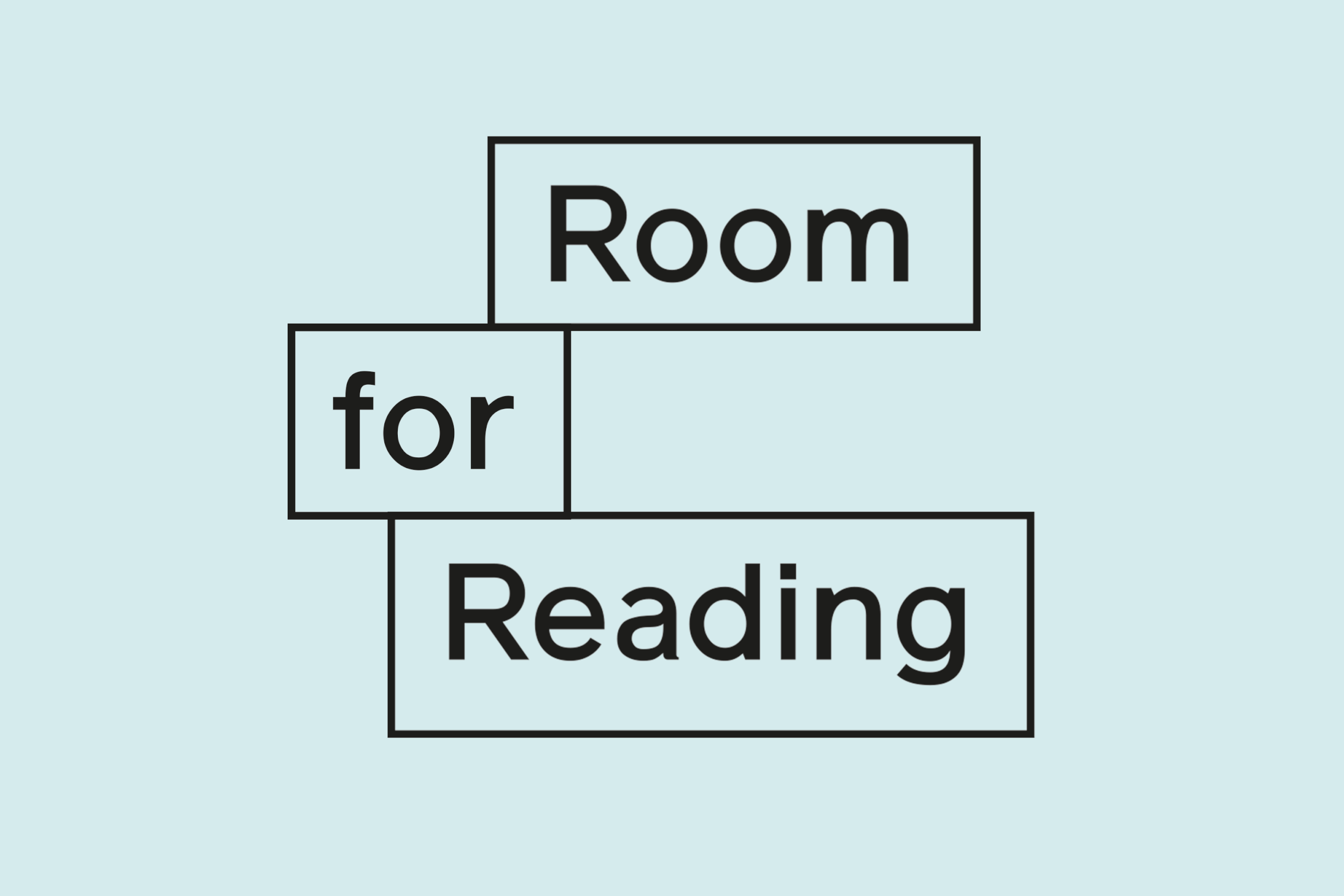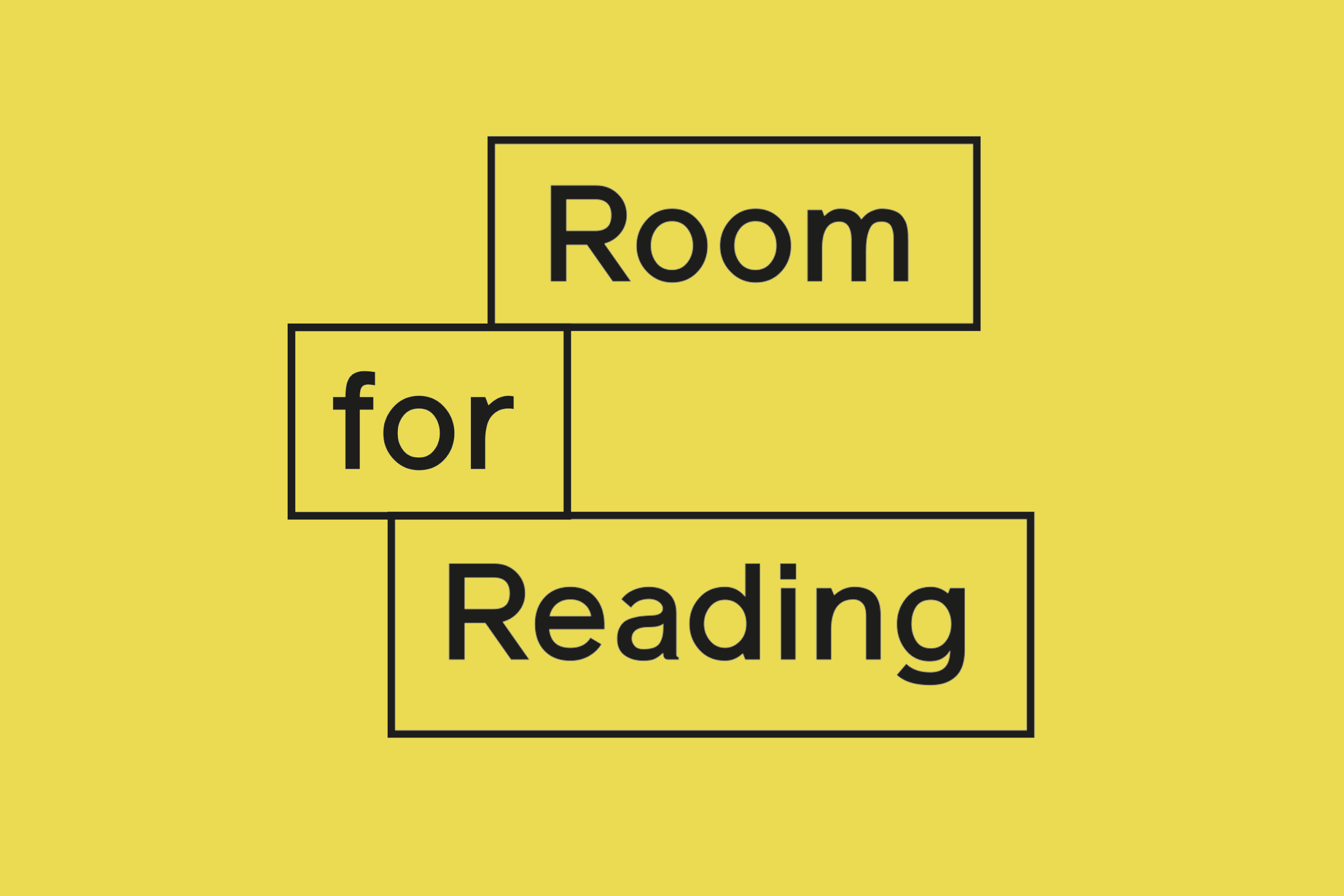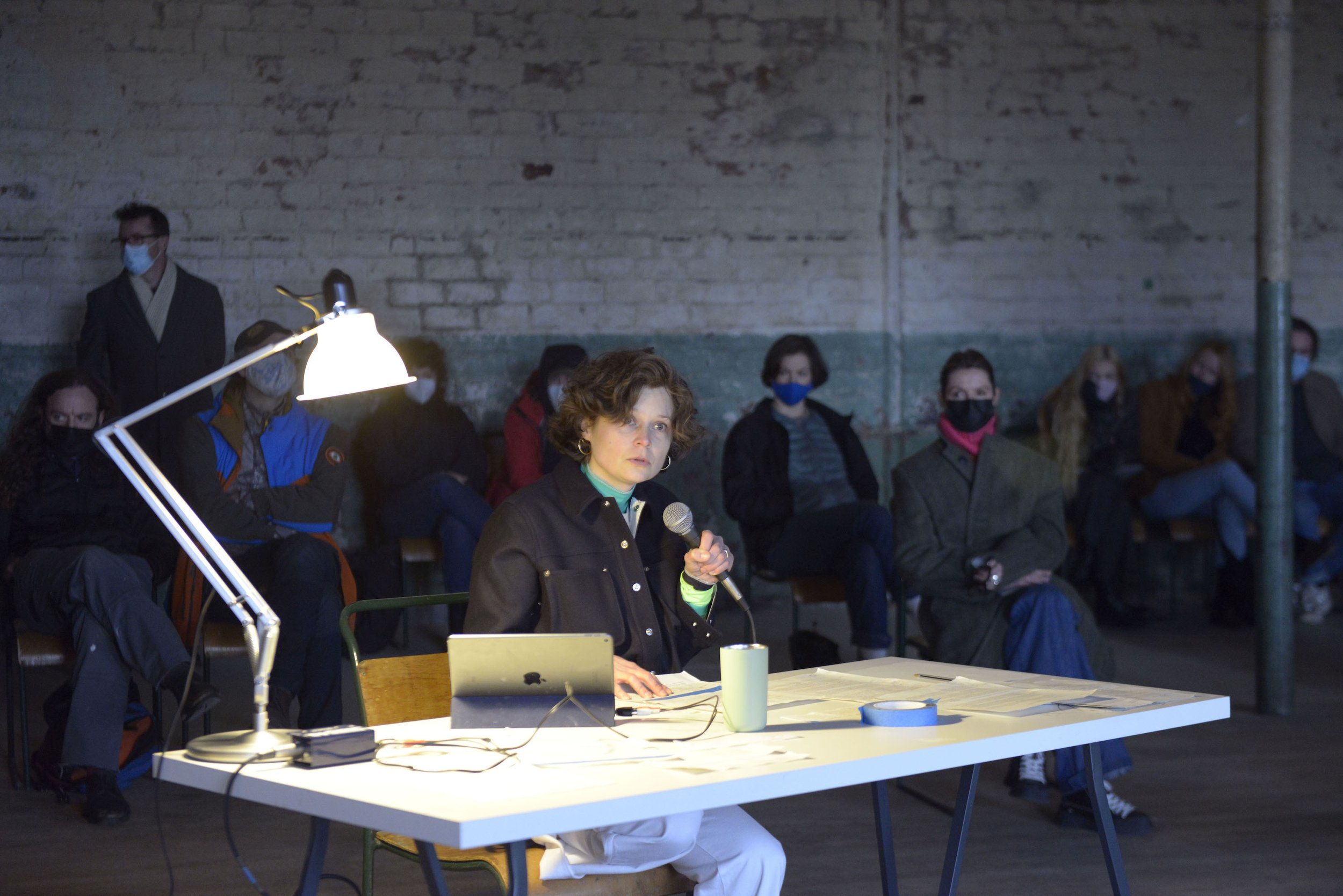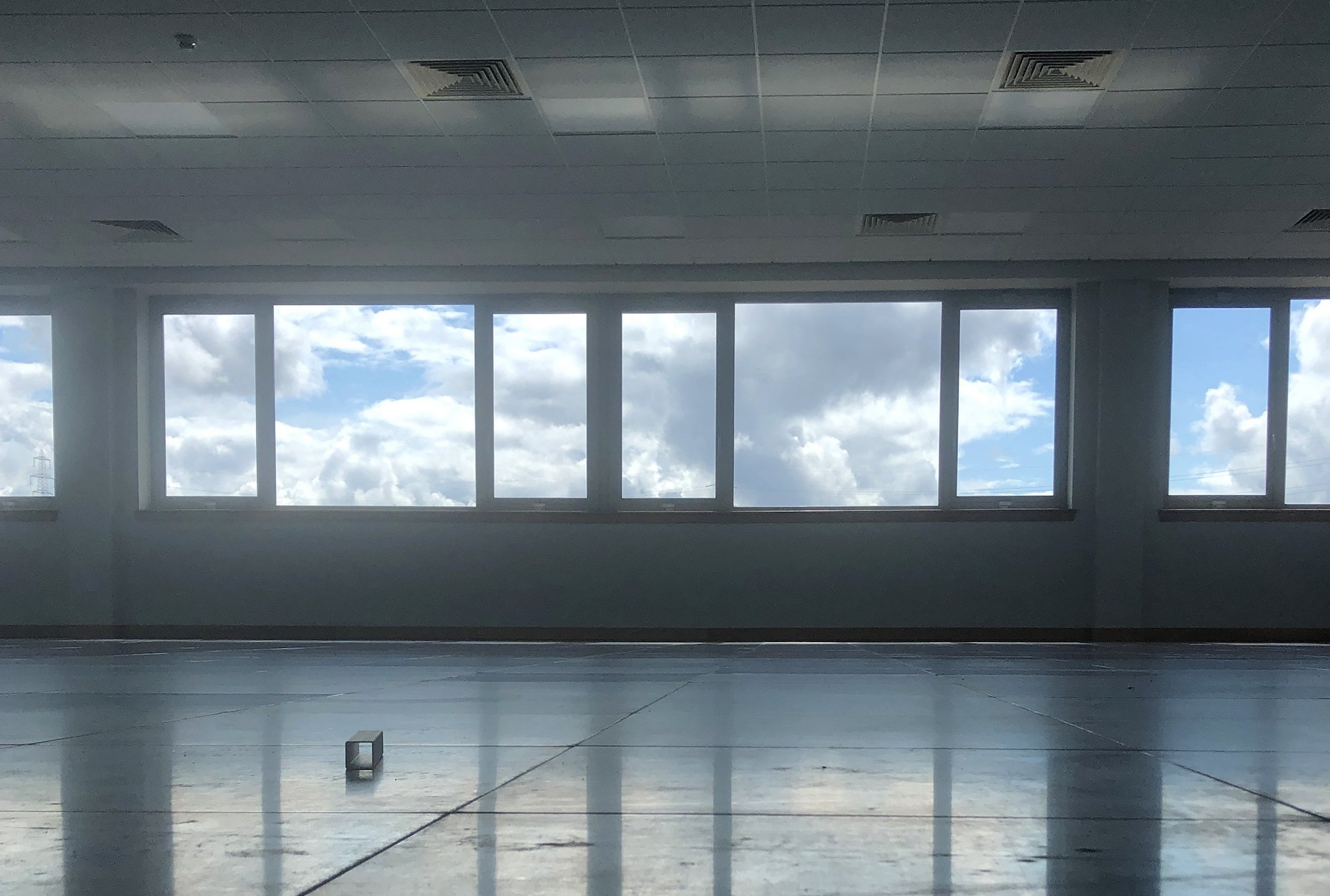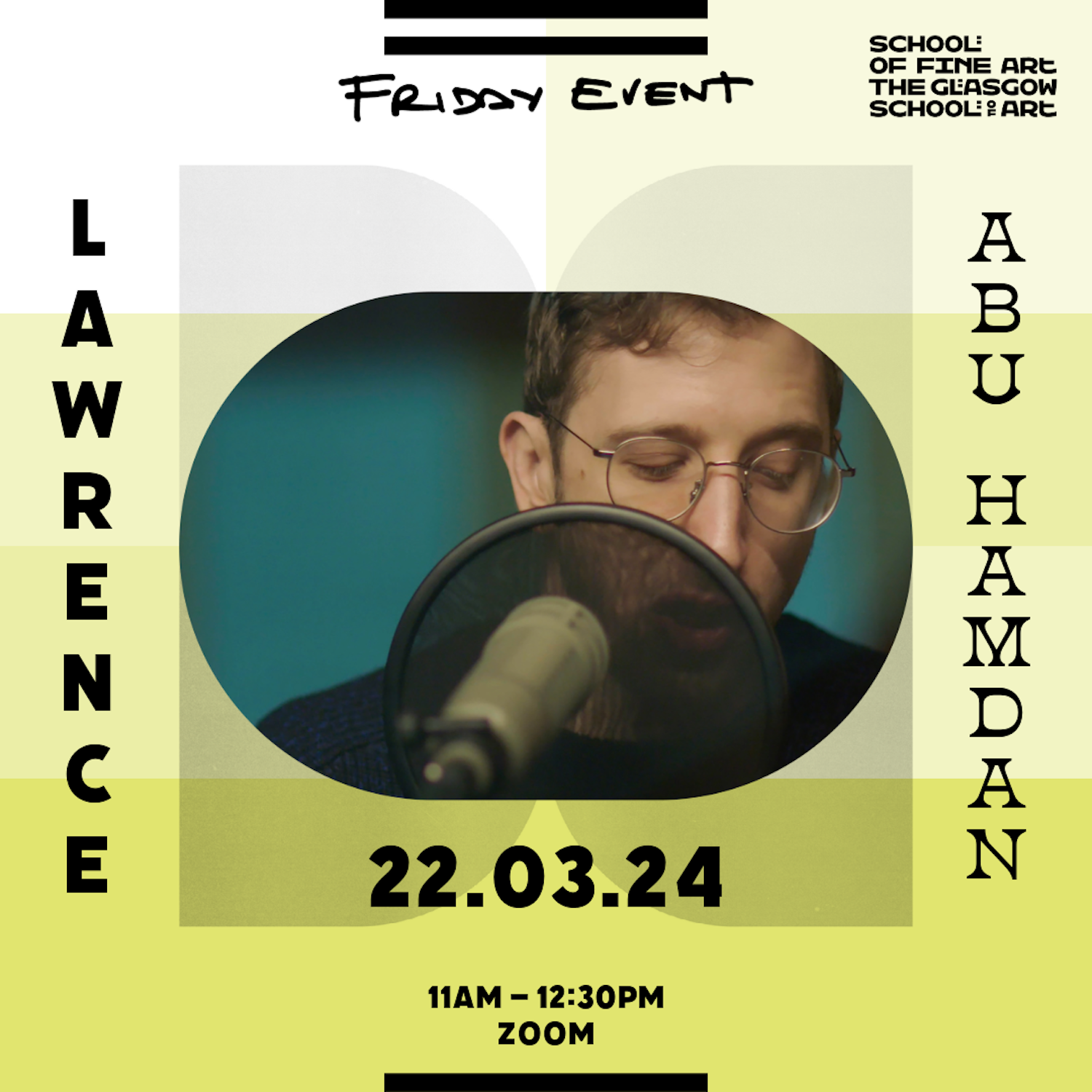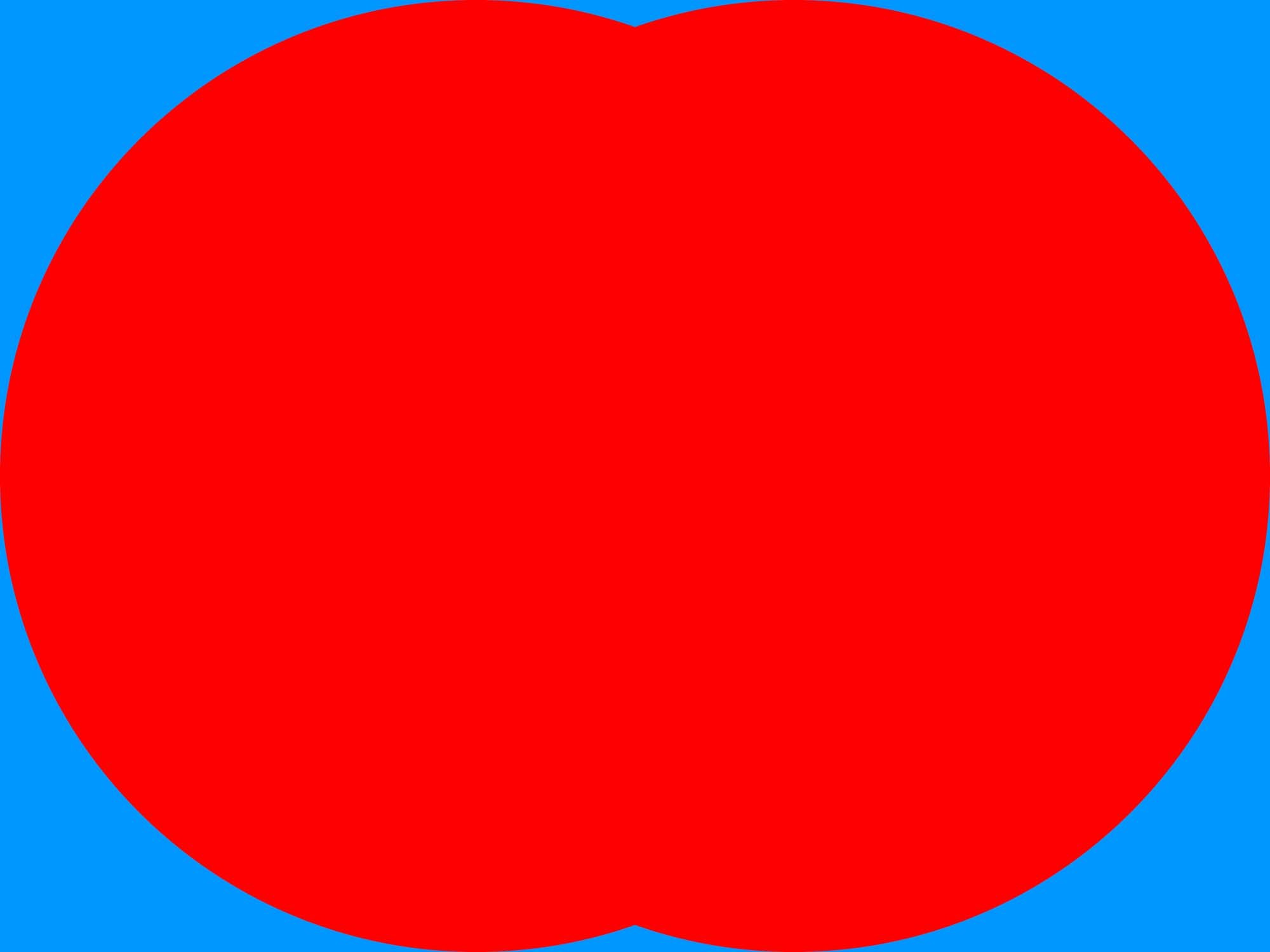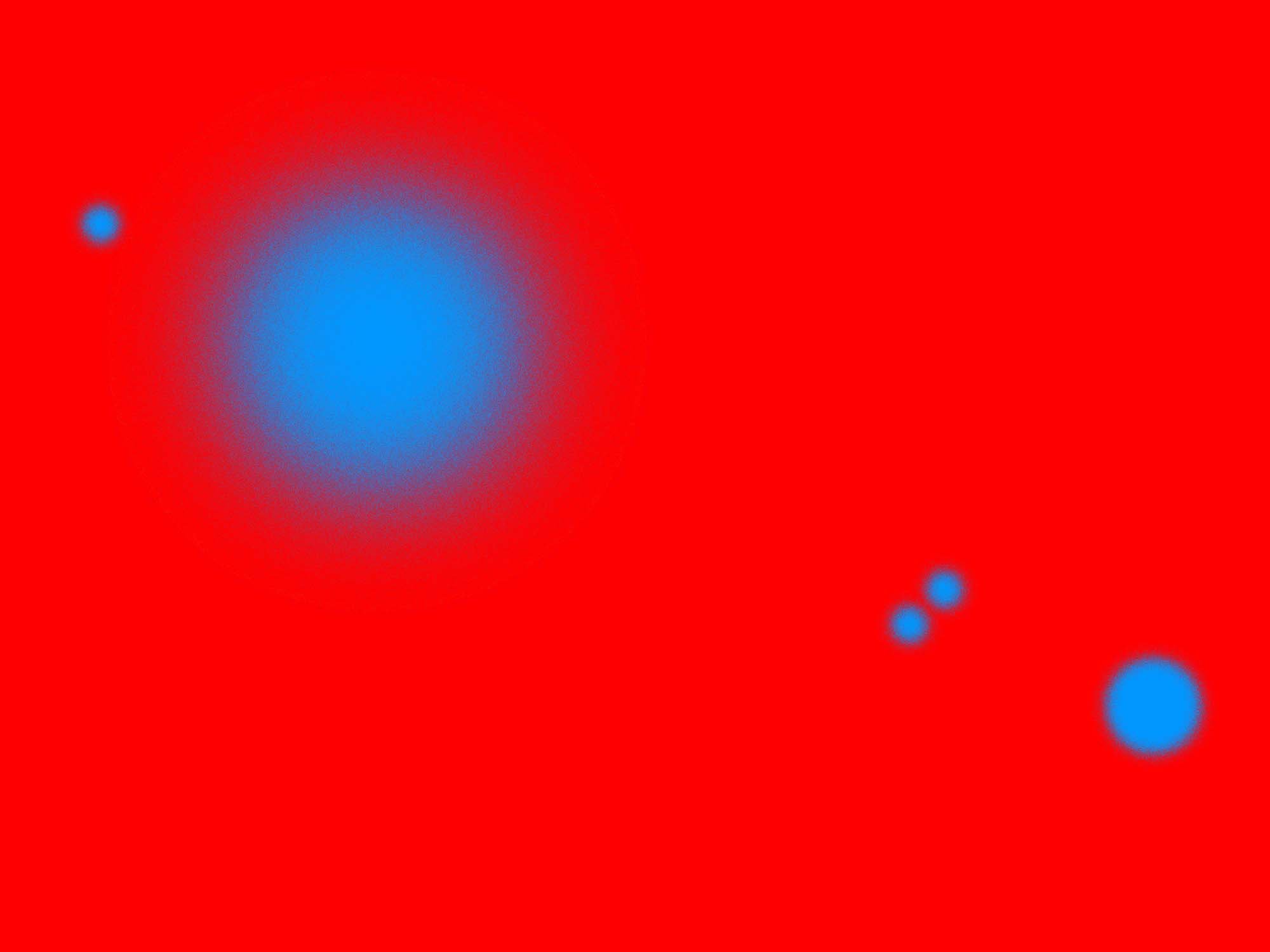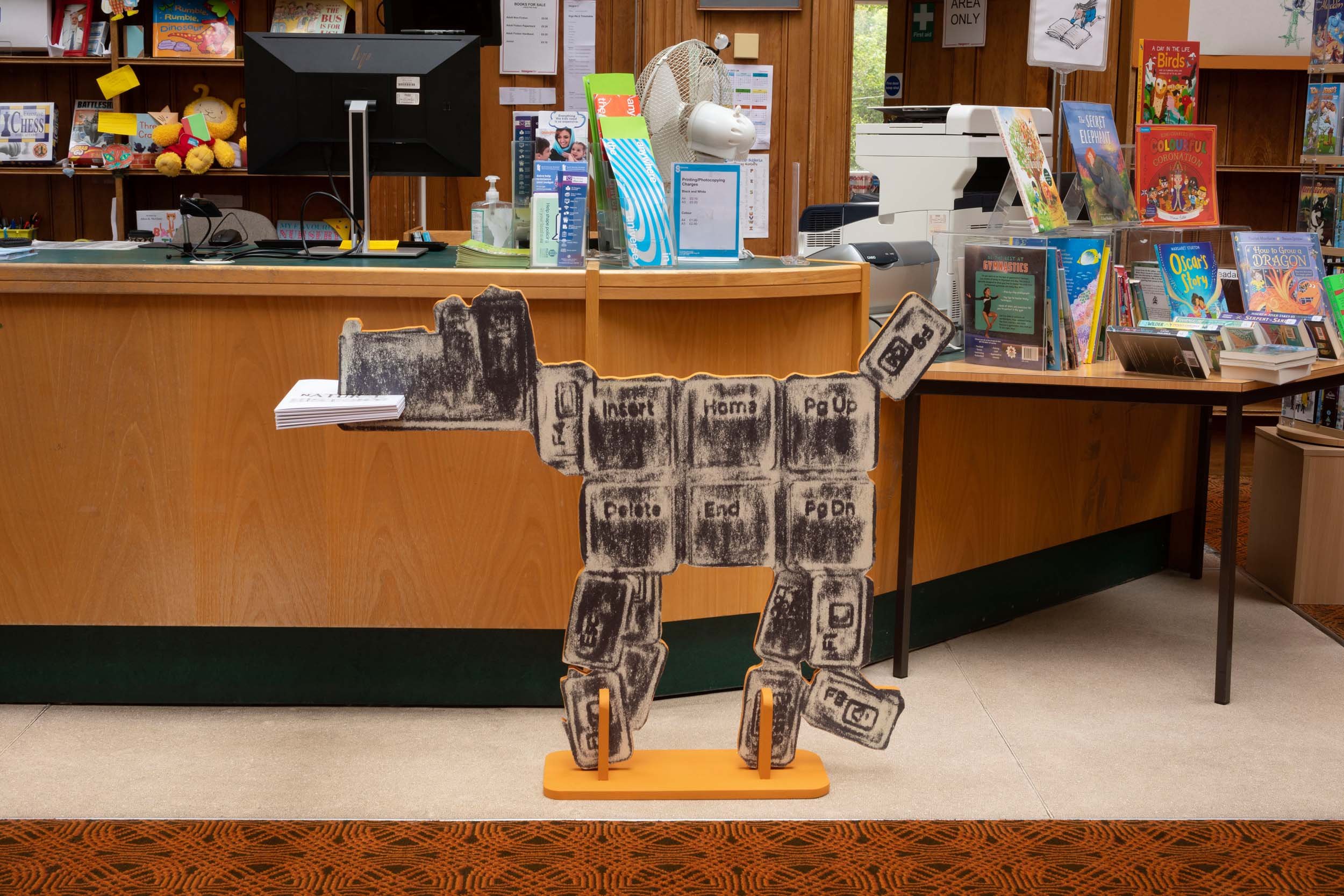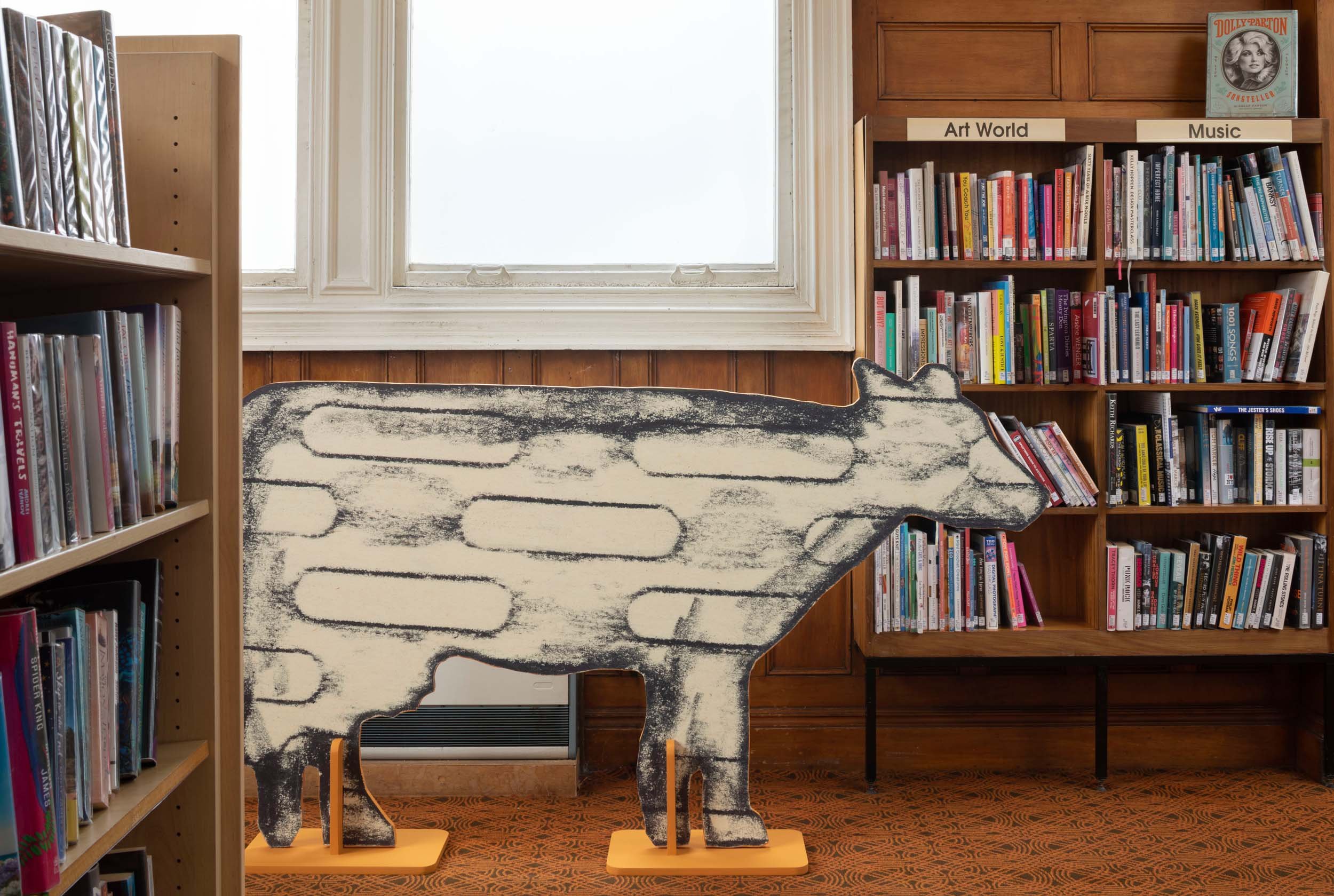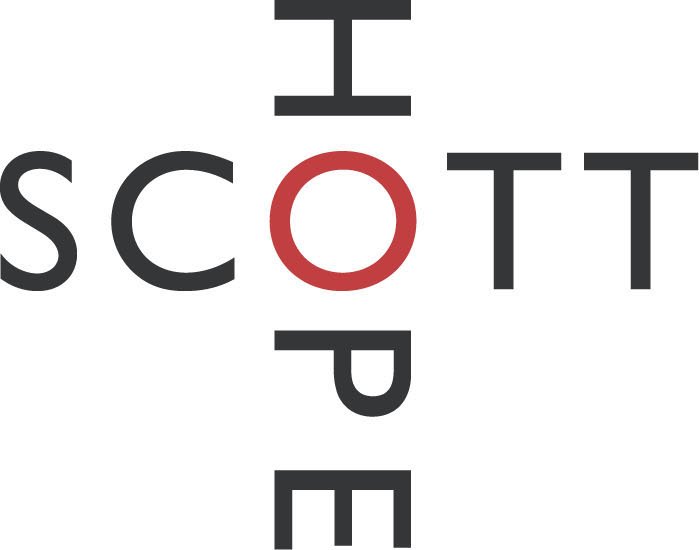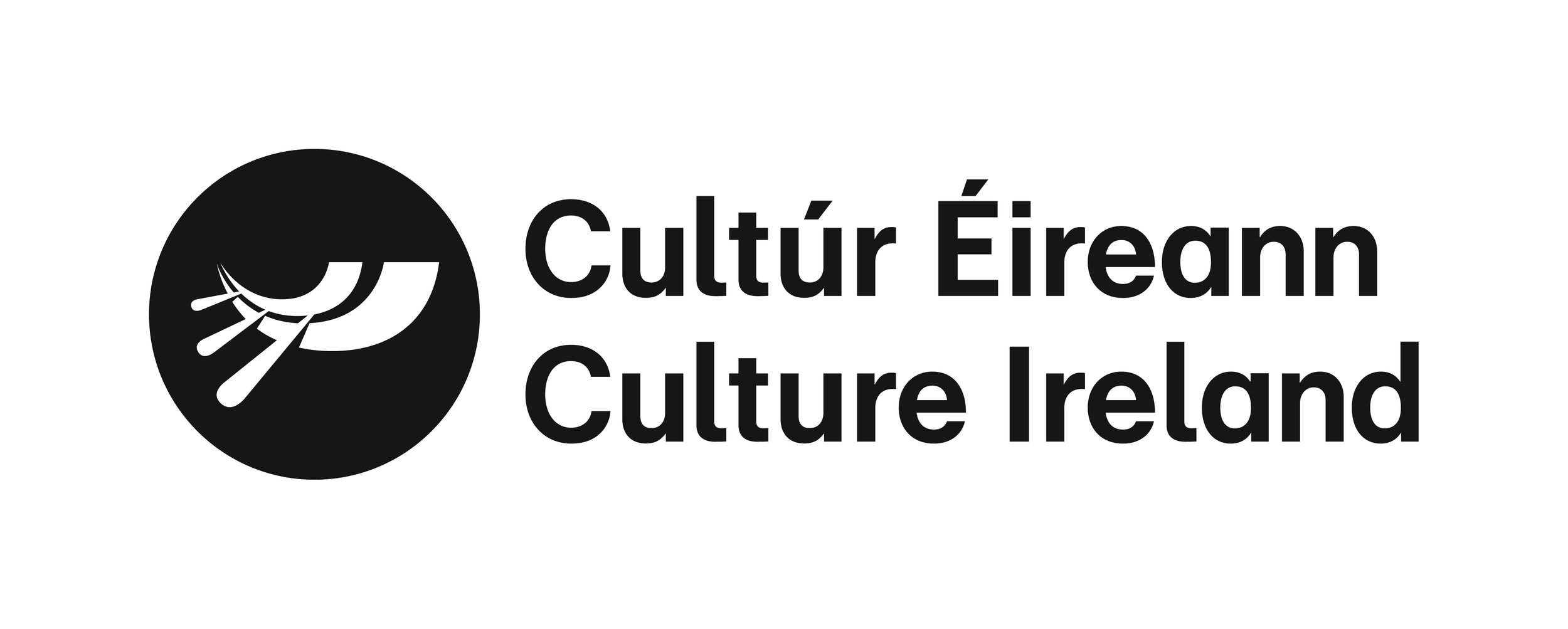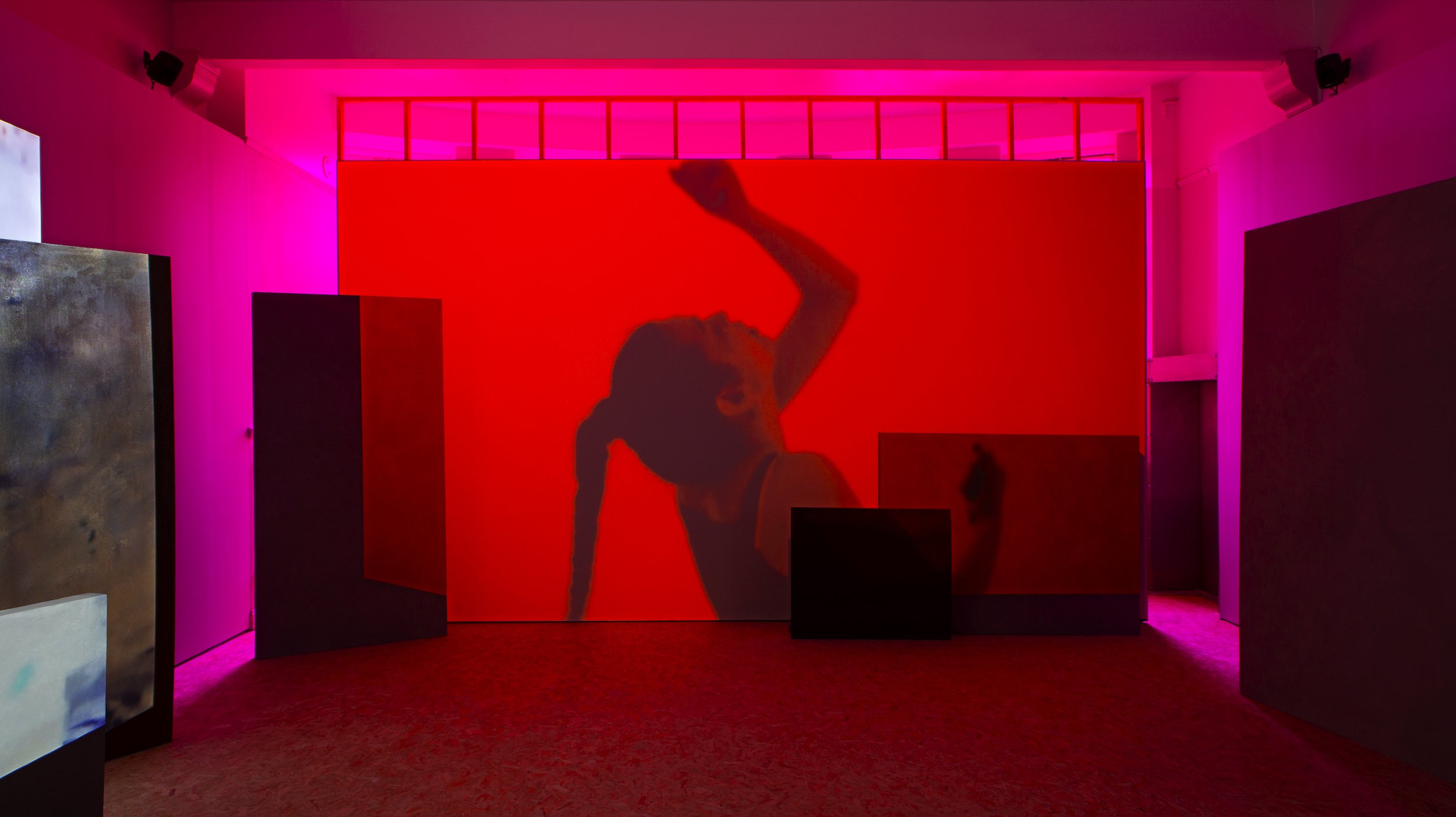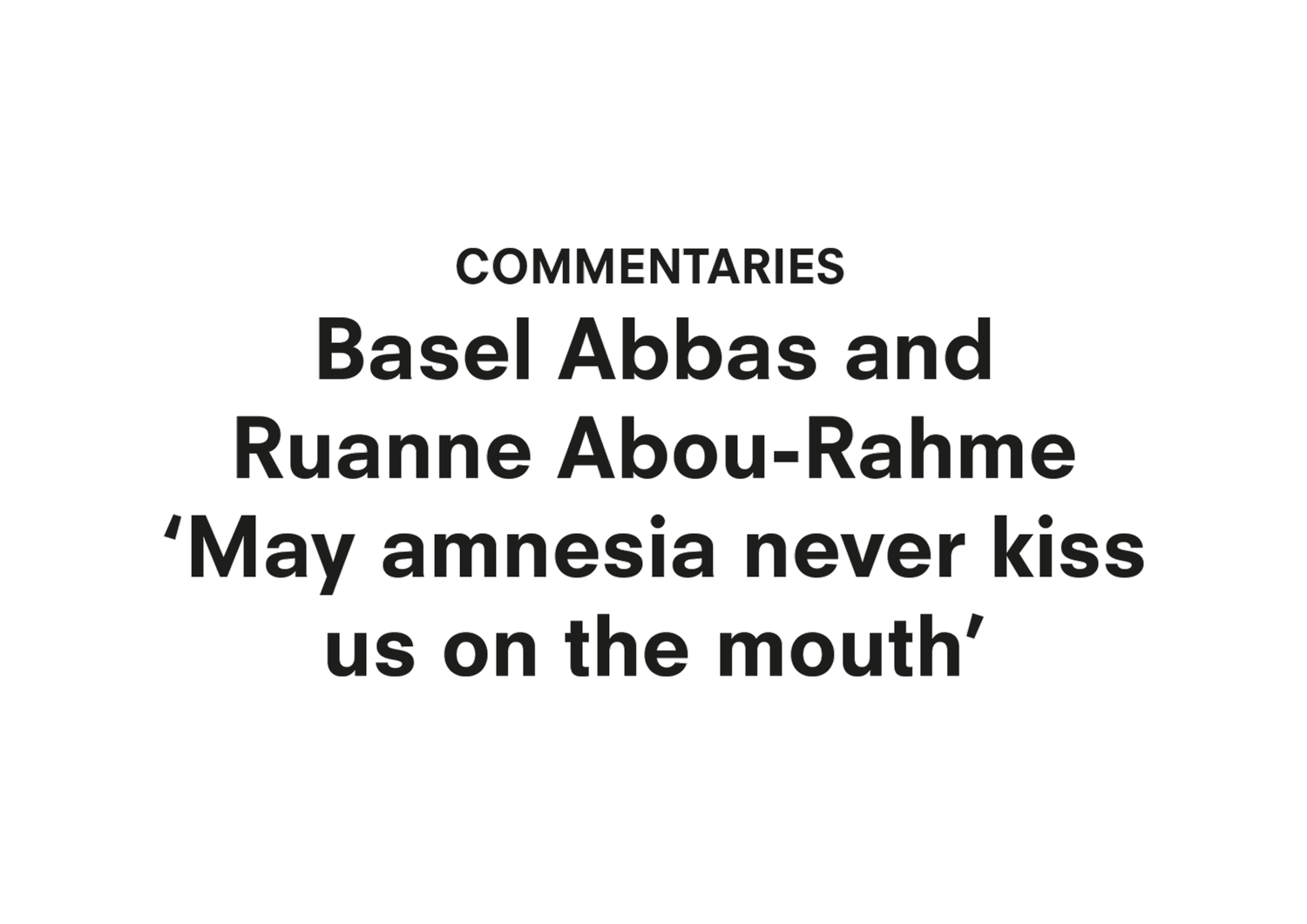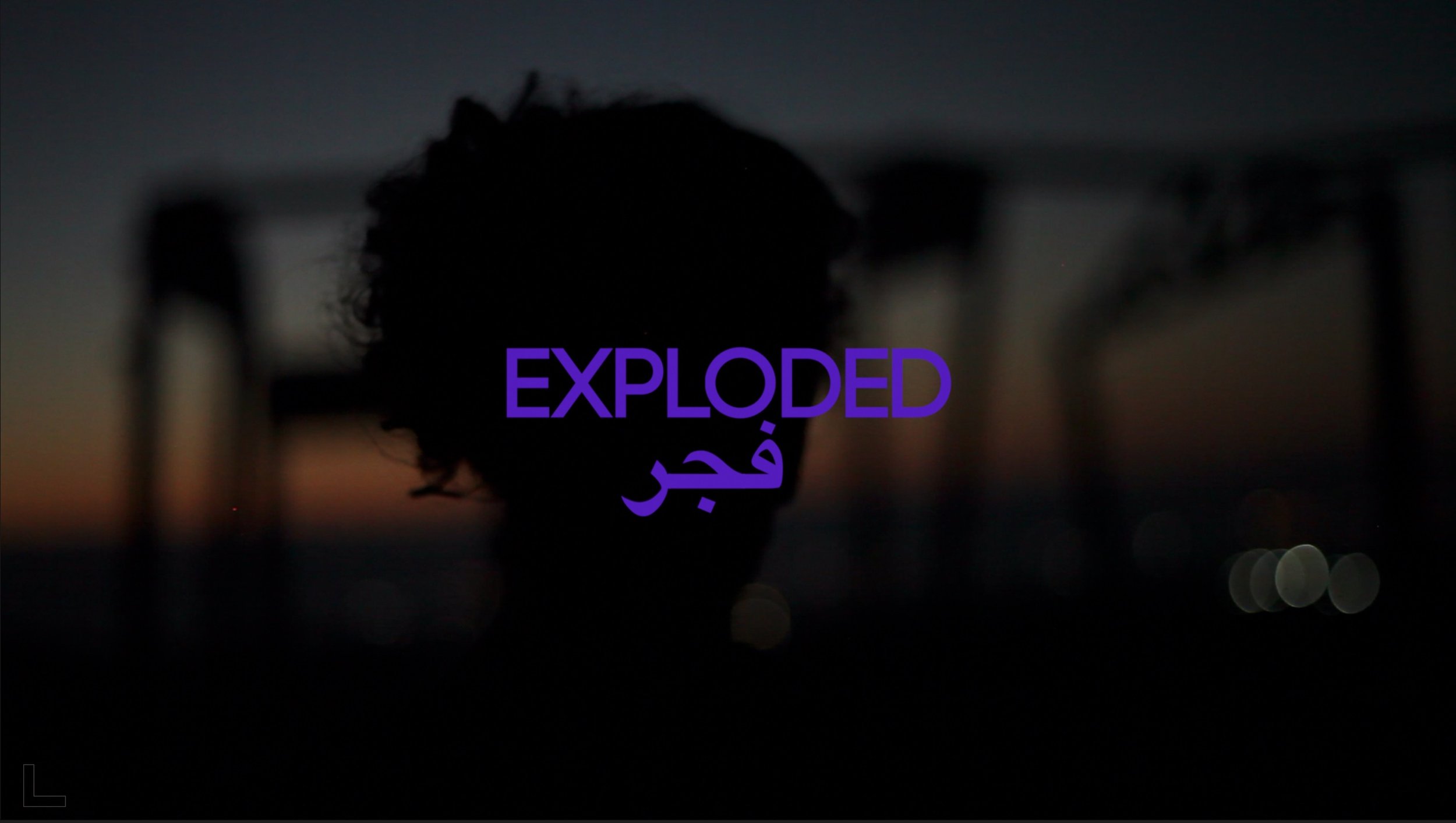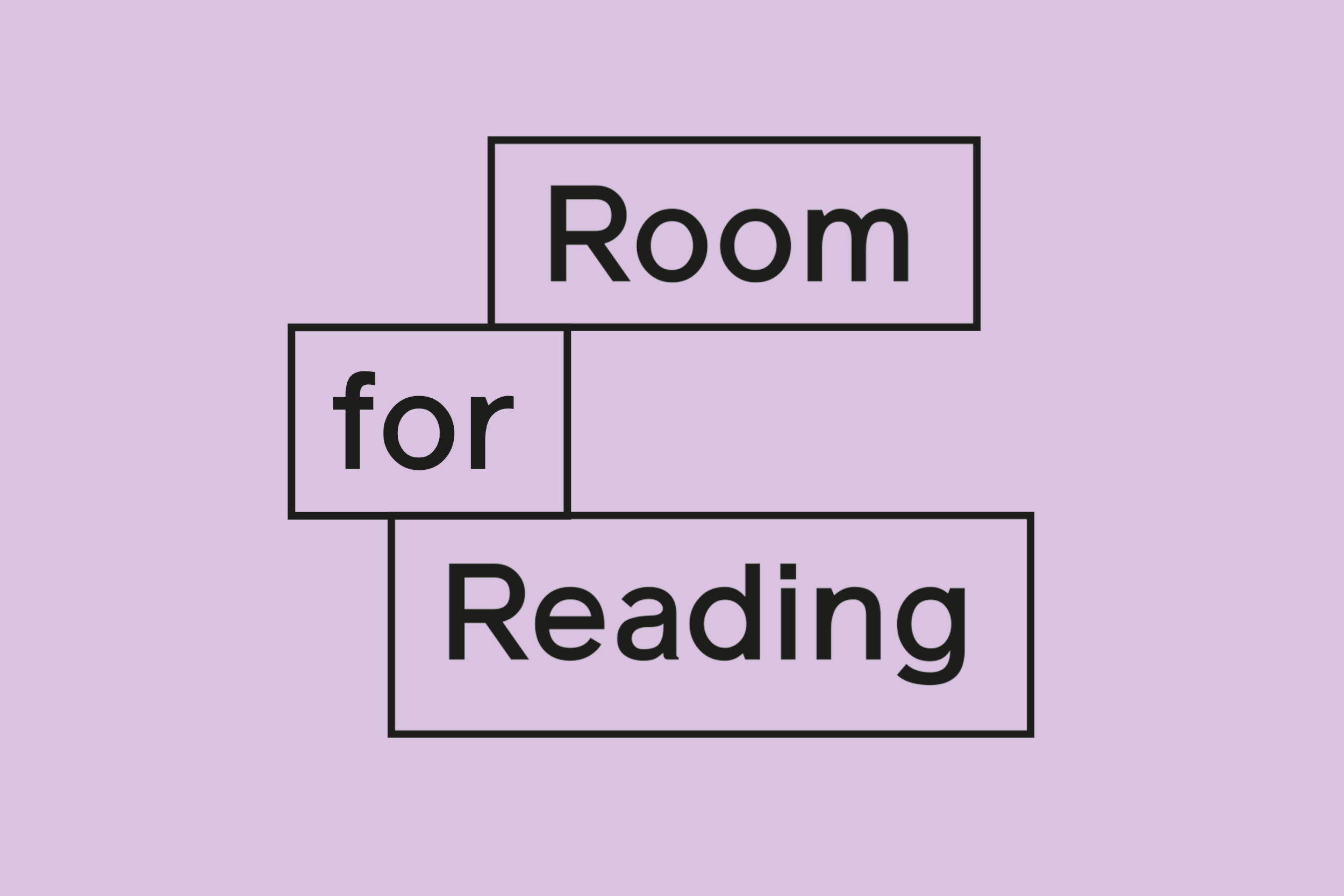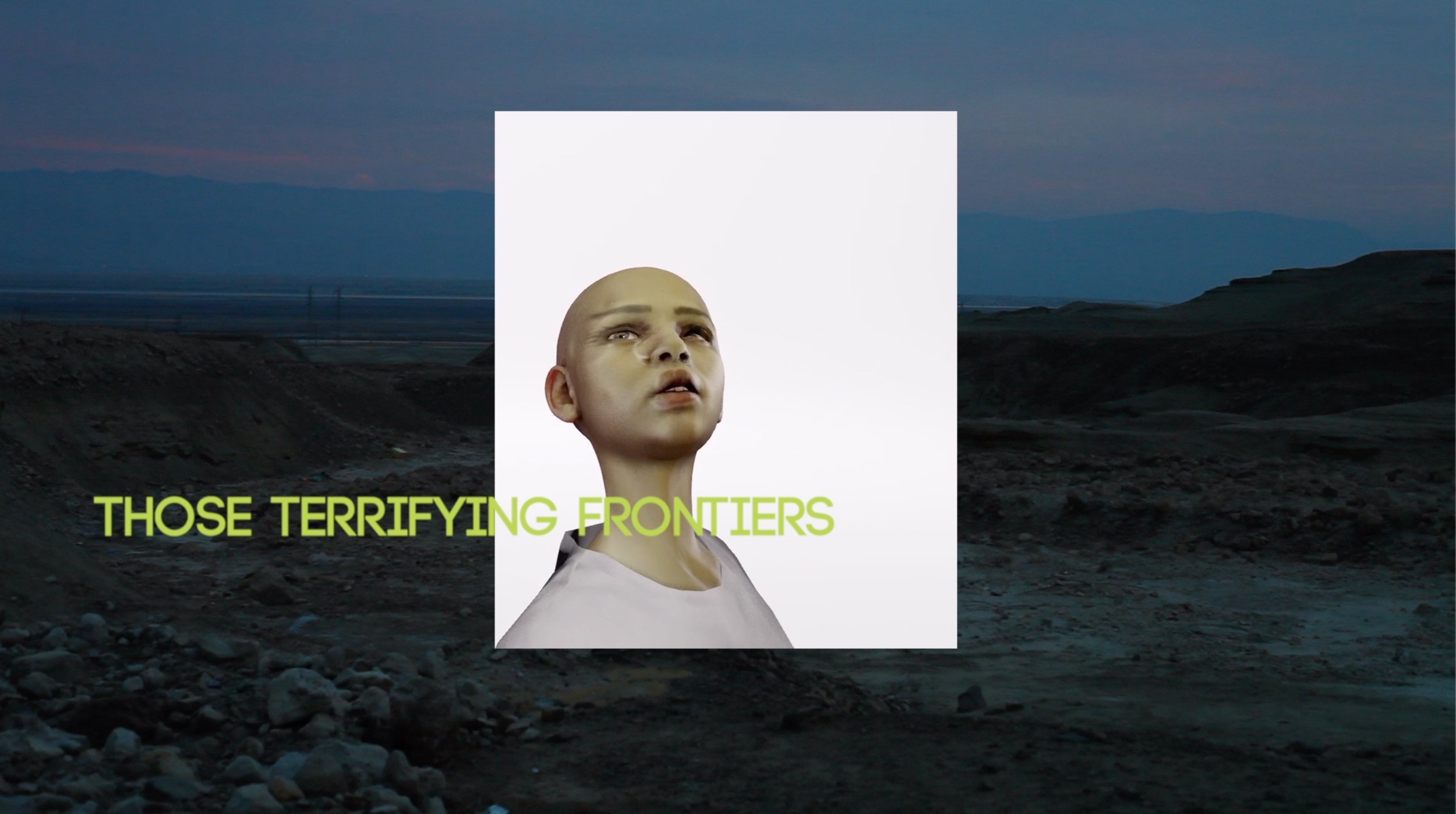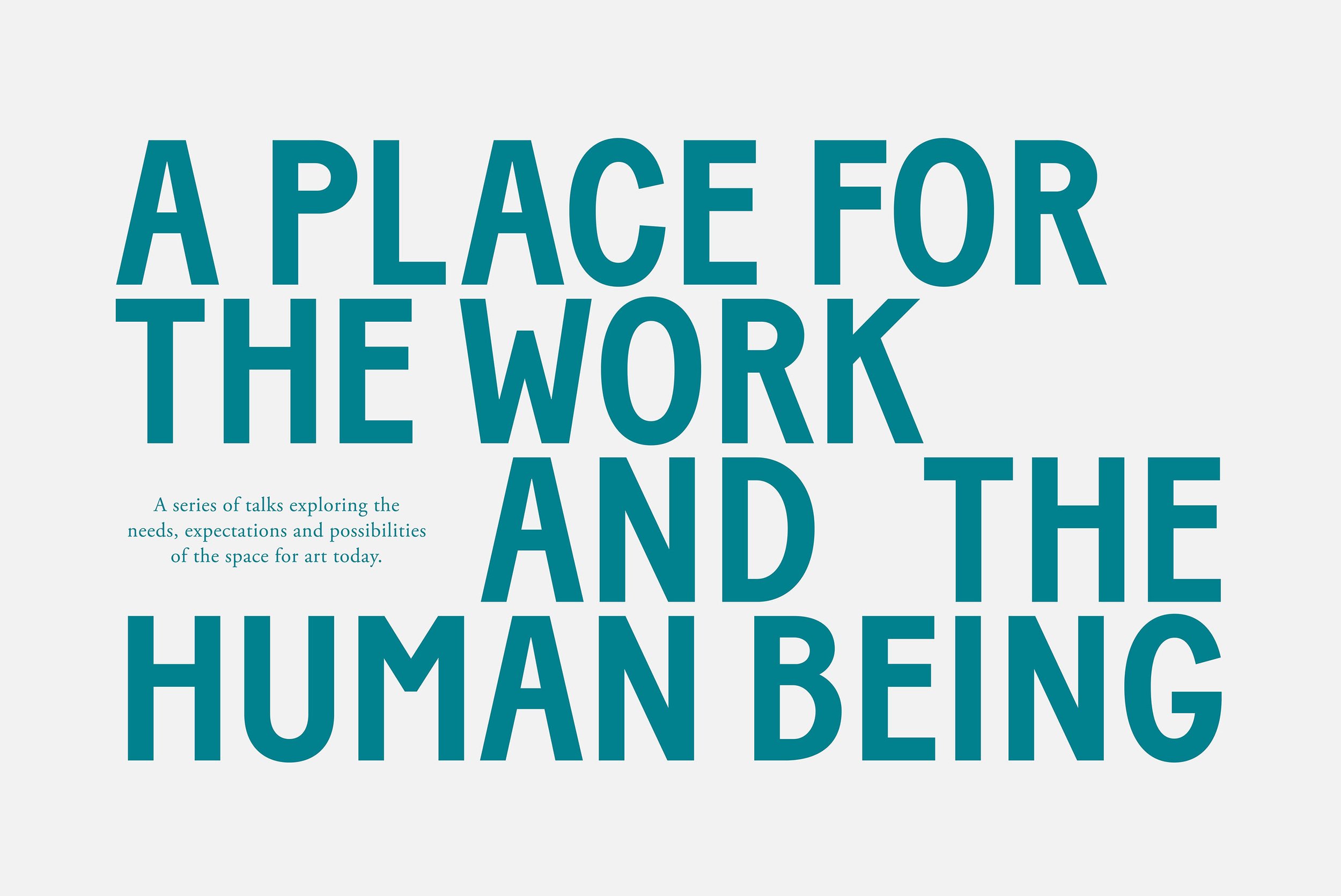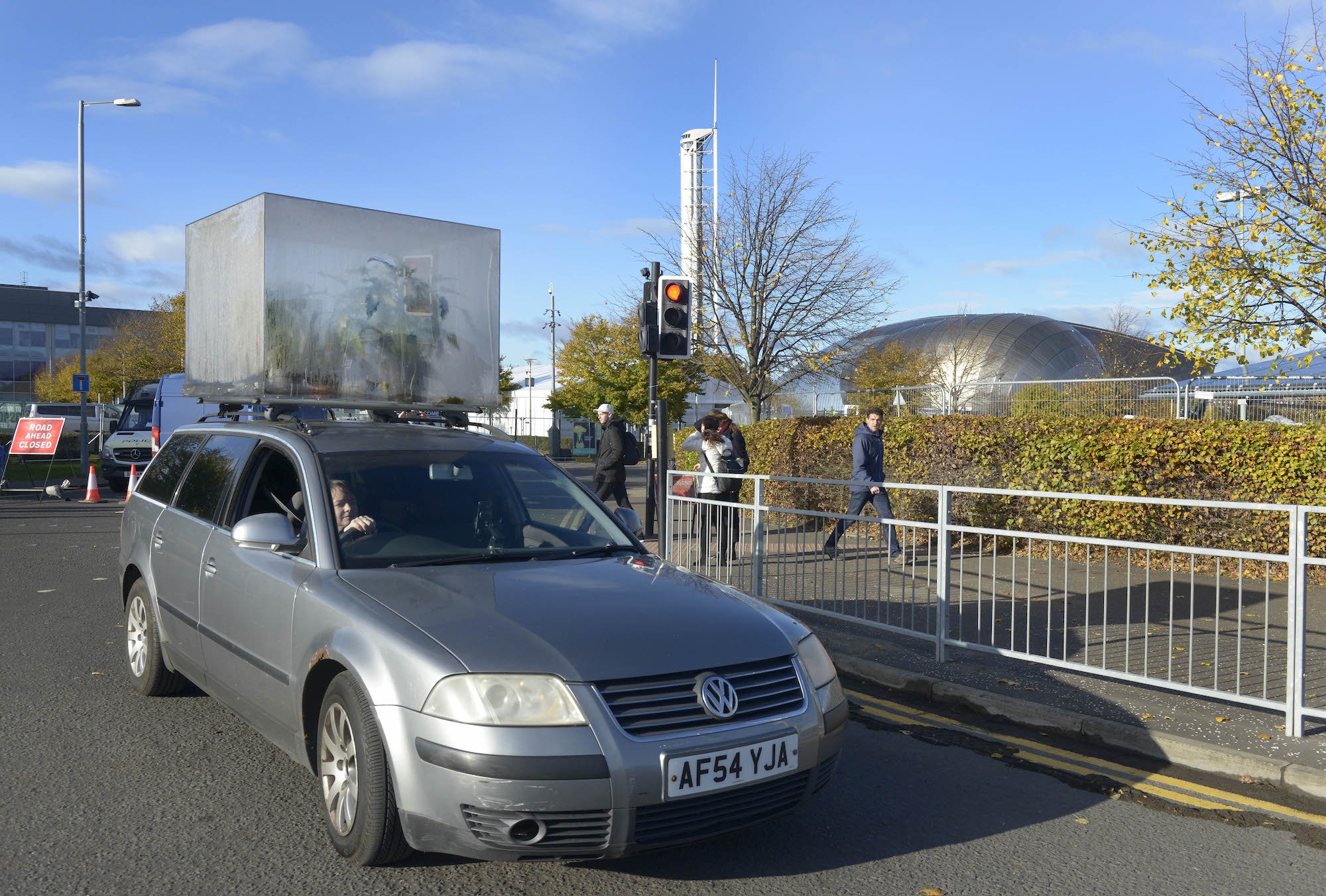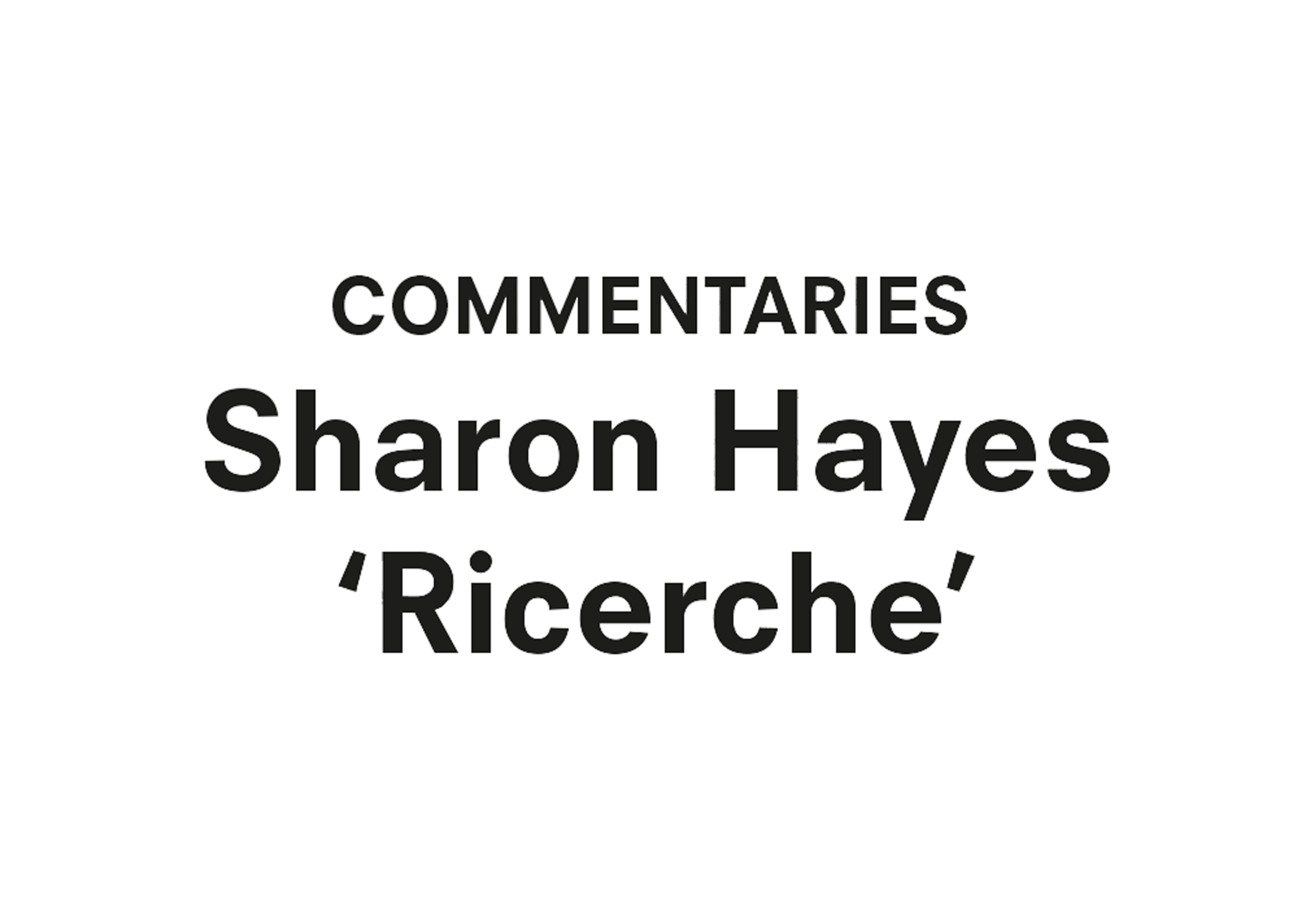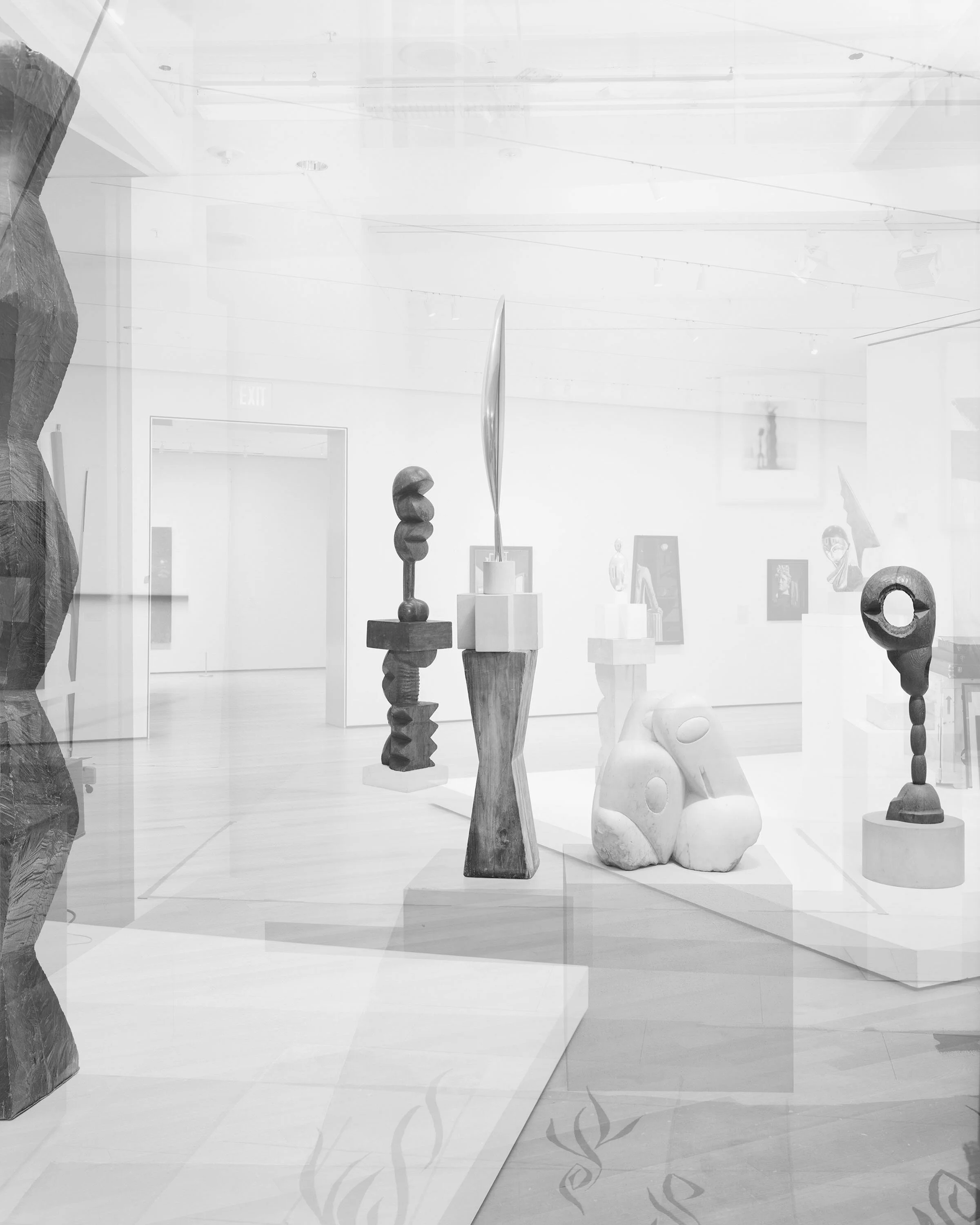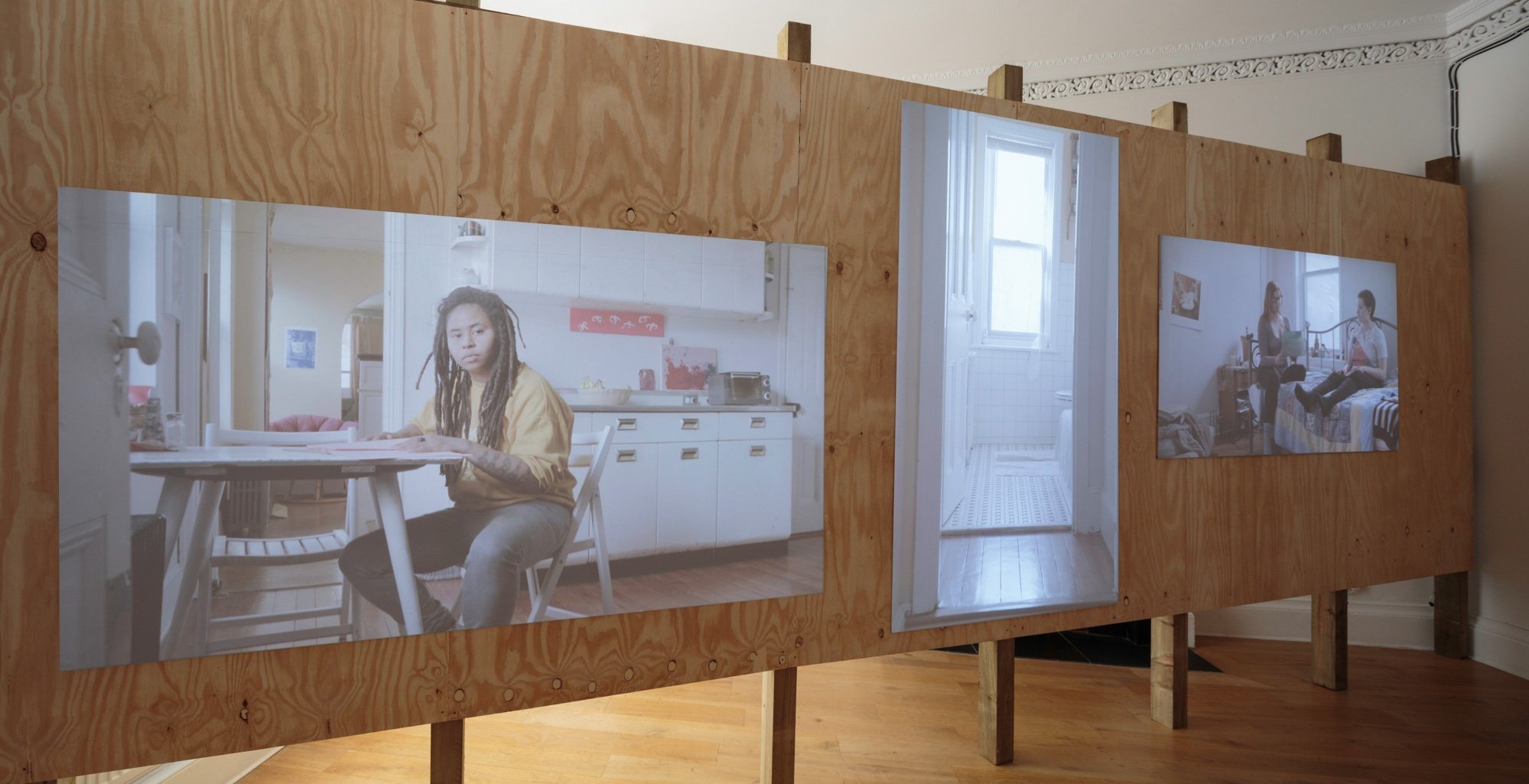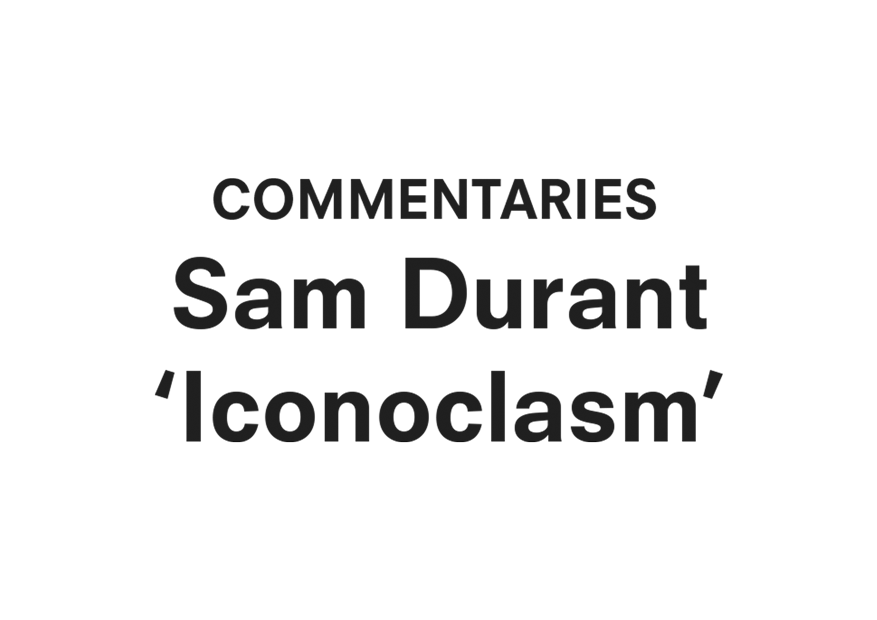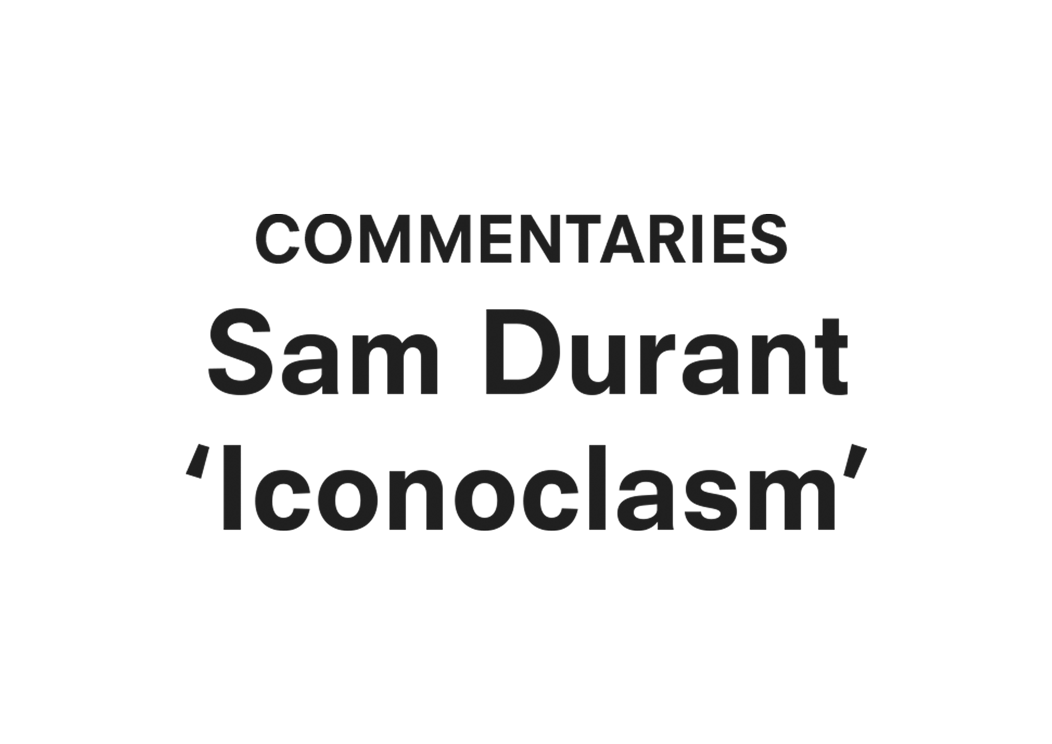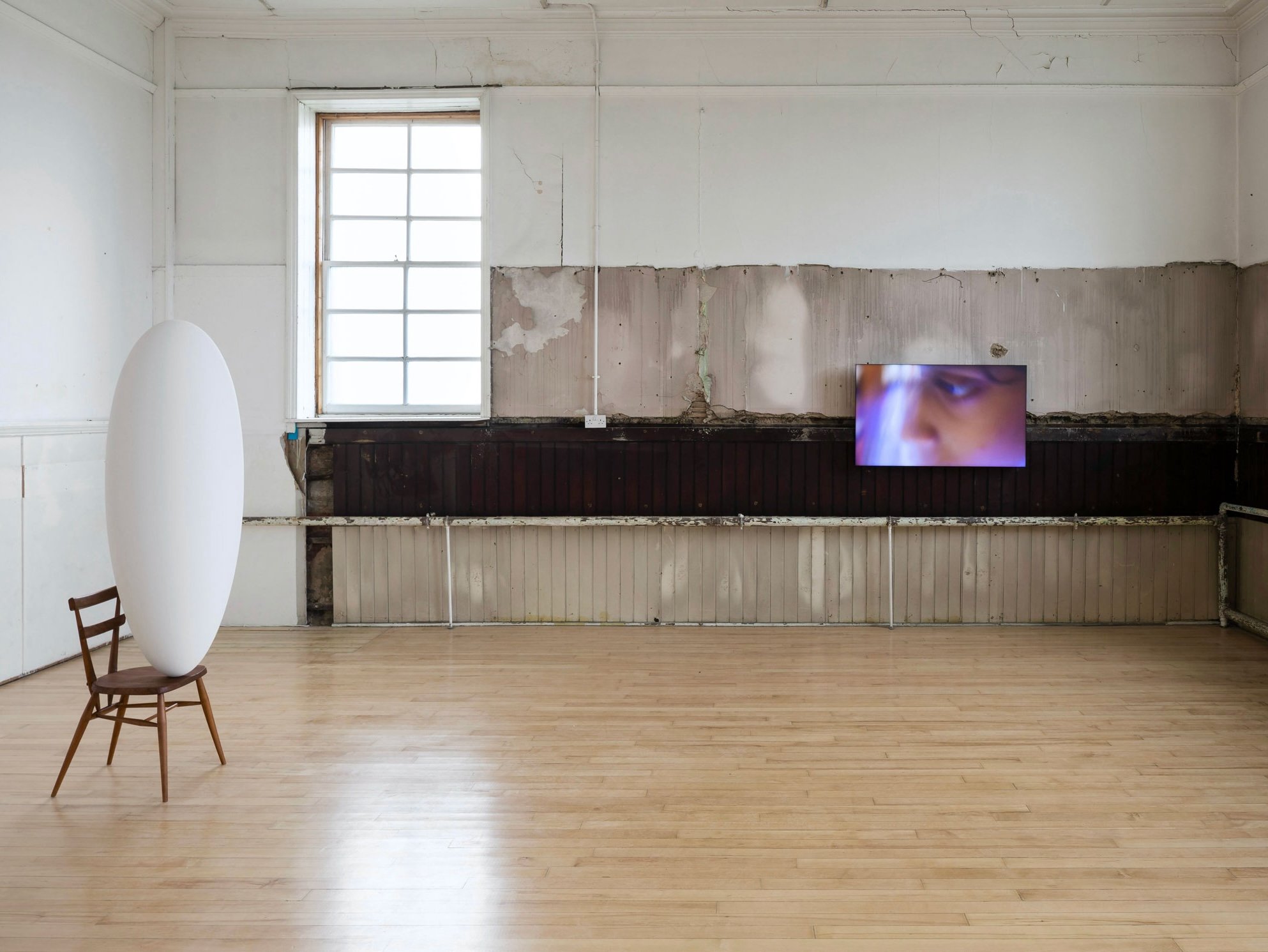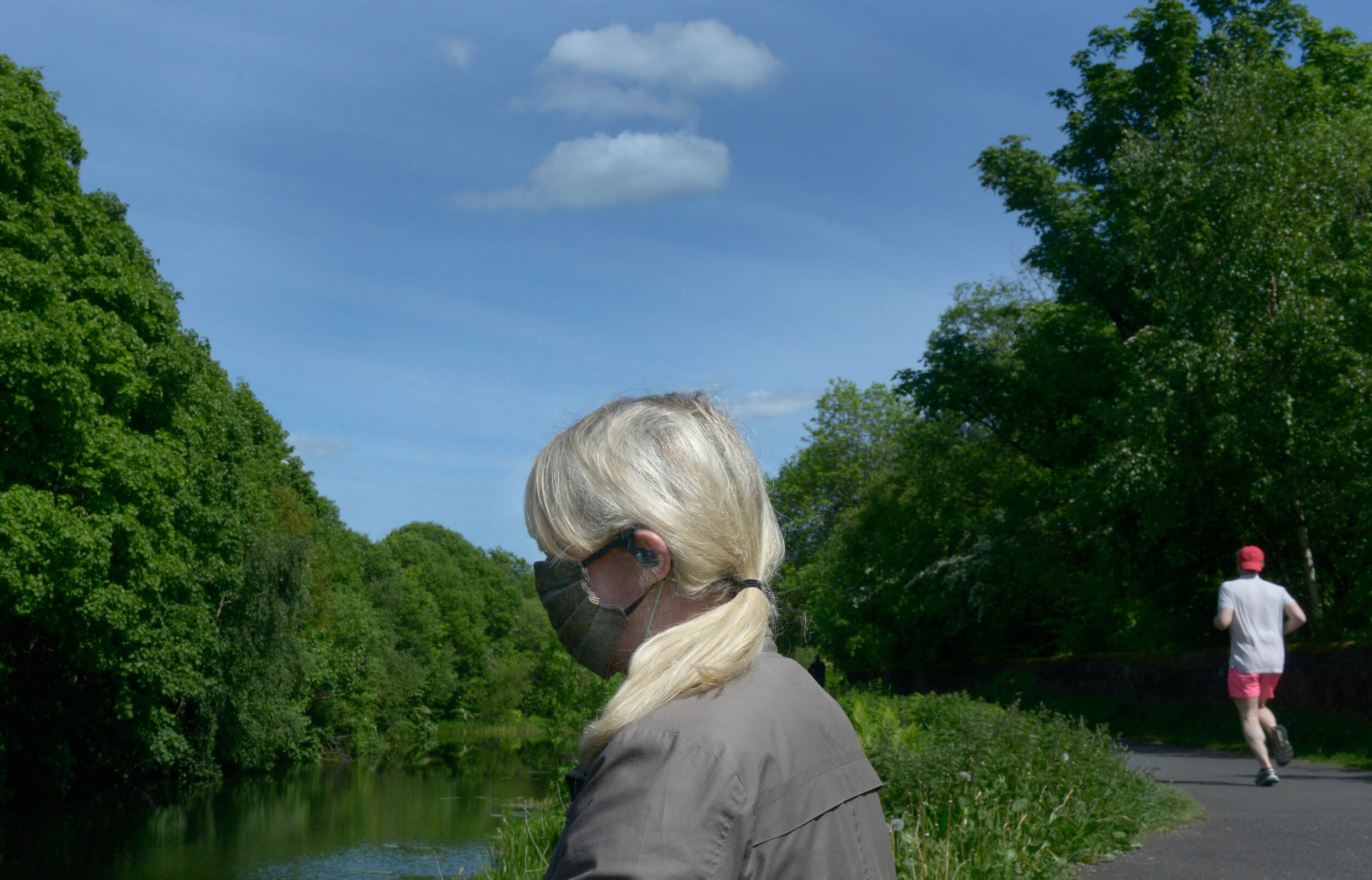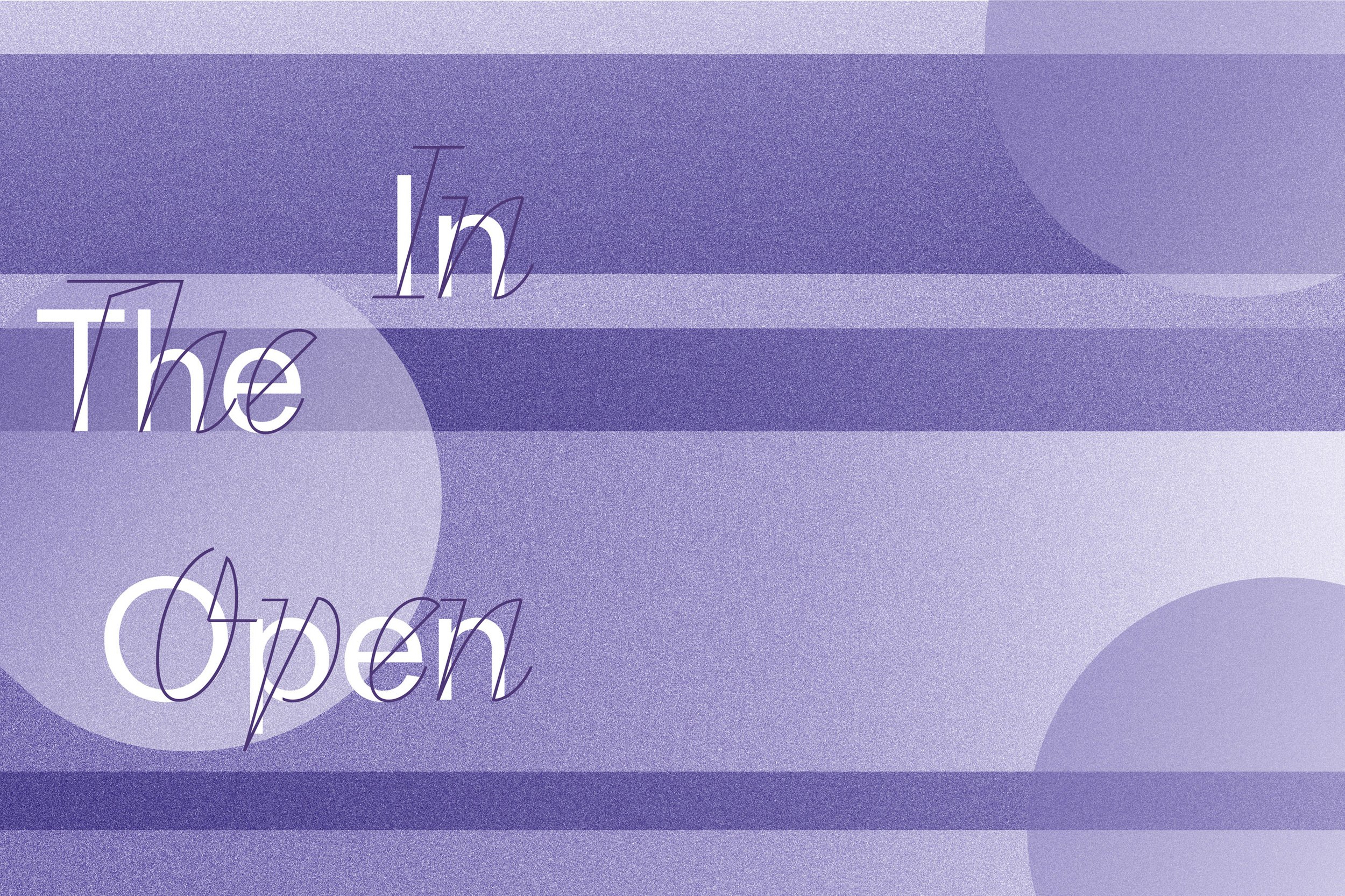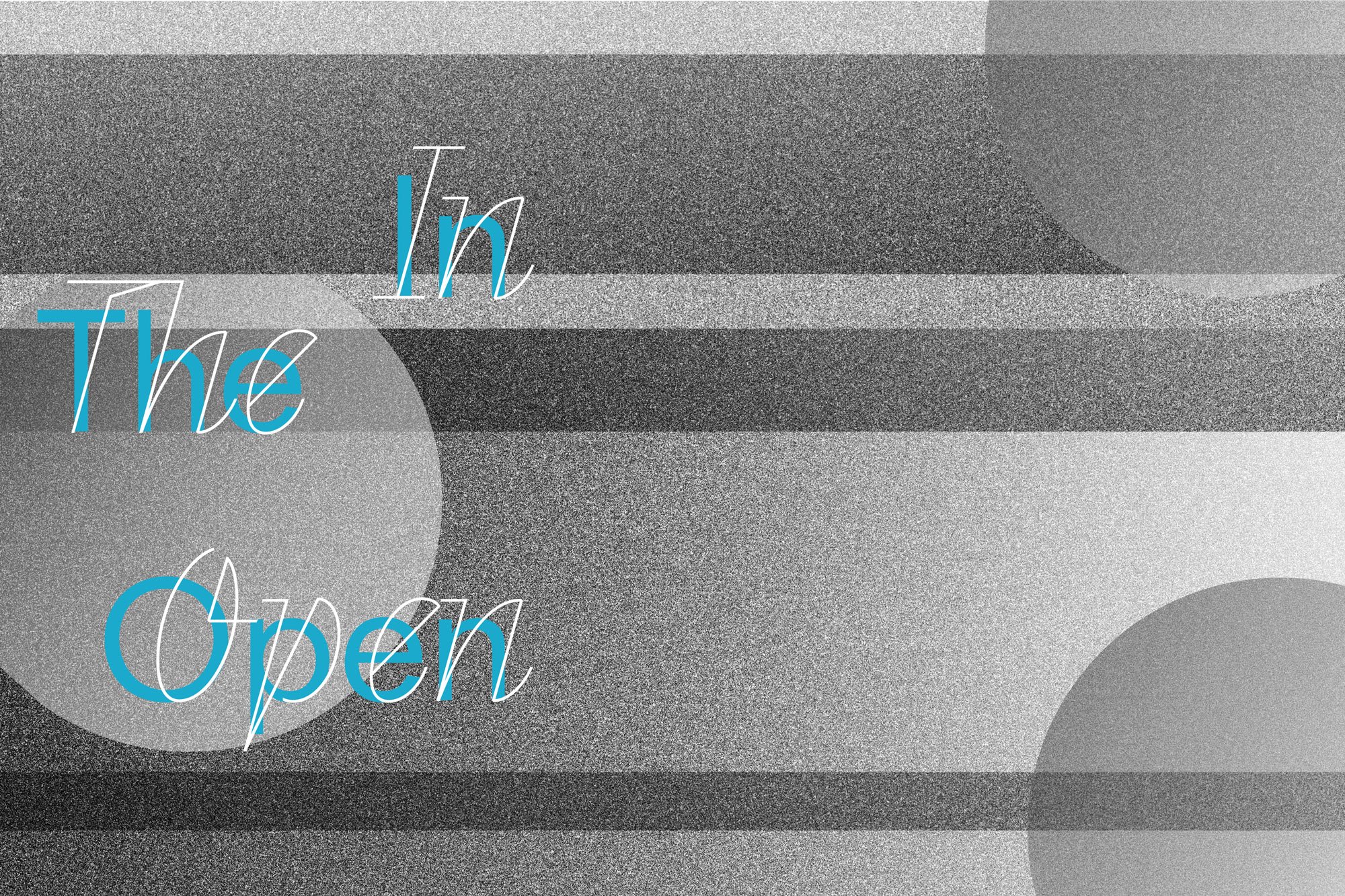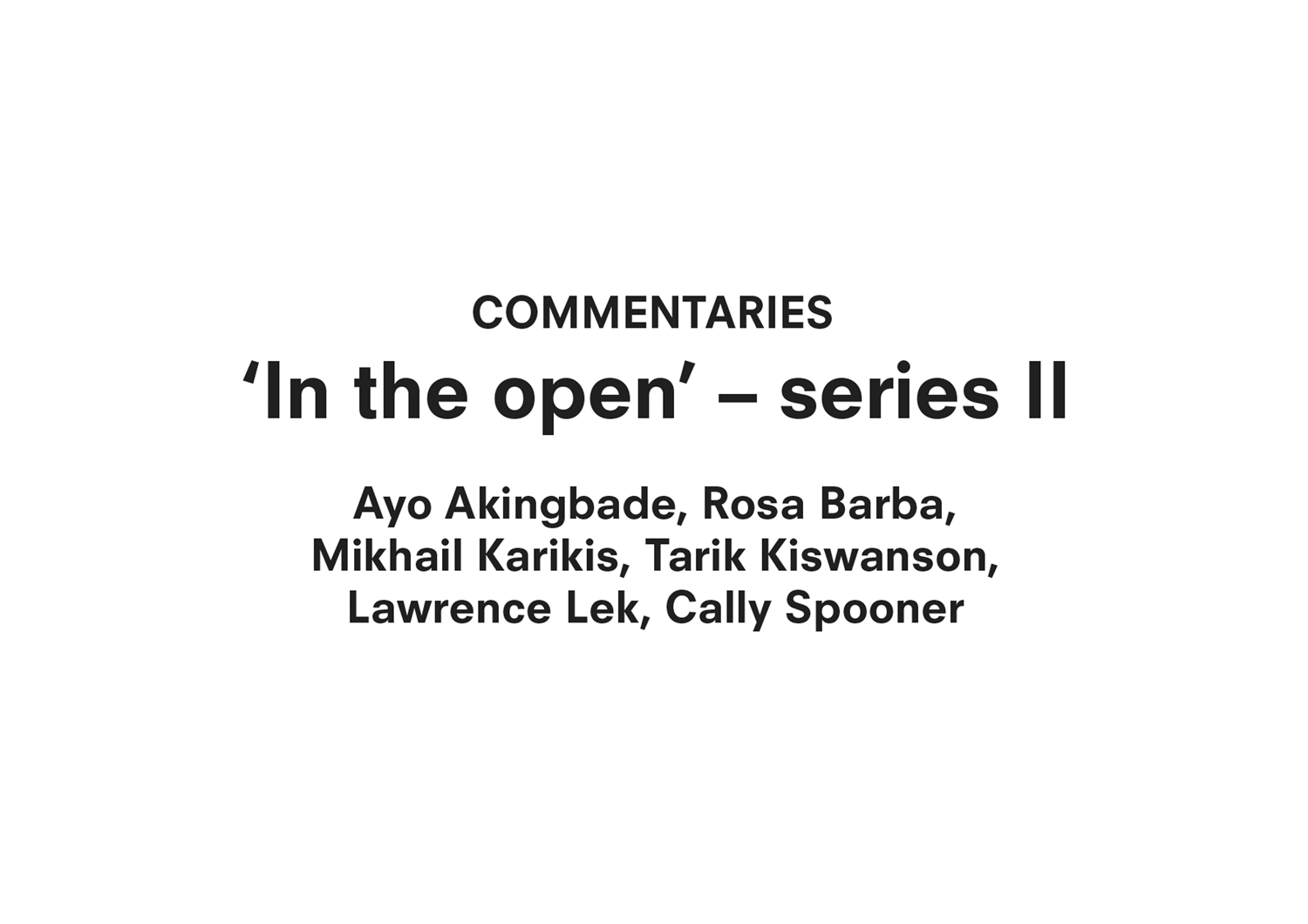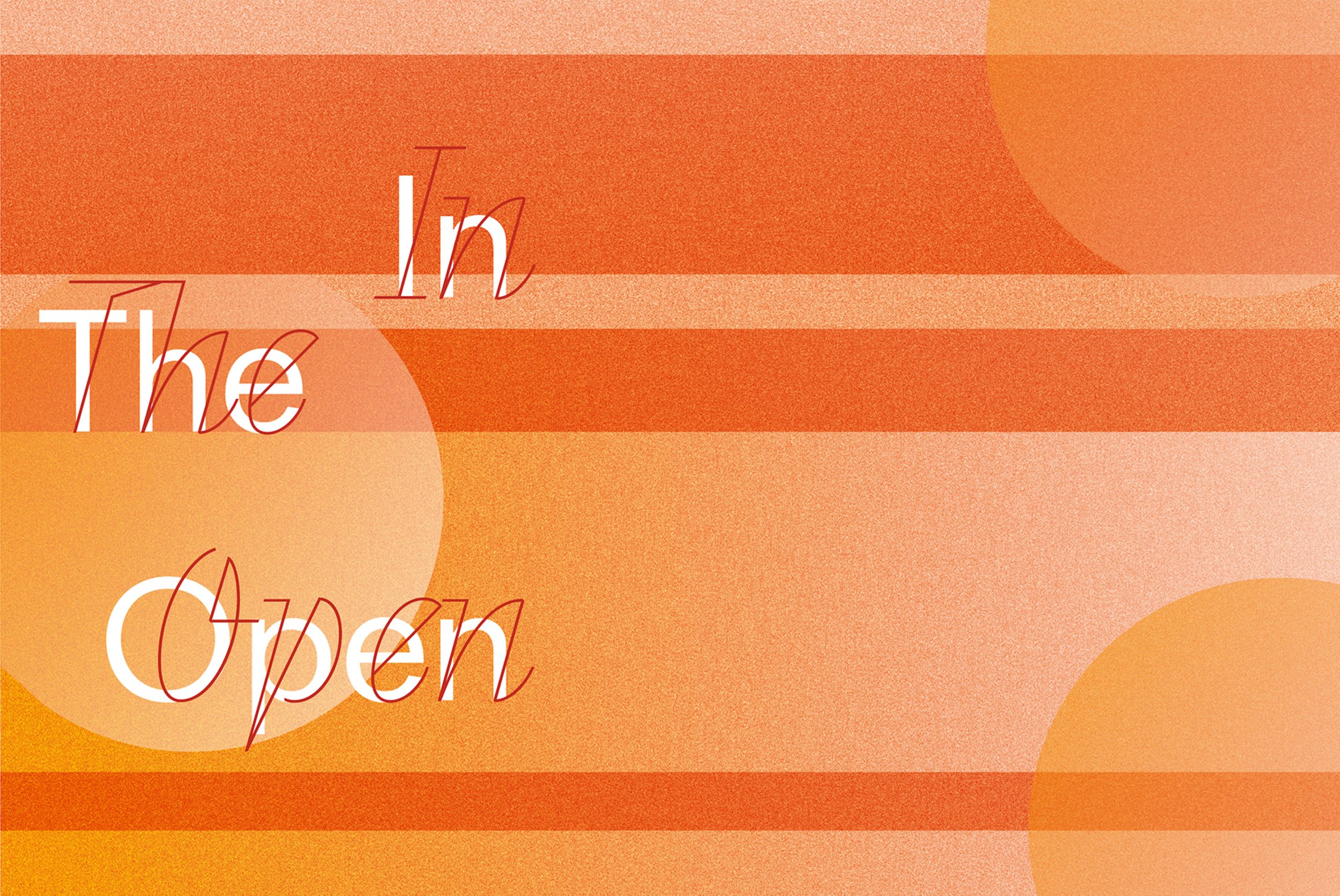
Steve McQueen – ‘Grenfell’
‘Grenfell’ (2019). Film still © Steve McQueen. Courtesy the artist.
Over the next three years, ‘Grenfell’ by Steve McQueen will be shown in public art galleries in six major cities across England, Scotland, Wales and Northern Ireland. It will open at Tramway in Glasgow this spring, after which it will travel to Chapter in Cardiff, The MAC in Belfast, The Box in Plymouth, Tate Liverpool, and Midland Arts Centre in Birmingham through 2025, 2026 and 2027.
In December 2017, artist and filmmaker Steve McQueen (b. 1969, London, UK) made an artwork in response to the fire that took place earlier that year on 14 June at Grenfell Tower, North Kensington, West London. 72 people died in the tragedy. Filming the tower before it was covered with hoarding, McQueen sought to make a record so that it would not be forgotten.
Following the fire, a Government Inquiry was launched that was conducted in two phases. The findings of the first and second phase of the Inquiry have been reported, the recommendations of which are yet to be implemented, meaning a similar tragedy could happen again. There is an ongoing criminal investigation.
McQueen said, “I knew once the tower was covered up, it would start to leave people’s minds. I was determined that it never be forgotten.”
‘Grenfell’ was first presented in 2023 at Serpentine in London’s Kensington Gardens, following a period of private viewings, prioritising bereaved families and survivors. The work was then placed in the care of Tate and the London Museum.
The national tour is being coordinated by Tate in collaboration with the partner venues and is made possible thanks to support using public funding by the National Lottery through Arts Council England and from Art Fund. Each presentation is free to visit and will be accompanied by a public engagement programme.
The film contains close-up imagery of the tower six months after the fire. Please let a member of our team know if you need space to pause, rest and reflect afterwards.
About the artist
Steve McQueen was born in West London in 1969 and studied Fine Art at Goldsmiths College where he first became interested in film. Over the last 30 years, Steve McQueen has been influential in expanding the way in which artists work with film. He has made several feature films with many accolades, including the Academy Award for Best Film for 12 Years a Slave (2013). In 2020, he made ’Small Axe’, an anthology film series about London's West Indian community. As an artist, McQueen won the Turner Prize in 1999 and represented Great Britain at the Venice Biennale in 2009. McQueen's work is held and exhibited in public museums around the world. He lives and works in London and Amsterdam.
Project Details
‘Grenfell’ in Glasgow is a co-production by The Common Guild and Tramway and part of a UK-wide tour co-ordinated by Tate.
For details of other venues and dates, please visit Tate.
How to book
Screenings are every hour daily between 12 and 5pm
They are free to attend but booking is recommended to guarantee a place at your preferred time.
Access
Screenings take place in the main theatre at Tramway, which is reached via the first floor. There is lift access to the first floor and accessible toilets.
There is a limited amount of accessible seating for these events. Please contact Tramway box office directly.
Read
‘Never Again Grenfell’, an essay by professor and author Paul Gilroy, written to accompany Steve McQueen’s ‘Grenfell’.
Listen to Colin Salmon read ‘Never Again Grenfell’ -
Thanks
The national tour is supported by:
Art Fund, Arts Council England
Related

Publication Launch / Corin Sworn – ‘Moving in Relation’
Corin Sworn,‘A Fuzzy Set’ (video). Installation View, The Common Guild, 2023. Photo: Ruth Clark.
Corin Sworn’s project concludes with the launch of a new publication ‘Moving in Relation’. The publication brings together Sworn’s five-part investigative series of the same name, presented by The Common Guild from 2021–2023. Featuring research, performance, documentation, conversation and interview, the publication also brings together Sworn’s collaborators including nussatari, Louise Amoore and Cecilia Pavón.
‘Moving in Relation’ includes a newly commissioned essay by curator and writer on digital visual culture, Nora N. Khan, and new poems by Sworn presented here for the first time.
Sworn will read a selection of poetry or ‘micro-films’ during the launch event, where copies of ‘Moving in Relation’ will be available for a special launch price of £10. Our back-catalogue of publications will also be available for discounted prices, for visitors.
‘Moving in Relation’ is designed by Maeve Redmond and printed by Gomer in an edition of 300.
The publication is supported by Hope Scott Trust.
Related
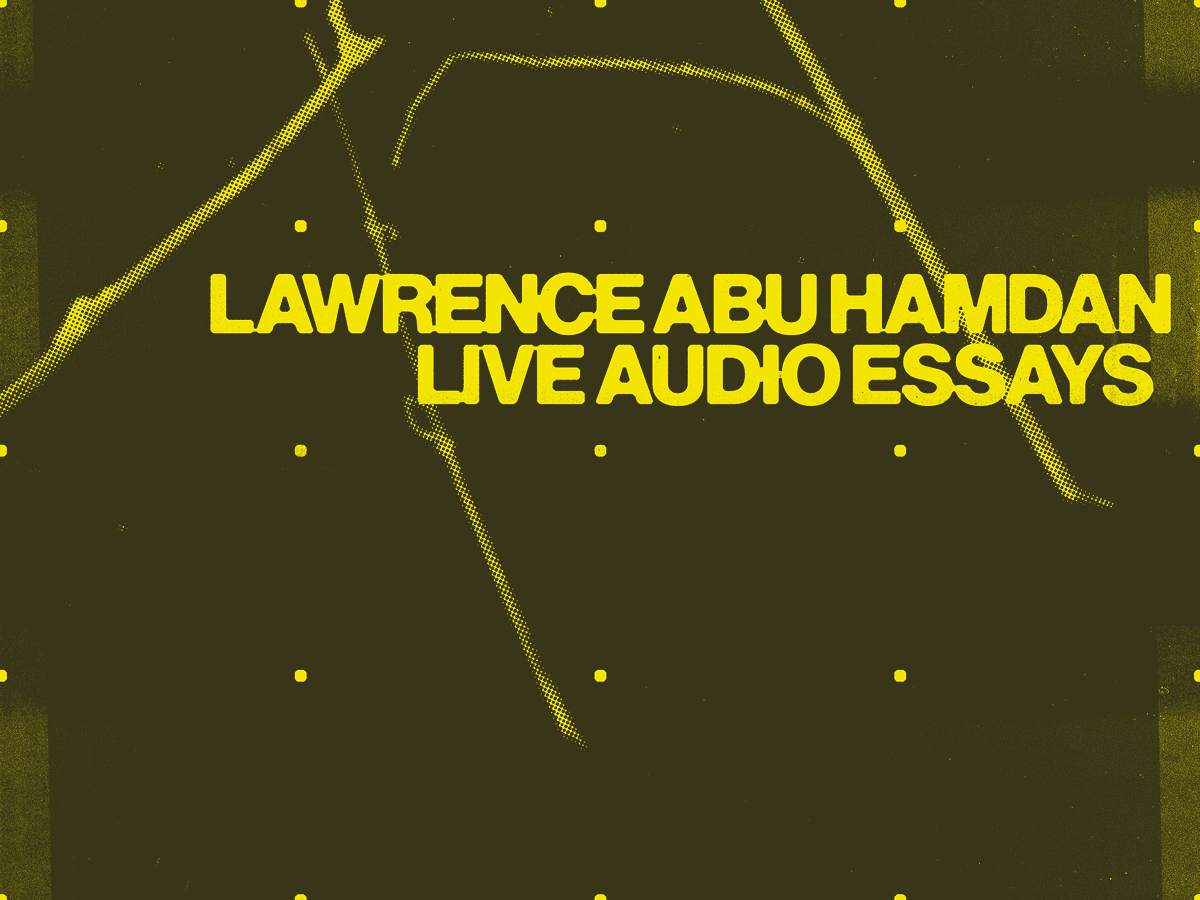
Lawrence Abu Hamdan – ‘Live Audio Essays’
Design: Tom Joyes.
Audio investigator Lawrence Abu Hamdan weaves together urgent political narratives that pivot around acoustic experience and sonic memory. ‘Live Audio Essays’ presents three key live performance works by Abu Hamdan in which sound and politics intersect. Two of the three performances have never previously been performed in the UK.
‘Air Pressure’ (2021), ‘A Thousand White Plastic Chairs’ (2020), and ‘After SFX’ (2018), will each be performed for one night only, each in a different music venue. These performances, delivered by the artist in the form of a monologue or “live audio essay”, present Abu Hamdan’s practice of research and investigative analysis, which is centred around “forensic listening”, auditory evidence and the “ear-witness” as political and legal testimony. Performances feature live percussion and guitar, filmed footage and sound design, with audio conditions enhanced to support careful listening: a conceptual and political tool for the artist.
Performances present narratives and testimonies that detail violence, oppression and aggression, offering strategies for political critique and action. ‘Air Pressure’ draws on research, conducted between May 2020–21, into the aerial soundscape of Lebanon, documenting 22,111 instances of Israeli fighter jets and drones in Lebanese airspace. ‘A Thousand White Plastic Chairs’ draws its scenography from translation techniques deployed during the Nuremberg trials (1945–46) with Abu Hamdan re-performing the asymmetry between technological prowess and the limits of cognitive processing. ‘After SFX’ is prompted by Abu Hamdan’s investigations into crimes that are heard but not seen.
‘Air Pressure’ (2021/2024)
‘Air Pressure’ (2021), the first of the performances, is a diaristic analysis written between May 2020 and May 2021 into the aerial soundscape of Lebanon where, from 2006–2021, there had been over 22,111 instances of Israeli fighter jet and drone violations in Lebanese airspace. Deploying publicly accessible information uploaded to the UN Digital Library, Abu Hamdan’s research and analysis brings this data together for the first time, making clear the scale and intensity of these incursions, and the consistent atmosphere of violence brought to bear across the territory.
Residents of Lebanon live in a state of precarity with the constant background noise of hostile jets and drones overhead. The potential of full-scale aerial bombardment is a daily possibility. Whether they are actively ignoring the noise from above or determined to document the violent aerial machines conspicuously hovering in the near distance, residents have developed modes of resistance.
Abu Hamdan’s account unfolds with live audio processing and countless videos of the rumbling sky, both pulled from open source content and captured by the artist and his team. Abu Hamdan employs the 'atmospheric' both aesthetically and conceptually to explore the ways in which violence is made manifest, reading Lebanon's air as a high pressure nexus in a global weather system.
'Air Pressure' is performed by Lawrence Abu Hamdan with live sound design by Moe Choucair. It has never previously been performed in the UK. With thanks to SWG3.
‘A Thousand White Plastic Chairs’ (2020/2024)
‘A Thousand White Plastic Chairs’ (2020) is performed by Abu Hamdan with electric guitar accompaniments by Fabio Cervi. The scenography for this work – flashing red and yellow lights – is inspired by the system of simultaneous translation deployed during the Nuremberg trials in the aftermath of World War II in 1945–6. This newly developed electronic audio technology enabled simultaneous translation of the trial proceedings from their spoken languages into Russian, French, German, and English.
During the performance Abu Hamdan is illuminated by these lights alone, which command and direct the artist’s speech. The performance departs from this apparatus to examine the inextricable relation between testimony and the technologies by which it is disseminated and distorted. Here, Abu Hamdan re-performs the asymmetry between the speed of the technology – which allowed words to travel through copper cables at 4,600 metres per second – and the speed of the human mind to process what it sees and stores of a given event. ‘A Thousand White Plastic Chairs’ serves as a proposition that the true capacity to bear witness is measured not through acts of coherent testimony and seamless speech but rather through its interruptions and breaking points.
'A Thousand White Plastic Chairs' has never previously been performed in the UK.
‘After SFX’ (2018/2024)
‘After SFX’ (2018) is prompted by sonic evidence, acoustic memories, and Abu Hamdan’s investigations into crimes that had been heard but not seen. The performance explores a series of sounds deriving variously from legal cases and trial transcripts, transhistorical testimonies, and interviews conducted by the artist with earwitnesses. The artist’s earwitnesses include prisoners held in Saydnaya, a brutal prison operated by the Syrian government.
In order to facilitate their testimonies and determine what they heard, Abu Hamdan experimented with pre-existing cinematic sound effects libraries, before developing his ‘Earwitness Inventory’ (2018–ongoing) a self-constructed sound effects library specific to the witnesses’ acoustic memories. The inventory includes everyday objects like a car door, popcorn maker, coins and loaves of bread. These objects operate as sonic analogies, conjuring sounds but also referencing psychological states of mind. A number of objects from the Earwitness Inventory will be activated during the performance.
‘After SFX’ explores sonic recall, and the question of a shared experience of sound. The performance points towards the difficulty of translation and the limits of language, offering a new acoustic vocabulary to articulate witness experience.
‘After SFX’ is performed by Lawrence Abu Hamdan with live sound design by Adam Laschinger and percussion by Iain Stewart. It is presented for the first time in Scotland in a new iteration developed in 2023.
About the artist /
Lawrence Abu Hamdan is an award winning artist, audio investigator and the founder of Earshot, the world’s first not-for-profit organisation producing audio investigations for human rights and environmental advocacy.
Abu Hamdan's work on sound and listening has been presented in the form of forensic reports, lectures and live performances, films, publications, and exhibitions all over the world. He received his PhD in 2017 and has held fellowships and professorships at the University of Chicago, the New School, New York and the Johannes Gutenberg University Mainz, where he developed his research AirPressure.info.
Project Details
Part of Glasgow International 2024 Open Programme.
‘Air Pressure’ was performed at SWG3 on the opening night of Glasgow International, ‘A Thousand White Plastic Chairs’ was performed at Audio, and ‘After SFX’ was performed at Barrowlands at the closing night of GI.
Watch an excerpt of ‘A Thousand White Plastic Chairs’ here –
Watch an excerpt from ‘After SFX’ here -
Read the Commentary by Neil Clements —
Listen to Neil Clements read the Commentary here –
Thanks
With thanks to Fabio Cervi, Moe Choucair, Adam Laschinger, Ambroise Leclerc, Jonny Lyons, Iain Stewart, Duncan Young.
Thanks to Audio, the Barrowlands, SWG3 and Inhouse.
Live captions were provided during performances with thanks to Marta Tycinska.
Related

Corin Sworn & nussatari – Artist Talk
Image: Courtesy the artist.
Corin Sworn and nussatari will be in conversation to discuss Sworn’s project 'Moving in Relation': a series of five events initiated by the artist built on live investigation, collaboration and an open curiosity towards machine-learning, algorithmic thought and AI interventions on physical bodies.
nussatari collaborated with Sworn and others on eco-co-location, the first event in the series, in 2021. They will talk about their process of working together and subsequent events, as well as cross-disciplinary collaborative approaches and making research live in real-time. They will be joined in conversation by Chloe Reith.
Event Details
Location
Capella Building
60 York Street Glasgow, G2 8JX
The Common Guild is on the 7th Floor.
Transport Links: Glasgow Central Station is a five minute walk away.
Access
There is ramped access from the street to the ground floor reception.
The 7th floor is accessible by lift from the reception area. Visitors can check in at reception.
There are double doors in the lift lobby on the 7th floor. Please ring the doorbell for assistance.
Related
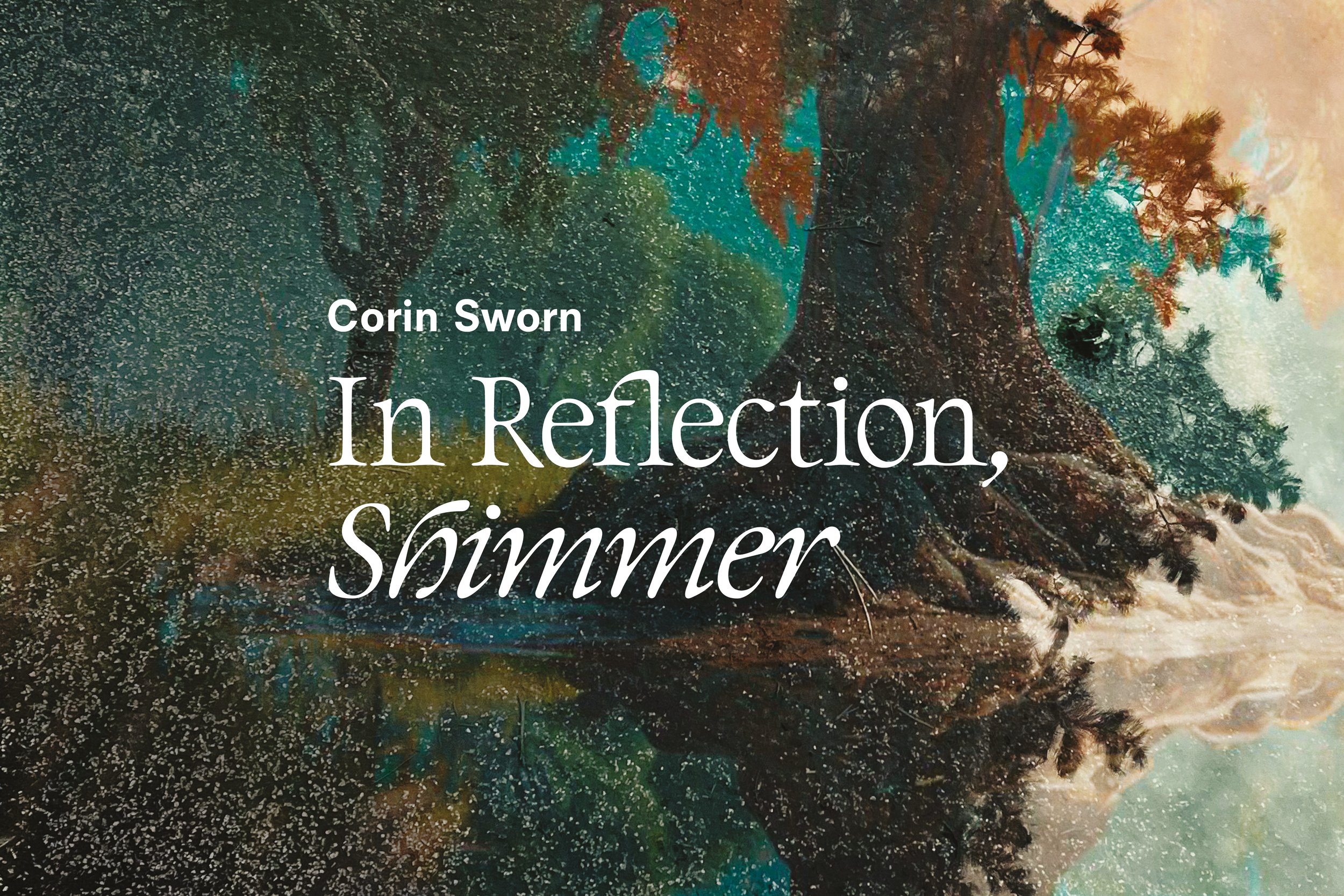
Corin Sworn – ‘In Reflection, Shimmer’
Design: Maeve Redmond
‘In Reflection, Shimmer’ is the final instalment of Corin Sworn’s project ‘Moving in Relation’, a series of events exploring social relations with ‘smart’ technologies: AI-enabled, consumer-grade products that attempt to learn and produce data from interactions with humans.
Corin Sworn,‘Where the Deciduous are Leafed in Winter’. Installation view, The Common Guild, 2023. Photo: Ruth Clark.
‘In Reflection, Shimmer’ is an installation comprising video, atmospheric sound, vocal audio and sculptural collage. Both sound and image are dispersed across the exhibition space, creating a broad sensorial address. The video, ‘A Fuzzy Set’ (2023) presents a history of motion capture that aligns organic movement, such as gesture, to machinic ordering systems. Dancers are shown, testing the functional limits of video in AI enabled CCTV security systems that identify potential ‘life' through movement. Inventions by Charles Rees Wilson, Frank and Lillian Gilbreth, and Marie Van Brittan Brown are presented as precursors of contemporary motion capture, in each case this moves the devices away from the inventor’s initial intention. A Fuzzy Set’ examines divergent forms of motion capture, challenging 20th century notions of efficiency as ‘the one best way’.
Each instalment of ‘Moving in Relation’ has sought new ways of engaging and understanding technological systems and algorithmic thought. Over the course of an extended period of research Sworn brought together various collaborators in movement, sound, poetry and academia to establish ways of approaching and living with networked technology and machine learning devices. Attempting to apprehend these now ubiquitous devices on human terms, Sworn explores AI behaviours in emotive and playful ways, observing our intimate and attentive relationships with automatic tools.
Corin Sworn,‘A Fuzzy Set’ (video). Installation View, The Common Guild, 2023. Photo: Ruth Clark.
'Moving in Relation' began in 2021 with 'eco-co-location', a live one-off performance exploring encounters with algorithmic thought that took place in a vacant office space within a suburban business park. ‘This Harmonic Chamber’, Sworn’s second performance – an incomplete, future film taking shape as a performance lecture with experimental sound – was presented in 2022 in a 19th century loom shed.
Further encounters in the series have included an interview with political philosopher Louise Amoore, and ‘The Virtual Boulevard’ – a gathering of poets from Buenos Aires, Argentina, and Glasgow to work across geographies and alongside AI translation systems, supported by online tools for communication. Collaborators working with Sworn have included Luke Fowler, Jer Reid, nussatari, Cecelia Pavon, SPAM Zine & Press, George Hampton Wale, and Guy Veal.
Further Info
Project Details
‘In Reflection, Shimmer’ to place at 60 York Street Glasgow, G2 8JX, The Common Guild’s temporary premises.
Credits
Movement: Molly Danter; Caitlin Taylor and Isabel Umali
Dramaturgy: Jeremy Reid
Camera: Corin Sworn and Ambroise Leclerc
Sound Design: Luke Fowler
Sound: Jeremy Reid; Luke Fowler; Simon Weins; Feronia Wennborg; Duncan Marquiss; Phil Julian and Darren Hayman
Consultation: Timothy Lem-Smith and Louise Amoore
Thanks: Grace Jackson; Becheala Walker; Neil Grey; Bridget Fowler; Chloe Reith; Katrina Brown; Victoria Brooks; Ian Hameli; Eric Brucket; The Common Guild installation team, Jonny Lyons and Dan Griffiths.
Related

New Temporary Space
Our new temporary space is in Glasgow city centre at 60 York Street (also known as the Capella builidng at Atlantic Quay).
Situated on the seventh floor, the space has an expansive view overlooking the River Clyde and beyond. The space is fully accessible with lift access to the seventh floor.
While in residence at York Street our programme will include Corin Sworn's 'Moving in Relation' and further events, to be announced.
Access to The Common Guild's library, including our latest Room for Reading selections will also resume.
Front entrance of the Capella Building, The Common Guild’s new temporary space.
Project Details
Location
Capella Building
60 York Street Glasgow, G2 8JX
The Common Guild is on the 7th Floor.
Transport Links: Glasgow Central Station is a five minute walk.
Access
There is ramped access from the street to the ground floor reception.
The 7th floor is accessible by lift from the reception area. Visitors can check in at reception.
There are double doors in the lift lobby on the 7th floor. Please ring the doorbell for assistance.
During exhibitions, The Common Guild is open the below hours. Please check our website for latest projects.
Thursday: 12–7pm
Friday, Saturday: 12–5pm
Related

Permanent Installation / Rabiya Choudhry, 'Give light and people will find the way (Ella Baker)'
Rabiya Choudhry, ‘Give light and people will find the way (Ella Baker)’ (2022) installation view Glasgow Women’s Library 2023. Courtesy of the artist. Photo: Isobel Lutz-Smith.
We are pleased to announce Rabiya Choudhry’s illuminated artwork ‘Give light and people will find the way (Ella Baker)’, commissioned by The Common Guild for ‘anywhere in the universe’ has been gifted to Glasgow Women’s Library by the artist and will remain in place at the library as a permanent installation.
Rabiya Choudhry, ‘Give light and people will find the way (Ella Baker)’ (2022) installation view Glasgow Women’s Library 2023. Courtesy of the artist. Photo: Isobel Lutz-Smith.
The artwork was originally installed temporarily at Glasgow Women’s Library, as well as Dennistoun and Shettleston Libraries from 28 January – 30 July 2023. These East-End libraries were selected by Choudhry for their personal significance to the artist.
‘Give light and people will find the way (Ella Baker)’ will join other artworks in Glasgow Women’s Library’s growing collection of artworks by contemporary women artists including Olivia Plender, Martha Rosler and Veronica Ryan.
The artwork can be seen on the exterior Glasgow Women’s Library at all times, and remains illuminated through the night.
Katrina Brown, Director of The Common Guild said,
“As a project ‘anywhere in the universe’ was conceived to reflect on public libraries and how important they are to society, not just as places to find books, but as particular buildings, homes to systems that organise and share information, and places with valuable social purpose. We were guided to the many libraries that became sites for the five projects by the artists and their works, and were totally delighted when Rabiya Choudhry included Glasgow Women’s Library in her sights for her work, as it is such an outstanding, heartening and inspiring place. Thanks to the amazing response from the Women’s Library and its community, along with Rabiya’s generosity, we are thrilled that the work will become a permanent fixture and will continue to offer a glimmer of light to all who visit (or just pass by), honouring Ella Baker’s words. It is an excellent legacy for the project.”
Adele Patrick, Director of Glasgow Women’s Library said,
“In the wake of the pandemic the installation of Rabiya Choudhry's glowing, poignant and uplifting work ‘Give light and people will find the way (Ella Baker)’ literally provided a source of much needed joy, inspiration and illumination in the lives of the GWL community, our visitors, users and our neighbours in Bridgeton. Knowing that this work was part of a suite that connected us to other libraries in our network added a further sense of community, and a shared and renewed purpose. This work is a beacon; amongst the powerful feedback we have received is the comment, “this work gives and shows me the tangible existence of hope, light and shelter...”. What better message to convey what we aspire for people to discover on entering our library space? We are moved and thrilled that Rabiya's work will now become a permanent fixture thanks to her generosity; this is an artwork that will have an enduring, perennial message into the future (as have Ella Baker's words that are incorporated). We are grateful to Rabiya for her creativity and kindness, and to The Common Guild for approaching us to host the work.”
Project Details
Location
Glasgow Women’s Library
23 Landressy Street, G40 1BP
Transport links: Bridgeton Station
Access
Glasgow Women’s Library is wheelchair accessible.
Accessible toilets are available.
Further details from womenslibrary.org.uk
Opening Hours
‘Give light and people will find the way (Ella Baker)’ is situated on the outside of the building and available to view at any time of night or day.
Glasgow Women’s Library
Tuesday, Wednesday, Friday: 10am to 4.30pm
Thursday: 10am to 7pm
Saturday: 12noon to 4pm
Related
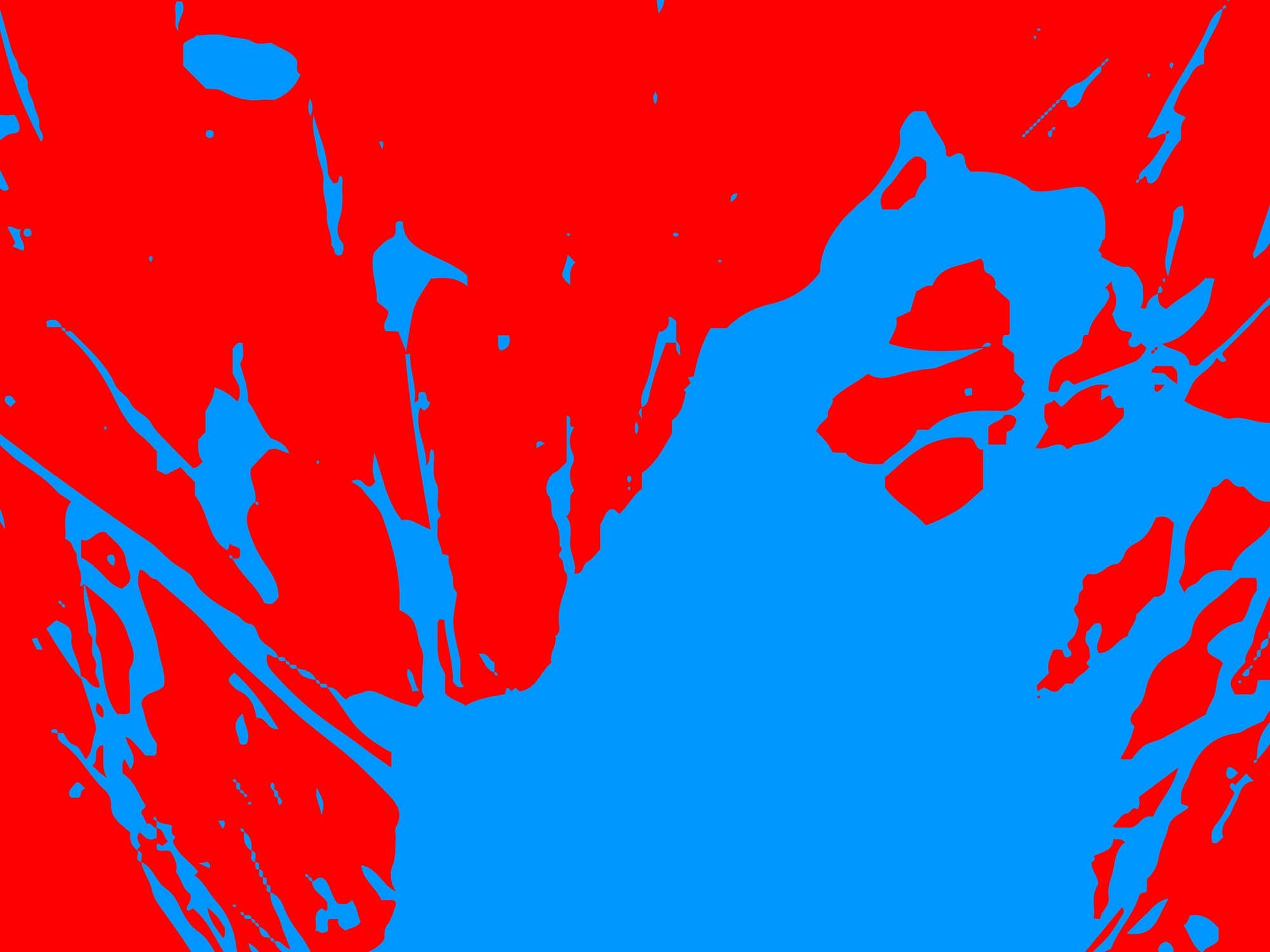
Sean Edwards – ‘FOR WHAT WE HAVE’
Design: Tom Joyes
Sean Edwards has made a series of intimate sculptures for three libraries: Cardonald, Hillhead and Ibrox. ‘FOR WHAT WE HAVE’ draws together Edwards’ own personal memories of time spent in libraries during childhood and adolescence, with fragments of material from Glasgow’s archival collections.
Sean Edwards, ‘FOR WHAT WE HAVE’, Hillhead Library, 2023. Courtesy of the artist. Photo: Isobel Lutz-Smith.
These small-scale sculptures are designed, like books, to be held in the hand and close to the body, and to sit on the shelves of the library. Each sculpture has been assigned a unique shelf mark and entered into the library system; catalogued, indexed and positioned according to Dewey Decimal Classification which organises items by subject. Enfolded into the mechanism of the library, the sculptures will be locatable in the stacks; held, supported and contextualised by neighbouring titles on the shelves.
‘FOR WHAT WE HAVE’ recalls the act of browsing books; the sparks of interest and anticipation that compel a reader to pull a book off the shelf and enter into another world, revealing possibilities beyond everyday realities. The surface of each sculpture offers an abundance of narratives; some autobiographical, some social, others fictional, and full of imagined potential. For Edwards, the sculptures contain within them “the atmosphere, texture and sensibility of neglected people and places”, but also the promise of change.
Formally, Edwards’ sculptures make reference to the Modernist architecture and design of the libraries where they are located. Cardonald, Hillhead and Ibrox libraries were designed and built by architects Rogerson and Spence from the 1970s–1980s, towards the end phase of post-war investment in civic infrastructures that was concerned with sustaining social frameworks and public services. For Edwards, these sometimes-underinvested spaces remain physical sanctuaries, imbued with a subtle and enduring political consciousness. Embedded with the principles of free access and shared ownership, the public library persists, continuing to position itself as one path out of an endless cycle of withheld opportunity.
The project’s title is borrowed from a library membership card found in Glasgow Libraries’ collection of ephemera. ‘FOR WHAT WE HAVE’ suggests an open offer and speaks to the plurality of the library space.
‘FOR WHAT WE HAVE’ is accompanied by a piece of fiction by writer Claire-Louise Bennett. Bennett’s text was available from Cardonald, Hillhead and Ibrox Libraries for the duration of the project and is included in the publication ‘anywhere in the universe’, available to buy in our Shop.
Browse ‘FOR WHAT WE HAVE’ in the library catalogue here.
Sean Edwards (b. Cardiff 1980), graduated with an MA from the Slade School of Art in 2005, and is currently Programme Director for Fine Art & Photography at Cardiff School of Art and Design. Edwards’ work investigates the sculptural and political potential of the everyday, often using remnants and fragments of previous activities as a starting point. In many of the works there is a sense of objects being in-progress, indeterminate and open to change. The work intertwines simple sculptural objects, mixed media installations and audio-visual components with personal family and political histories.
He represented Wales at the 58th Venice Biennale (2019) and was awarded the Turner Prize Bursary in 2020 for the installation ‘Undo Things Done’.
Recent solo exhibitions include 'chased losses', Temple Bar Gallery, Dublin (2022) ‘distant borrowing’, Tanya Leighton, Berlin (2021); ‘Undo Things Done’, Tŷ Pawb, Wrexham, Senedd, National Assembly for Wales and Bluecoat, Liverpool (both 2020); ‘Drawn in Cursive’, MOSTYN, Llandudno and Network, Aalst, Belgium; ‘Putting Right’ Limoncello, London (both 2014); ‘Resting Through’ Kunstverein Freiburg (2012); and ‘Maelfa’ Spike Island, Bristol (2011). Group shows include ‘British Art Show 9’, Hayward Touring and ‘The World We Live In’, Southbank Art Centre, London (both 2022); ‘Olaph the Oxman’, Copperfield Gallery, London (2019); ‘49a’, Limoncello, Woodbridge (2016); ‘This is Your Replacement’, Sies + Höke, Düsseldorf (2016); ‘Un Nouveau Festival 2015’ Centre Pompidou, Paris; and ‘Finite Project Altered When Open’, David Dale Gallery & Studios, Glasgow (both 2015), amongst others.
Claire-Louise Bennett is the author of ‘Pond’ (2015), ‘Fish Out Of Water’ (2020), and ‘Checkout 19’ (2021). Her fiction and essays have appeared in numerous publications, including the New Yorker, Harper's, The White Review, and frieze. Bennett grew up in Wiltshire and studied Literature and Drama at the University of Roehampton, before moving to Ireland where she worked in and studied theatre for several years. In 2013 she was awarded the inaugural White Review Short Story Prize and her debut book, ‘Pond’, was shortlisted for the Dylan Thomas Prize in 2016. Checkout 19 was shortlisted for the Goldsmiths Prize in 2021.
About the Libraries
Cardonald Library
Built in 1968, Cardonald Library was the first of three libraries that would be designed by architectural firm Rogerson & Spence in a Modernist architectural style. The library was opened in 1970 and was refurbished in 2018, facilitating upgrades to the building and the creation of a new community space.
Hillhead Library
The most used branch library in Glasgow, Hillhead Library has been a fixture of Glasgow’s West End since opening in 1975. The building was designed in Modernist architectural style by architects Rogerson & Spence, and the library’s interior open plan arrangement with spiral staircases represents a shift towards fully open access libraries.
Ibrox Library
Designed by Rogerson & Spence, Ibrox Library was the last library to be built by the firm, opening in 1981. Ibrox Library was designed with access in mind, with a lift and an accessible toilet featured in the original plans for the building. Other amenities included a children's project room, a community room, and a public telephone.
Project Details
Browse ‘FOR WHAT WE HAVE’ in the library catalogue here.
Locations
Cardonald Library
1113 Mosspark Drive, Glasgow G52 3BU
Transport links: Cardonald Station
Ibrox Library
1–5 Midlock Street, Glasgow G51 1SL
Transport links: Ibrox Subway
Hillhead Library
348 Byres Road, Glasgow G12 8AP
Transport links: Hillhead Subway
Open
Cardonald and Ibrox
Monday, Wednesday, Friday, Saturday:
10am – 5pm
Tuesday, Thursday: 10am – 8pm
Hillhead
Monday, Tuesday, Wednesday, Thursday: 10am – 8pm
Friday, Saturday: 10am – 5pm
Sunday: 12 – 5pm
Access
All libraries are wheelchair accessible.
Accessible toilets are available.
Further details from glasgowlife.org.uk/libraries or contact info@thecommonguild.org.uk for more information.
Thanks
With thanks to staff at Glasgow Life, Alison Nicol, Ruth Hunter and Audrey Cairns; Hannan Jones, Erin Donnelly, Elena Grace and Rebecca Jones; and Cardiff School of Art and Design, Cardiff Metropolitan University.
Related

Moving in Relation 4. The Virtual Boulevard
Image: Courtesy of Alice Brooke.
The Virtual Boulevard is an experimental translation workshop collaboration bringing together invited poets in Glasgow and Buenos Aires. It forms part of Corin Sworn’s experimental series ‘Moving in Relation’.
Sworn is joined by Buenos Aires based poet, translator and tutor Cecilia Pavón who leads translation experiments between poets in Spanish and English, encompassing dialects and colloquial languages spoken in Buenos Aires and Glasgow. Through translation, the poets explore overlapping and imagined localities between the two cities, shared and contrasting sites of struggle and antagonism, roving intimacies and literary friendship across continents. No knowledge of either English or Spanish is required — the artists aim to probe the playful potential of ‘intra-languages’and miscommunication, as encountered through human relationships with technology.
The workshop is organised by Cecilia Pavón, Corin Sworn and SPAM Zine. Participants include valentín etchegaray, Nasim Luczaj, María Muchut, Gloria Dawson, Camila Gassiebayle, Lucy Rose Cunningham and JJ Romero.
Cecilia Pavón was born in Mendoza, Argentina, in 1973. She holds a BA in literature from the Universidad de Buenos Aires. In 1999 she cofounded the independent art space and small press Belleza y Felicidad, Buenos Aires. She has published poetry and short stories in Argentina, Mexico, Brazil, and Chile. As a translator from German and English into Spanish, Pavón has translated Diedrich Diederichsen, Chris Kraus, Dorothea Lasky, Ariana Reines, Werner Schroeter, and others.
Pavon has published numerous books of poetry and short stories, in 2021 Little Joy, an anthology of 35 short stories was published in English by Semiotext(e) as part of its Native Agents series.
A publication by SPAM, including poetry from the workshop and photographs from Alice Brooke and will be released in 2024.
Project Details
This event took place online with invited participants selected by Corin Sworn and Cecilia Pavón.
Related
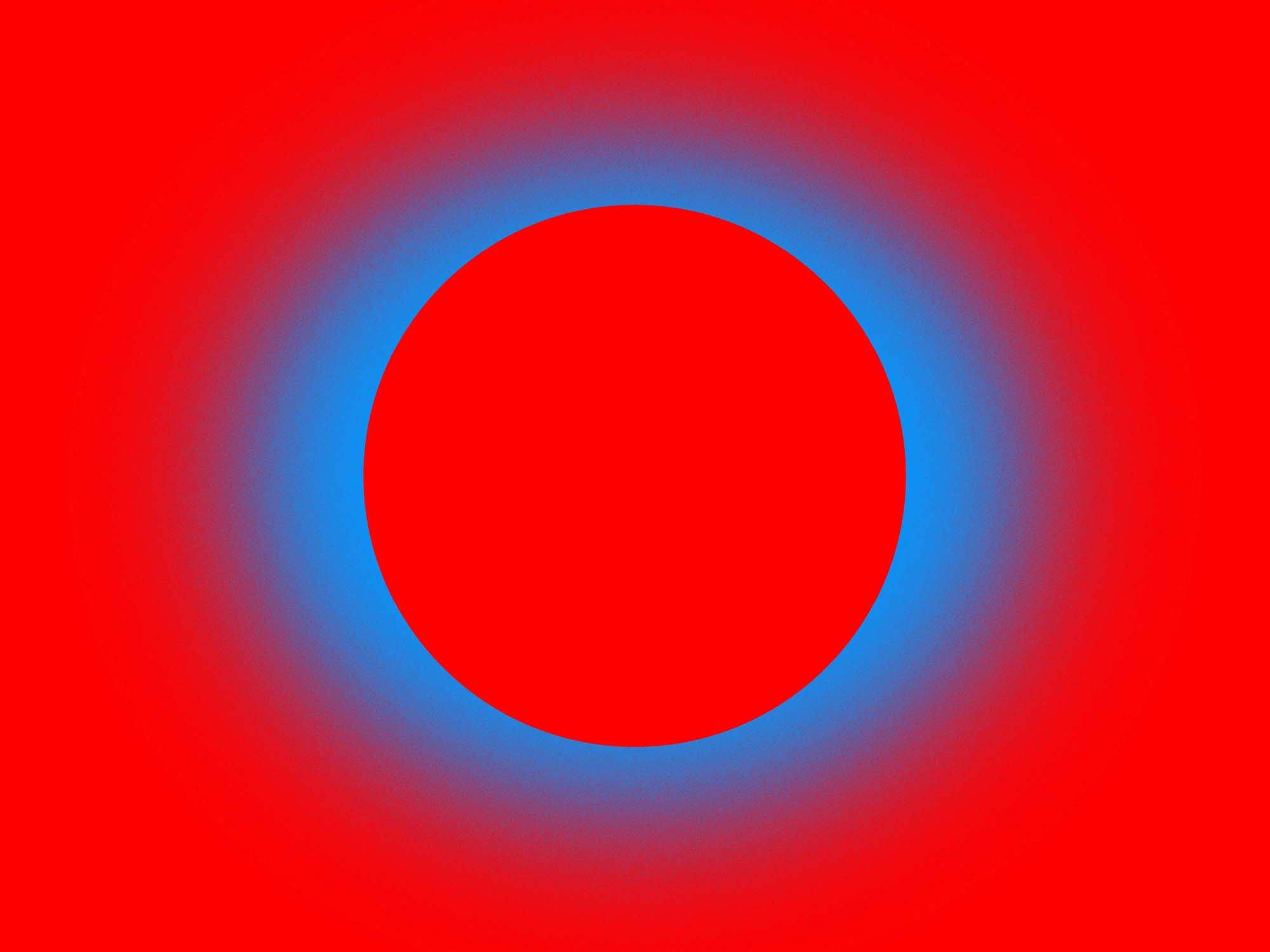
Yuri Pattison – ‘open stacks’
Design: Tom Joyes
‘open stacks’, a digital video installation by Yuri Pattison, is situated in the heart of one of the largest public libraries in Europe, The Mitchell Library. Unfolding across multiple screens, Pattison’s videos use the popular online format of ‘ambience videos’ which combine slow-moving visuals and soundscapes meant to aid focus and relaxation. Pattison’s ambient videos have been created in collaboration with an ambient YouTuber, animating base images produced by the artist using AI image generation tools to blend original and found photographs.
Yuri Pattison, ‘open stacks’ (2023)
Digital video, 4 channel audio, duration variable.
Yuri Pattison, ‘open stacks’(2023)
Repurposed library shelving, Dell PowerEdge R620 server modified with RTX 3060 GPU, digital video, 4 channel audio, headphones, desktop monitors, LED ceiling lights, ceiling speakers, cables, books, dust.
Installation view, The Blythswood Room at The Mitchell Library, 2023. Courtesy of the artist. Photo: Ruth Clark.
A second soundtrack, audible via headphones, presents a series of essays voiced by disembodied AI-generated narrators who ruminate broadly on the consequences of a world steadily overwhelmed by the private, commercial interests of technocratic powers. These unidentified, yet somehow familiar, narrators postulate variously on creative homogenisation and increasing cultural degradation; the pillaging of our shared intellectual and artistic heritage; eroded workers’ rights and the status of labour economies; and the social and political consequences of the unchecked centralisation of knowledge.
The voices have been programmed to mimic an amalgam of accents and anachronistic speech patterns recognisable for their perceived intellectual authority. The words they ventriloquise, which are unreliable, meandering and sometimes bizarre, are also authored by AI tools (large language models), as with the images on screen. Slipping between sense and nonsense, the video essays, made up of poor copies and degraded data, expose the intellectual limits and biases of AI. They make clear AI’s necrotic tendency to endlessly resample scraps of past human endeavour – with nonetheless alluring effect.
‘open stacks’ explores recent digital trends involving the rapid encircling and extraction of knowledge by networked technology, artificial intelligence and corporate power. Pattison addresses the library space as a stage upon which linearity, time, and veracity are in a constant state of recirculation, reformation and collapse. Through critically confronting immediate concerns and current discourse on AI technology, Pattison speculates on what appears to be history’s closing chapter of individual authorship, and the opening of a new one dominated by corporate intellectual property. ‘open stacks’ asks what becomes of human intelligence, and our perceptions of history and the present, when information is confined rather than accessible to all. The installation demonstrates the seductive aesthetics of tech whilst hinting that it is not yet too late to reclaim freedom of knowledge from extractive neoliberal powers.
Yuri Pattison, ‘open stacks’(2023)
Repurposed library shelving, Dell PowerEdge R620 server modified with RTX 3060 GPU, digital video, 4 channel audio, headphones, desktop monitors, LED ceiling lights, ceiling speakers, cables, books, dust.
Installation view, The Blythswood Room at The Mitchell Library, 2023. Courtesy of the artist. Photo: Ruth Clark.
‘open stacks’ was accompanied by a piece of writing by writer and researcher Aurelia Guo. Guo’s text was available from The Mitchell Library for the duration of the project and is included in the publication ‘anywhere in the universe’, available to buy in our Shop.
The practice of Yuri Pattison (b. 1986, Dublin, Ireland; lives and works in Paris) connects and materialises the intangible spaces between the virtual and physical through video, sculpture, installation, and online platforms. It explores how new technologies such as the digital economy and online communication have shifted and impacted the systemic frameworks of the built environment, daily life, and our perceptions of time, space, and nature.
Solo exhibitions include ‘clock speed (the world on time)’, mother’s tankstation, London, (2022); ‘the engine’, Douglas Hyde Gallery, Dublin (2020-21); ‘trusted traveller’, Kunsthalle Sankt Gallen (2017); and ‘user, space’, Chisenhale Gallery, London (2016). Selected recent and upcoming group exhibitions include ‘Ruhr Ding: Schlaf’, Urbane Künste Ruhr, Germany; ‘Radical Landscapes’, Tate Liverpool (both 2023); ‘Post Capital’, Kunsthal Charlottenborg, Copenhagen (2022); ‘One Escape at a Time’, 11th Seoul Mediacity Biennale, Seoul; ‘No Linear Fucking Time’, BAK, Utrecht; ‘Proof of Stake' – Technological claims’, Kunstverein in Hamburg, Hamburg; ‘The Ocean’, Bergen Kunsthall, Bergen, Norway; ‘TECHNO, MUSEION’, Bolzano, Italy (2021); ‘Long Live Modern Movement’, CCS Bard, Hessel Museum, New York (2020) and ‘Phantom Plane, Cyberpunk in the Year of the Future’, Tai Kwun Contemporary, Hong Kong (2019).
Aurelia Guo is a writer and researcher who lives in London. Her work explores interconnections between law and inequality. She is the author of ‘World of Interiors’ (Divided, 2022), a book of essays and poetry exploring contested histories of mobility, migration and displacement from social, legal, and biographical perspectives. She is the author of the poetry chapbooks, ‘2016’ (After Hours Ltd, 2016) and ‘NYT’ (Gauss PDF, 2018). She is a Lecturer in Law at London South Bank University.
Yuri Pattison, ‘time-bound’(detail) (1972—2008—2023)
Bound copies of Time magazine 1972–2008, vitrine.
Courtesy of the artist. Photo: Ruth Clark.
About the Library
One of Europe’s largest public libraries, the Mitchell Library opened in 1911 and was designed by William B Whitie, a local architect who won a competition to design the building. The original Mitchell Library was established in 1877, after tobacco manufacturer Steven Merchant left £70,000 to establish a large public library in Glasgow. Andrew Carnegie laid the first foundation stone for the Baroque style building in North Street, which has benefitted from numerous extensions over the years.
Project Details
Location
The Blythswood Room, 5th Floor
The Mitchell Library
North St, Glasgow G3 7DN
Transport links: Charing Cross Station.
Access
The Mitchell Library is wheelchair accessible.
Accessible toilets are available.
Further details from glasgowlife.org.uk/libraries or contact info@thecommonguild.org.uk for more information.
Production Credit
Claire Chen, ASMR Rooms
Thanks
With thanks to Dawn Vallance and staff at Glasgow Life.
Related
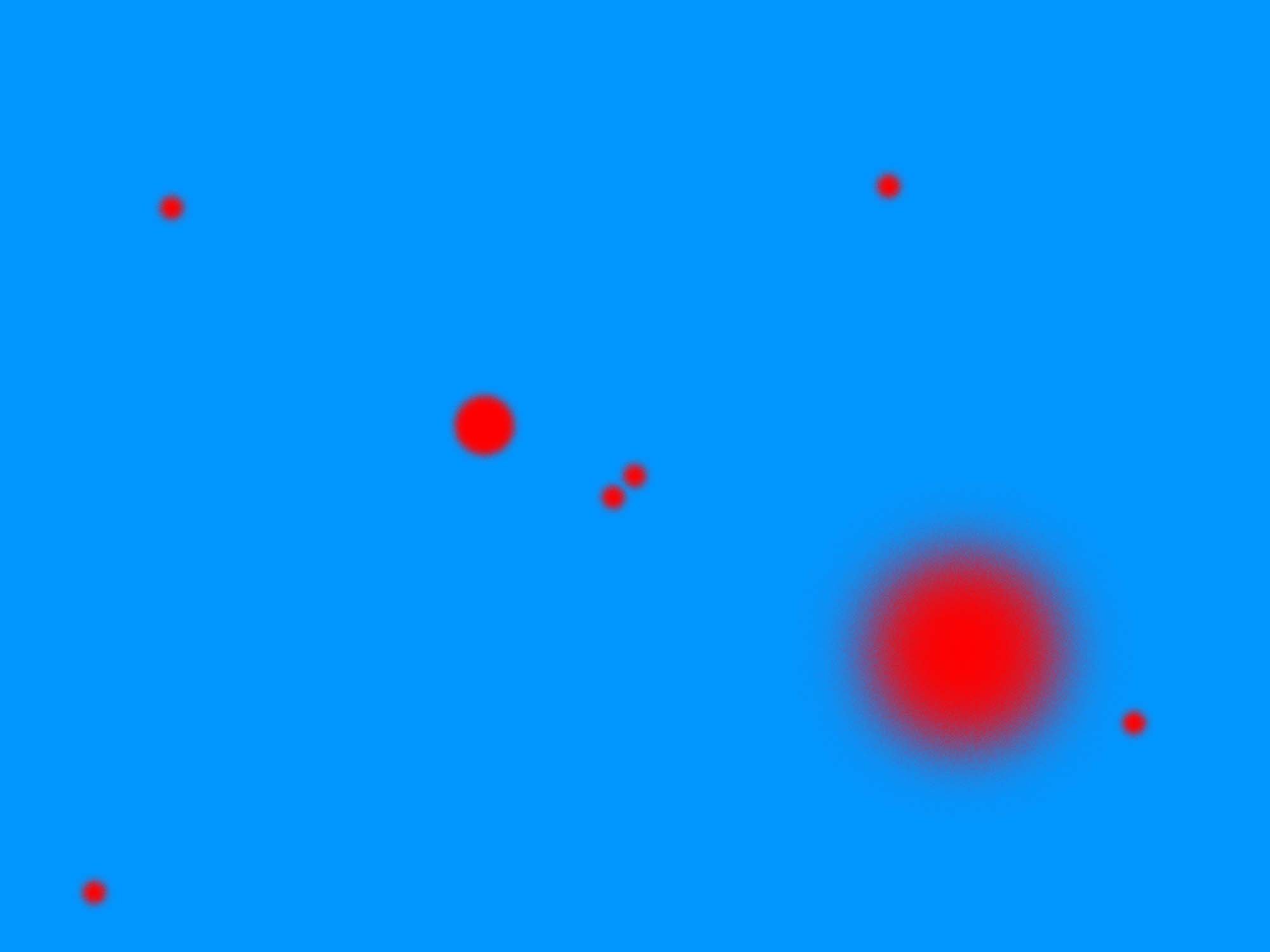
Kate Davis – ‘Natural History’
Design: Tom Joyes
Kate Davis has made a series of drawings that employ ‘frottage’ techniques. The frottages (or crayon rubbings) are taken from the interior and exterior of her local library in Pollokshields. These drawings are presented as a limited edition artist’s book which is freely available to anyone visiting Pollokshields library.
Kate Davis, ‘Natural History’, Pollokshields Library, 2023. Courtesy of the artist. Photo: Ruth Clark.
Davis’ frottage drawings take direct visual inspiration from the Surrealist artist Max Ernst (1891–1976) who further developed the method in 1925. Ernst published a collection of his own frottage drawings in 1926, titled ‘Histoire Naturelle’ (Natural History), and several of these depict animal forms. Other thematic starting points for Davis’ own ‘Natural History’ are Deborah Levy’s 2021 book ‘Real Estate’ and a 1973 small press publication, ‘An Intelligent Woman's Guide to Dirty Words: Volume One of the Feminist English Dictionary’, which includes a chapter of “woman as animal” idioms.
The term “high horse”, which is reclaimed in Levy’s book, provides a key motif in Davis’ new work. The Feminist English Dictionary offers further animal metaphors which are given form by Davis here.
Max Ernst described frottage as a means of making the unseen “visible” . This idea extends Davis’ interest in reconsidering histories and representations which are often absent, overlooked, or perhaps hiding in plain sight. Focusing on the library as a site for exploring language, ‘Natural History’ seeks to question how familiar phrases might be unpicked and reimagined.
Davis has also worked with children from Pollokshields Primary School to create their own fantastical creatures and imaginary beasts using collage and frottage drawing techniques. Their artworks will be on display at Pollokshields library.
‘Natural History’ was accompanied by a short piece of writing by author and journalist Charlotte Higgins. Higgins’ writing was available from Pollokshields Library for the duration of the project and is included in the publication ‘anywhere in the universe’, available to buy in our Shop.
Kate Davis (b. New Zealand, lives and works in Glasgow) works across film/video, drawing, printmaking, installation and bookworks. Questioning how to bear witness to the complexities of the past, Davis’ artwork is an attempt to reconsider what certain histories could look, sound and feel like.
Solo exhibitions include: Neuer Aachener Kunstverein, Aachen; A-M-G5 at 20 Albert Road, Glasgow; LUX, London; Stills, Edinburgh; Dunedin Public Art Gallery, New Zealand; The Drawing Room, London; Temporary Gallery, Cologne; GoMA, Glasgow; Galerie Kamm, Berlin; Museo de la Ciudad and La Galeria de Comercio, Mexico; Tate Britain, London; and Kunsthalle Basel amongst others.
Recent group exhibitions and screenings awards include: ‘Termite Tapeworm Fungus Moss’, CCA Glasgow; ‘Chips and Egg’, The Sunday Painter, London; 35th Kassel Documentary Film and Video Festival; ‘Class Reunion’, MUMOK, Vienna; ‘A Slice Through the World: Contemporary Artists’ Drawings’, Modern Art Oxford; ‘The Driver’s Seat’, Cubitt Gallery, London; The Margaret Tait Award 2016/17; Cinenova Presents ‘Now Showing’, LUX Cornwall; LUX/ BBC Artists and Archive commission; ‘GENERATION’, Scottish National Gallery of Modern Art; ‘HOUSE WORK CASTLE MILK WOMAN HOUSE’, Glasgow Women’s Library; ‘Art Under Attack’, Tate Britain; ‘The End of the Line: Attitudes in Drawing’, Hayward Touring Exhibition; ‘Art Sheffield 10’ (collaborative commission with Jimmy Robert); and ‘Das Gespinst’, Stadtisches Museum Abteiberg, Monchengladbach.
Charlotte Higgins is the chief culture writer of the Guardian. She writes a regular column for the Opinion pages; articles for the Long Read section; and also contributes arts features, book reviews and magazine articles.
As an author, most of her books are about the classical world: ‘Under Another Sky’ (2013) was shortlisted for the Samuel Johnson (now Baillie Gifford) prize, among other awards, and has been adapted into a play by David Greig; ‘Red Thread’ (2018) won the Arnold Bennett prize and was a BBC Radio 4 Book of the Week. Her latest, ‘Greek Myths’, with illustrations by Chris Ofili, was shortlisted for the Waterstones book of the year 2021. A further book, This New Noise (2015) was adapted from a series of Guardian essays about the BBC.
Born in the Potteries, Charlotte is a fellow of the Society of Antiquaries, a former winner of the Classical Association Prize, and a trustee of the British School at Rome.
About the Library
Pollokshields Library was designed by architect Thomas Gilmour and officially opened on the 20th of February 1907 by Sir John Stirling Maxwell. The library was built with money from Andrew Carnegie, in an Edwardian Baroque style. On the outside of the building, three plaques inscribed with ‘The Arts’, ‘History’ and ‘Literature’ sit below large, arched windows.
Project Details
Location
Pollokshields Library
30 Leslie Street, Glasgow G41 2LF
Google Map
Transport Links: Pollokshields East Station
Access
Pollokshields Library is wheelchair accessible. Accessible toilets are available.
Thanks
Kate Davis would like to thank: Effie Flood, Alison Nicol and all the staff at Pollokshields Library; Charlie Hammond, Patrick Jameson, Andrew Lee, Deborah Levy, Mara the Storyteller, Katherine Mackinnon, Dominic Paterson, Yvonne Quirmbach, and Jonny Lyons.
Related
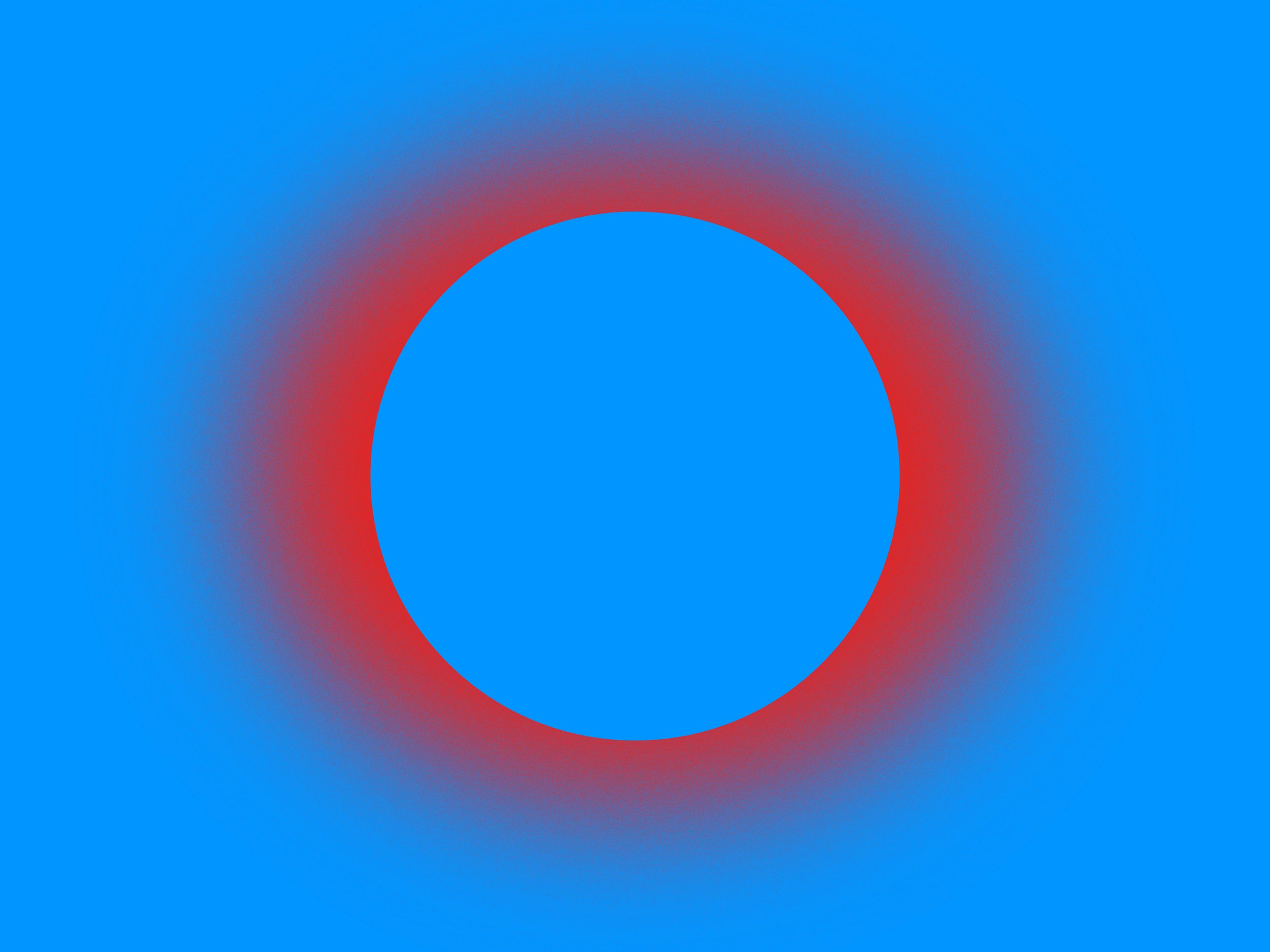
Onyeka Igwe – ‘The Last Librarian in Glasgow’
Design: Tom Joyes
Onyeka Igwe’s play for libraries is informed by socialist-realist participatory theatre and educational plays to think through ways meaning is made collectively and how we tend to look upon the institutions we interact with in everyday life.
‘The Last Librarian in Glasgow’ is a short play set in the near future. The play follows two individuals who join forces in an attempt to resurrect the now-lost tradition of the public lending library. Working through their own indistinct, hazy childhood memories, and instructions from a zine, they start to assemble what they think might be the essentials of a community library, in an old, empty warehouse building.
Onyeka Igwe, ‘The Last Librarian in Glasgow’, Hillhead Library, 2023. Courtesy of the artist. Photo: Alan Dimmick.
Through dialogue and interaction with their new library visitors, the characters work through the assumptions, ideologies and complications of institutional formation. In enacting their new roles as librarians and custodians of an organisation, they call into question the ways institutions have developed and the structures and systems we have inherited in our own public spaces. Through a process of trial and error, they propose ways in which things might be different, and in turn speculate what is needed in society now and in an unknown future.
‘The Last Librarian in Glasgow’ points towards cycles of knowledge loss and reformation, and explores what is valued, inherited and saved for public use. The play highlights how information is accessed and exchanged, as well as changing notions of the civic, and habits of sharing in present times.
Igwe’s play was accompanied by a short piece of writing by the writer and researcher Lola Olufemi. Olufemi’s writing was available from Hillhead Library, Langside Library and Woodside Library, for the duration of the project and is included in the publication ‘anywhere in the universe’, available to buy in our Shop..
Onyeka Igwe is an artist and researcher working between cinema and installation, living and working in London, UK. Her work is animated by the question “how do we live together?” with a particular interest in sensorial, spatial, and non-canonical ways of knowing. She uses embodiment, voice, archives, narration and text to create structural “figure-of-eights”, a format that exposes a multiplicity of narratives.
Solo exhibitions and commissions include ‘A Repertoire of Protest (No Dance, No Palaver)’, MoMA PS1, New York (2023) ; ‘The Miracle on George Green’, Highline, New York (2022); ‘a so-called archive’, LUX, London; ‘THE REAL STORY IS WHAT’S IN THAT ROOM’, Mercer Union, Toronto, Canada, (both 2021), ‘There Were Two Brothers’, Jerwood Arts, (2019), and ‘Corrections’ with Aliya Pabani, Trinity Square Video, Toronto, Canada (2018).
In 2022 Igwe was nominated for the Jarman Award and shortlisted for the Max Mara Art Prize for Women 2022–2024. She was awarded the 2021 Foundwork Artist Prize; the 2020 Arts Foundation Futures Award for Experimental Short Film; and was the 2019 recipient of the Berwick New Cinema Award in 2019.
Lola Olufemi is a black feminist writer and Stuart Hall foundation researcher from London based in the Centre for Research and Education in Art and Media at the University of Westminster. Her work focuses on the uses of the feminist imagination and its relationship to cultural production, political demands and futurity. She is author of ‘Feminism Interrupted: Disrupting Power’ (Pluto Press, 2020), ‘Experiments in Imagining Otherwise’ (Hajar Press, 2021) and a member of 'bare minimum', an interdisciplinary anti-work arts collective.
About the Libraries
Located in Battlefield in the southside of Glasgow, Langside Library was opened in 1915, the last of the Carnegie libraries to be built in the city. Built on the principle of open access, the library was designed by architect George Simpson. The library features a mural of the Battle of Langside, which was painted by staff and students at the Glasgow School of Art and completed in 1921.
One of the largest Carnegie libraries in Glasgow, Woodside Library was designed by J R Rhind and opened in 1905. A large, glazed dome on the roof is a distinctive feature, and sculpture on the front of the building is attributed to William Kellock Brown. After a refurbishment, the library reopened in 2022, and is now home to a flexible community space, new study areas and a colourful woodland-themed children’s area stocked with books chosen by pupils from local primary schools.
The most used branch library in Glasgow, Hillhead Library has been a fixture of Glasgow’s West End since opening in 1975. The building was designed in Modernist architectural style by architects Rogerson & Spence, and the library’s interior open plan arrangement with spiral staircases represents a shift towards fully open access libraries.
Project Details
‘The Last Librarian in Glasgow’ was performed in Langside Library, Woodside Library and Hillhead Library across three days.
Performed by Elicia Daly, Pauline Goldsmith and Louis Pearson.
It is now available as an audio play - listen below.
Listen to ‘The Last Librarian in Glasgow’ –
Thanks
With thanks to staff at Glasgow Life.
Onyeka Igwe would like to thank Gordon Douglas; David Allan; Elly Goodman and Neil Packham at the Citizens Theatre; the Citizens Theatre Community Collective Group; February Workshop participants; and the Red Sunday School.
Thanks to the performers, Elicia Daly, Pauline Goldsmith and Louis Pearson, and to Chizu Anucha for the sound mix.
Related

‘anywhere in the universe’ – Rabiya Choudhry, Kate Davis, Sean Edwards, Onyeka Igwe, Yuri Pattison
Design: Tom Joyes
‘anywhere in the universe’ is a new project that addresses the public library, looking at their present, past and future through a series of artists’ commissions by Rabiya Choudhry, Kate Davis, Sean Edwards, Onyeka Igwe, and Yuri Pattison. Launching in early 2023 with the work of Rabiya Choudhry, each of the commissioned works will be presented incrementally and sited in different locations across Glasgow.
Each artist will approach the library from differing positions and perspectives, from the nature of the buildings, or the systems that they use to organise information, to their social purpose. The project engages with libraries as essential spaces for knowledge exchange and community-building; as inspirational portals for imagination, belonging and civic identity; and as spaces for refuge and radical renewal.
Rabiya Choudhry has produced new illuminated signage for East-End libraries which are of particular significance to the artist. The signs borrow Carnegie’s motif of a flaming torch; a feature of many Carnegie library buildings as well as an emblem used as the bookplate for Carnegie’s own private library collection. In Choudhry’s work, the signs bear the words of African-American civil rights activist and organiser, Ella Baker (1903–1986) who worked to instigate societal change through individual and grassroots community empowerment. Baker’s words ‘give light and people will find the way’, invokes a spirit of togetherness and inspires hope for change.
Onyeka Igwe will develop a series of performances informed by pedagogical plays and socialist-realist participatory theatre to think through ways in which meaning is made collectively and examine how we tend to think about institutions. Working with a group of non-professional actors, the performances will address histories of institutional formation, revision and development within Glasgow’s municipal libraries, including early debates for and against free libraries, committees involved in selecting and banning books from the libraries, and recent community consultations.
Yuri Pattison’s sculptural video installation situated in the Mitchell Library will explore the shifting history of access to information. Paying attention to the establishment and management of libraries and various technologies that have systematised, contained and distributed knowledge, Pattison’s installation draws connections from the chained libraries of the Middle Ages, to the ‘open stacks’ model pioneered at Carnegie Libraries, encompassing more recent digital trends and the rapid reorganisation and encircling of knowledge through networked technology, artificial intelligence and corporate power. Speculating on the future trajectory and structural language of knowledge sharing, Pattison makes clear the political, material and social impacts of digital technology and the increasing privatisation of everyday life in our data-driven age.
Further details on projects by Kate Davis and Sean Edwards will be announced in 2023.
Yuri Pattison, ‘sun_set pro_vision’ (2020 — 2021). Vulcan game engine software, modified Dell PowerEdge R620, GeForce GTX 1650 GPUs, uRADMonitor MODEL A3 atmospheric monitor, HD digital signage monitors, Dexion slotted angle, aluminium EUR pallets, Dell PowerEdge R420 server chassis, “Travels into Several Remote Nations of the World” (London: Benj. Motte,1726) book, decapped GPU chip, cables, ethernet switch, padlock. Courtesy of the artist and mother's tankstation, Dublin & London. Photo: Ros Kavanagh. Commissioned by The Douglas Hyde Gallery, Dublin.
Glasgow has a particularly rich network of libraries, from many small, neighbourhood lending libraries, to the vast Mitchell Library – one of the largest reference libraries in Europe. Several of the local ‘district’ libraries were endowed by Scottish philanthropist and industrialist, Andrew Carnegie (1835–1919) in the early 20th century, some of the 2,811 lending libraries he created world-wide (Carnegie’s work during his lifetime was not without issue, with his extreme wealth built on aggressive industrial practices and racial segregation in US libraries). The district libraries were intended to provide free access to books and represented new technology in the distribution and systematisation of knowledge, whilst providing ‘relief from the pressures of daily life’ in specially designed buildings with high windows, vaulted ceilings, and ornate designs, described at the time by Carnegie as ‘palaces for the people’. The remaining Carnegie libraries in Glasgow, where still in use as such, have evolved and diversified to serve their contemporary communities.
Today, despite the drive to transpose many forms of knowledge online, there remains a distinct role for libraries. They are some of the last truly civic spaces in the heart of our communities: non-monetised, inter-generational spaces of exchange and refuge open to everyone, offering access to information, facilitating communal empowerment and advocacy, attributes that have been consistently brought into sharp focus over recent years and during the Covid-19 pandemic when many were closed.
Talking about his love of books to The Art Newspaper, American artist Charles Gaines explained that in his youth he had never been introduced to the true power and significance of African art; “but then I started reading some books,” he says, “and, obviously, books are the most ingenious invention in the history of anywhere in the universe.” It is through that notion, of holding books in the highest regard and valuing the possibility of discovery, of the adjacent, the tangent and the surprising, that our public libraries will be explored, unfolding as new bodies of knowledge.
Onyeka Igwe, ‘a so-called archive’ (2020). Film still. Courtesy of the artist.
About the artists /
Rabiya Choudhry was born in Glasgow in 1982 to Scottish and Pakistani parents. Choudhry studied at Edinburgh College of Art to MA level, graduating in 2006. She lives and works in Edinburgh.
Choudhry’s work explores the themes of identity and cultural displacement in contemporary British society with a darkly comedic approach. Her work expresses the complicated coupling of eastern and western cultures in richly vibrant portrayals of the different autobiographical portrayals. She makes paintings including large scale canvases, miniatures, murals, small painted sculptures, textiles and text-based artworks.
Recent exhibitions include ‘TESTAMENT’, CCA Goldsmiths, London (2022); ‘ambi’ with Fiona Jardine, Raisa Kabir, and Hanneline Visnes, CCA Glasgow; ‘Fabric of Society’ with Raisa Kabir, Jasleen Kaur and Rae-Yen Song, Glasgow International (both 2021); ‘BIG BROON STRESSED OOT EYES’ commissioned by Tramway, Glasgow (2020); ‘Coco!Nuts!’ (solo) Transmission Gallery (2018) and ‘DCA Thomson’, Dundee Contemporary Arts (2016-17).
Choudhry’s work ‘Dad’ (2018) is on permanent display at the Gallery of Modern Art, Glasgow after a major acquisition through the Contemporary Art Society’s Rapid Response Fund in 2020.
Kate Davis (b. New Zealand, lives and works in Glasgow) works across film/video, drawing, printmaking, installation and bookworks. Questioning how to bear witness to the complexities of the past, Davis’ artwork is an attempt to reconsider what certain histories could look, sound and feel like. This has often involved responding to the aesthetic and political ambiguities of historical artworks and their reception.
Solo exhibitions include: Neuer Aachener Kunstverein; A-M-G5 at 20 Albert Road, Glasgow; LUX, London; Stills, Edinburgh; Dunedin Public Art Gallery, New Zealand; The Drawing Room, London; Temporary Gallery, Cologne; GoMA, Glasgow; Galerie Kamm, Berlin; Museo de la Ciudad and La Galeria de Comercio, Mexico; Tate Britain, London; and Kunsthalle Basel amongst others.
Recent group exhibitions and screenings include: ‘Termite Tapeworm Fungus Moss’, CCA Glasgow; ‘Chips and Egg’, The Sunday Painter, London; 35th Kassel Documentary Film and Video Festival; ‘Class Reunion’, MUMOK, Vienna; ‘A Slice Through the World: Contemporary Artists’ Drawings’, Modern Art Oxford; ‘The Driver’s Seat’, Cubitt Gallery, London; The Margaret Tait Award 2016/17; Cinenova Presents ‘Now Showing’, LUX Cornwall; LUX/ BBC Artists and Archive commission; ‘GENERATION’, Scottish National Gallery of Modern Art; ‘HOUSE WORK CASTLE MILK WOMAN HOUSE’, Glasgow Women’s Library; ‘Art Under Attack’, Tate Britain; ‘The End of the Line: Attitudes in Drawing’, Hayward Touring Exhibition; ‘Art Sheffield 10’ (collaborative commission with Jimmy Robert); and ‘Das Gespinst’, Stadtisches Museum Abteiberg, Monchengladbach.
Sean Edwards (b. Cardiff 1980), graduated with an MA from the Slade School of Art in 2005, and is currently Programme Director for Fine Art & Photography at Cardiff School of Art and Design. Edwards’ work investigates the sculptural and political potential of the everyday, often using remnants and fragments of previous activities as a starting point. In many of the works there is a sense of objects being in-progress, indeterminate and open to change. The work intertwines simple sculptural objects, mixed media installations and audio-visual components with personal family and political histories.
He represented Wales at the 58th Venice Biennale (2019) and was awarded the Turner Prize Bursary in 2020 for the installation ‘Undo Things Done’.
Recent solo exhibitions include 'chased losses', Temple Bar Gallery, Dublin (2022) ‘distant borrowing’, Tanya Leighton, Berlin (2021); ‘Undo Things Done’, Tŷ Pawb, Wrexham, Senedd, National Assembly for Wales and Bluecoat, Liverpool (both 2020); ‘Drawn in Cursive’, MOSTYN, Llandudno and Network, Aalst, Belgium; ‘Putting Right’ Limoncello, London (both 2014); ‘Resting Through’ Kunstverein Freiburg (2012); and ‘Maelfa’ Spike Island, Bristol (2011). Group shows include ‘British Art Show 9’, Hayward Touring and ‘The World We Live In’, Southbank Art Centre, London (both 2022); ‘Olaph the Oxman’, Copperfield Gallery, London (2019); ‘49a’, Limoncello, Woodbridge (2016); ‘This is Your Replacement’, Sies + Höke, Düsseldorf (2016); ‘Un Nouveau Festival 2015’ Centre Pompidou, Paris; and ‘Finite Project Altered When Open’, David Dale Gallery & Studios, Glasgow (both 2015), amongst others.
Onyeka Igwe is an artist and researcher working between cinema and installation. She lives and works in London, UK. Her work is animated by the question “how do we live together?” with a particular interest in sensorial, spatial, and non-canonical ways of knowing. She uses embodiment, voice, archives, narration and text to create structural “figure-of-eights”, a format that exposes a multiplicity of narratives.
Solo exhibitions and commissions include ‘Ungentle’ (with Huw Lemmey), Studio Voltaire, London; ‘The Miracle on George Green’, Highline, New York (both 2022); ‘a so-called archive’, LUX, London; ‘THE REAL STORY IS WHAT’S IN THAT ROOM’, Mercer Union, Toronto, Canada, (both 2021), ‘There Were Two Brothers’, Jerwood Arts, (2019), and ‘Corrections’ with Aliya Pabani, Trinity Square Video, Toronto, Canada (2018). An upcoming solo exhibition, ‘A Repertoire of Protest (No Dance, No Palaver)’ will open at MoMA PS1, New York in March 2023.
Recent group exhibitions include ‘Reconfigured’, Timothy Taylor, New York 2021; Archives of Resistance, Neue Galerie, Innsbruck, Austria, (both 2021); ‘KW Production Series’, KW Berlin (2020); ‘New Labor Movements', McEvoy Foundation for the Arts, San Francisco; ‘[POST] Colonial Bodies II’, CC Matienzo, Buenos Aires, Argentina (2019); there’s something in the conversation that is more interesting than the finality of (a title)’, The Showroom, London (2018); and ‘World Cup!’, articule, Montreal (2018).
In 2022 Igwe was nominated for the Jarman Award and shortlisted for the Max Mara Art Prize for Women 2022–2024. She was awarded the 2021 Foundwork Artist Prize; the 2020 Arts Foundation Futures Award for Experimental Short Film; and was the 2019 recipient of the Berwick New Cinema Award in 2019.
The practice of Yuri Pattison (b. 1986, Dublin, Ireland; lives and works in Paris) connects and materialises the intangible spaces between the virtual and physical through video, sculpture, installation, and online platforms. It explores how new technologies such as the digital economy and online communication have shifted and impacted the systemic frameworks of the built environment, daily life, and our perceptions of time, space, and nature.
Solo exhibitions include ‘clock speed (the world on time)’, mother’s tankstation, London, (2022); ‘the engine’, Douglas Hyde Gallery, Dublin (2020-21); ‘trusted traveller’, Kunsthalle Sankt Gallen (2017); and ‘user, space’, Chisenhale Gallery, London (2016). Selected recent and upcoming group exhibitions include ‘Ruhr Ding: Schlaf’, Urbane Künste Ruhr, Germany; ‘Radical Landscapes’, Tate Liverpool (both 2023); ‘Post Capital’, Kunsthal Charlottenborg, Copenhagen (2022); ‘One Escape at a Time’, 11th Seoul Mediacity Biennale, Seoul; ‘No Linear Fucking Time’, BAK, Utrecht; ‘Proof of Stake' – Technological claims’, Kunstverein in Hamburg, Hamburg; ‘The Ocean’, Bergen Kunsthall, Bergen, Norway; ‘TECHNO, MUSEION’, Bolzano, Italy (2021); ‘Long Live Modern Movement’, CCS Bard, Hessel Museum, New York (2020) and ‘Phantom Plane, Cyberpunk in the Year of the Future’, Tai Kwun Contemporary, Hong Kong (2019).
Kate Davis, ‘Charity’ (2017) 16min HD video, installation view Stills Gallery, Edinburgh, 2017. Courtesy of the artist. Photo: Ruth Clark.
Project Details
Sean Edwards –
Yuri Pattison –
Kate Davis –
Onyeka Igwe –
Rabiya Choudhry –
Each artist project was accompanied by writing available from library locations for the duration of the project and from The Common Guild website for a limited time. The texts will be gathered together in a publication to be released in October 2023.
Video: Courtesy of The Ampersand Foundation. Realised by Piotr Sell.
Shop / Buy ‘anywhere in the universe’
Further Info
‘anywhere in the universe’ is supported by –
Related
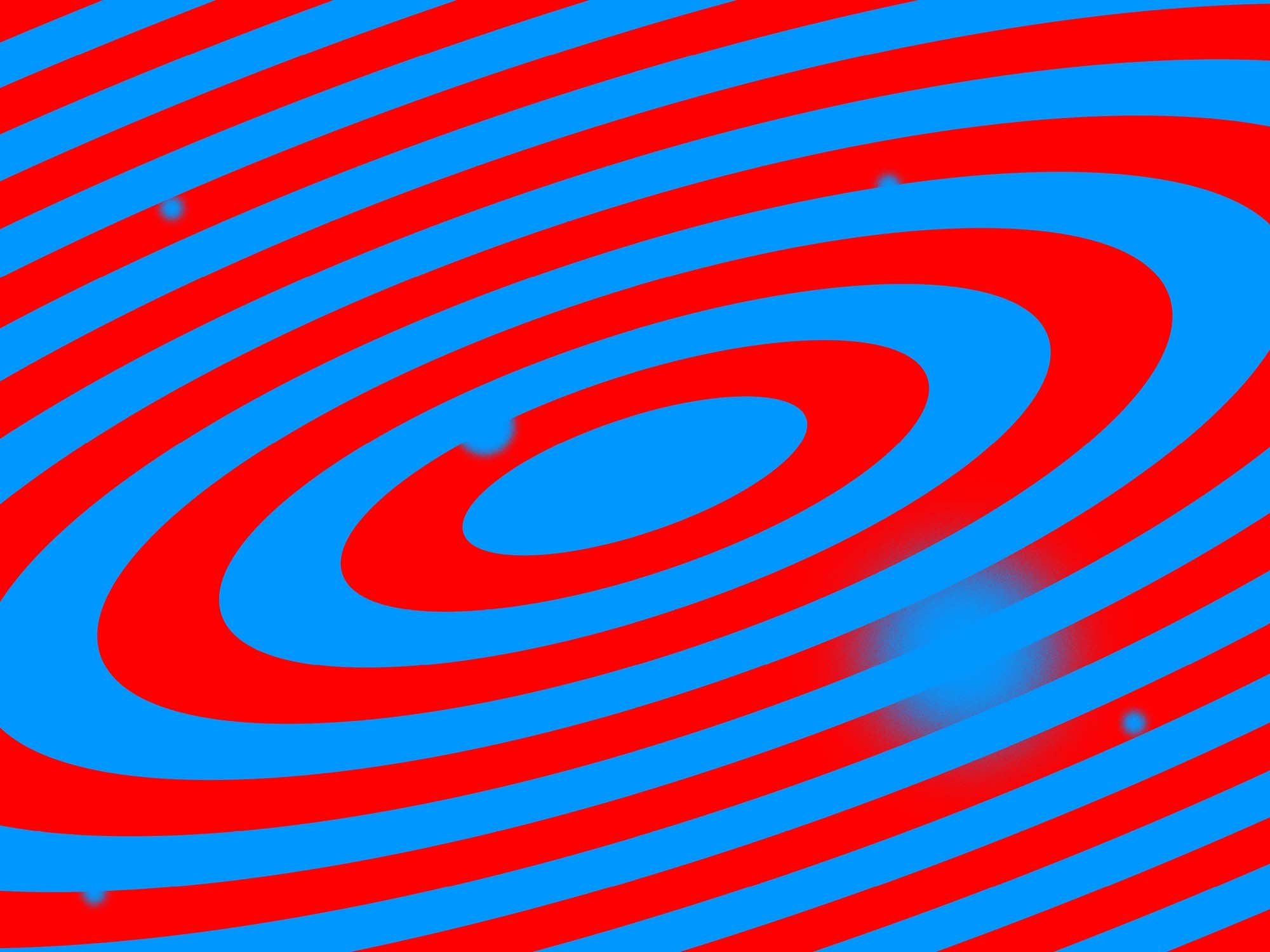
Rabiya Choudhry – ‘Give light and people will find the way (Ella Baker)’
Design: Tom Joyes
Rabiya Choudhry’s new illuminated artworks for three East-End libraries have been created for places which hold significance for the artist. Their design is based on a painting by Choudhry, part of the artist’s ongoing project ‘Lost Lighting’ – a series of lighting artworks for public places intended to “act like a vigil in the dark”.
Rabiya Choudhry, ‘Give light and people will find the way (Ella Baker)’ (2022) installation view Glasgow Women’s Library 2023. Courtesy of the artist. Photo: Isobel Lutz-Smith.
‘Give light and people will find the way (Ella Baker)’ (2022) is the first Lost Lighting artwork to be realised in public space. Taking shape as illuminated signs, they repurpose Andrew Carnegie’s flaming torch motif; a feature found on many Carnegie library buildings as well as an emblem used in the bookplate for his own private library collection.
In Choudhry’s work, the torch is encircled with the words of African-American civil rights activist and organiser, Ella Baker (1903 – 1986) who worked to instigate societal change through individual and grassroots community empowerment. Baker’s words ‘give light and people will find the way’, are a manifestation of power for ordinary people, invoking a spirit of togetherness and inspiring hope for change.
Choudhry says, “Ella Baker came to me through light. Her words felt like a special gift after years of contemplating life, loss, and light during one of the most difficult times. Her life, actions, and words are hugely inspiring and articulate what I wanted to echo in these public artworks for libraries at a time where light comes at some cost and hope is hard to put into words.”
Choudhry’s illuminated artworks were accompanied by a fragment of narrative non-fiction from the award- winning journalist and author, Chitra Ramaswamy. Ramaswamy’s writing was available to pick up from April 2023 from Dennistoun Library, Shettleston Library and Glasgow Women’s Library for the duration of the project and is included in the publication ‘anywhere in the universe’, available to buy in our Shop.
Rabiya Choudhry was born in Glasgow in 1982 to Scottish and Pakistani parents. Choudhry studied at Edinburgh College of Art to MA level, graduating in 2006. She lives and works in Edinburgh.
Choudhry’s work explores themes of identity and cultural displacement in contemporary British society with a darkly comedic approach. Her work expresses the complicated coupling of eastern and western cultures in richly vibrant autobiographical portrayals. Recent exhibitions include ‘TESTAMENT’, Goldsmiths CCA, London (2022); ‘ambi’, CCA Glasgow; and ‘Fabric of Society’, Glasgow International (both 2021). Choudhry’s work ‘Dad’ (2018) was acquired by the Gallery of Modern Art, Glasgow in 2020 and is now on permanent display there.
Chitra Ramaswamy is an author and journalist. Her latest book,‘Homelands: The History of a Friendship’(Canongate) is a work of creative non-fiction exploring her friendship with a 98-year-old German Jewish refugee called Henry Wuga and winner of the 2022 Saltire Non-Fiction Book
of the Year. Her first book, ‘Expecting: The Inner Life of Pregnancy’ (2016) won the Saltire First Book of the Year Award and was shortlisted for the Polari Prize.
She has contributed essays to Antlers of Water, Nasty Women, The Freedom Papers, The Bi:ble, and Message From The Skies. She writes for The Guardian, is the restaurant critic for The Times Scotland, and broadcasts for BBC radio.
Rabiya Choudhry,‘The Lost Ones’ (2021). Installation view, ‘TESTAMENT’, Goldsmiths CCA, 2022. Photo: Rob Harris. Courtesy of the artist.
About the Libraries
Dennistoun Library was opened in 1905. Designed by architect James Robert Rhind in Edwardian Baroque style, Dennistoun Library was one of the first Carnegie libraries to open in Glasgow. The building was refurbished between 1967 and 1968 by Robert Rogerson and Philip Spence, who were the architects of Hillhead Library.
Formerly Bridgeton Library, the building that is now home to Glasgow Women’s Library was also designed by James Robert Rhind and opened in 1906. The Women’s Library moved into the building in 2013, after the Bridgeton library relocated to The Olympia by Bridgeton Cross in 2012. Glasgow-based architectural studio Collective Architecture redeveloped the building which reopened in 2015. The Women’s Library is the only Accredited Museum in the UK dedicated to women’s lives, histories and achievements.
Shettleston Library was designed by architect Thomas Gilchrist Gilmour and opened in 1925. Situated in Glasgow’s East End, the library is built of red brick and blonde sandstone and features a stained glass portrait of Saint Mungo.
Project Details
Location
Dennistoun Library
2A Craigpark, G31 2NA.
Transport links: Bellgrove and Duke Street Train Stations
Shettleston Library
154 Wellshot Rd, G32 7AX.
Transport links: Shettleston and Carntyne Stations
Glasgow Women’s Library
23 Landressy Street, G40 1BP
Transport links: Bridgeton Station
Access
All libraries are wheelchair accessible.
Accessible toilets are available.
Further details from glasgowlife.org.uk/libraries; womenslibrary.org.uk; or contact info@thecommonguild.org.uk for more information.
With thanks to staff at Glasgow Life and Glasgow Women’s Library.
Related

Basel Abbas and Ruanne Abou-Rahme – ‘an echo buried, buried, but calling still’
Basel Abbas and Ruanne Abou-Rahme, ‘an echo buried, buried, but calling still’(performance still) (2022). Courtesy of the artists. Photo: Alan Dimmick
As a part of ‘May amnesia never kiss us on the mouth’ (2020–ongoing), Basel Abbas and Ruanne Abou-Rahme will complement their multi-channel sound and video installation with the immersive audio-visual performance ‘an echo buried, buried, but calling still’ (2022).
This live work will draw upon sound, video, and text from the artist’s larger archive of found and self-authored performances. Through live vocals, electronics, sound sampling and projection, this new work examines the significance of voice and embodiment through song as a testimony to the resilience of communities under threat.
In performance, the body becomes a medium, ushering in a collective voice to echo for posterity through song.
Basel Abbas and Ruanne Abou-Rahme, ‘an echo buried, buried, but calling still’(performance still) (2022). Courtesy of the artists. Photo: Alan Dimmick
Basel Abbas (b. Nicosia, Cyprus, 1983) and Ruanne Abou-Rahme (b. Boston, USA, 1983) have had solo exhibitions at, among others, the Art Institute of Chicago (2021); Kunstverein in Hamburg (2018); Art Jameel Project Space Dubai (2017); Alt Bomontiada, Istanbul (2017); and Carroll / Fletcher, London (2016).
Their work has been included in major international biennials such as the 12th Sharjah Biennial (2015), the 10th Gwangju Biennale, the 31st São Paulo Biennial (both 2014), the 13th Istanbul Biennial (2013), and the 53rd Venice Biennale (2009). They are currently participating in the 12th Berlin Biennale (2022).
‘May amnesia never kiss us on the mouth’ (2020 - ongoing) has been commissioned and presented by the Museum of Modern Art and the DIA Art Foundation, New York City (2020–2022), and presented at Migros Museum für Gegenwartskunst, Zurich (2022).
Project Details
Basel Abbas and Ruanne Abou-Rahme ‘an echo buried, buried, but calling still’ Saturday 10 September, 7pm
Performance time: c. 50 minutes
Tickets
Free, but limited availability
Access
Intertitles are in Arabic and English.
Seating is available.
The performance will take place on the ground floor.
5 Florence Street has step free access.
Accessible toilets are available.
Related

Basel Abbas and Ruanne Abou-Rahme – ‘May amnesia never kiss us on the mouth’
Basel Abbas and Ruanne Abou-Rahme, ‘May amnesia never kiss us on the mouth: Only sounds that tremble through us’(2020–2022). Installation view, The Common Guild, 2022. Photo: Isobel Lutz-Smith.
‘May amnesia never kiss us on the mouth’ (2020-ongoing) by the New York and Ramallah-based artists Basel Abbas and Ruanne Abou-Rahme is an evolving multipart project featuring sound, moving-image installation and live performance.
The project foregrounds Abbas and Abou-Rahme’s remarkable personal archive of found video clips and ephemeral recorded footage, collected by the artists since the early 2010s and the beginning of the Arab Revolutions. Posted online and on social media by ordinary people living in and around Palestine, Iraq and Syria, the video clips, often ad hoc and recorded on mobile devices, focus on song, dance, protest and performance – affirmative acts of vocalisation and physical gesture.
Basel Abbas and Ruanne Abou-Rahme, ‘May amnesia never kiss us on the mouth: Only sounds that tremble through us’(2020–2022). Installation view, The Common Guild, 2022. Photo: Isobel Lutz-Smith.
This collected material forms the foundation of Abbas and Abou-Rahme’s multi-layered installation 'Only sounds that tremble through us' (2022). The digital traces of these performing bodies are brought together with new performances created by the artists with dancer Rima Baransi and musicians Haykal, Julmud, and Makimakkuk, working in Ramallah, Palestine. Footage is looped, manipulated and superimposed upon images that include solarised landscapes and destroyed dwellings. Projections are rhythmic and augmented with a fragmentary script in both Arabic and English, detailing experiences of violence, trauma, displacement and resistance. The sound, composed by the artists, shifts between the solo voice, singing dirge-like, and a reverberating audio, heavy with bass notes. As sound and moving image accumulates, a testimony of shared experience begins to emerge, and in turn a collective body of knowledge.
Basel Abbas and Ruanne Abou-Rahme, ‘May amnesia never kiss us on the mouth: Only sounds that tremble through us’(2020–2022). Installation view, The Common Guild, 2022. Photo: Isobel Lutz-Smith.
‘May amnesia never kiss us on the mouth’ bears witness to geopolitical upheavals, forced migration and community disintegration whilst simultaneously enacting modes of survival for those marginalised by colonial-capitalist conditions – reclaiming space for alternative political logics to persist. The project’s overarching title, ‘May amnesia never kiss us on the mouth’ is borrowed from the English translation of Chilean writer Roberto Bolaño’s ‘Infrarealist Manifesto’ (1976), used here by Abbas and Abou-Rahme as a reminder to resist forgetfulness and the erasure of personal, political and community histories that disappear all too quickly from consciousness.
Abbas and Abou-Rahme will activate the installation with the live performance ‘an echo buried, buried, but calling still’ (2022). Drawing upon further sound, video, and text from the artist’s larger archive and combining this with live vocals, electronics, sound sampling and projections. This new work examines the significance of voice and embodiment through song as a testimony to the resilience of communities under threat.
This is the most substantial presentation of the work of Abbas and Abou-Rahme in the UK to date. The project has been commissioned by the Museum of Modern Art and the DIA Art Foundation, New York City, and presented at Migros Museum für Gegenwartskunst, Zurich.
Basel Abbas (b. Nicosia, Cyprus, 1983) and Ruanne Abou-Rahme (b. Boston, USA, 1983) have had solo exhibitions at, among others, the Art Institute of Chicago (2021); Kunstverein in Hamburg (2018); Art Jameel Project Space Dubai (2017); Alt Bomontiada, Istanbul (2017); and Carroll / Fletcher, London (2016).
Their work has been included in major international biennials such as the 12th Sharjah Biennial (2015), the 10th Gwangju Biennale, the 31st São Paulo Biennial (both 2014), the 13th Istanbul Biennial (2013), and the 53rd Venice Biennale (2009). They are currently participating in the 12th Berlin Biennale (2022).
Project Details
‘May amnesia never kiss us on the mouth: Only sounds that tremble through us’ (2020–2022) was presented at 5 Florence Street from the 9 September to 9 October 2022. The exhibition was open Thursday – Sunday, 12–6pm and free to enter.
Read the Commentary by Priya Jay –
Listen to Priya Jay read the Commentary here –
Location –
Related

Corin Sworn – ‘Moving in Relation’
Corin Sworn, 'eco-co-location' (performance still) (2021), from the series 'Moving in Relation' (2021-22). Courtesy of the artist. Photo: George Hampton Wale.
Corin Sworn’s investigative series ‘Moving in Relation’ brings together collaborators working in movement, sound and academic thought to research human interrelationships with technology in real time.
Instalments will be presented in public, beginning in 2021 and cumulating in 2023, encompassing a body of research which explores material encounters with algorithmic thought, datafication and its influence on physical bodies. Events takes on an active experimental form, such as the structure of a rehearsal or a public lecture, to examine technical processes such as cloud computing, seeking to make obscure knowledge immanent and palpable.
‘Moving in Relation’ negotiates and performs real-time research and group learning with each event gathering together a temporary discursive community.
Further Info
Corin Sworn is supported by Creative Scotland.
‘eco-co-location’ was supported by Leverhulme Trust.
Project Details
‘Moving in Relation’ was a series of five events which took place between November 2021 – December 2023.
‘eco-co-location’ took place place in a business park in the Clyde Valley on 27 November 2021.
‘This Harmonic Chamber’ was presented in a former loom shed built in the 19th century on 7 April 2022.
Louise Amoore interviewed by Corin Sworn took place online and is available to listen via the link below.
‘The Virtual Boulevard’ an experimental translation workshop took place online between poets in Glasgow and Buenos Aires.
Exhibition ‘In Reflection, Shimmer’ was presented at 60 York Street from 25 November – 16 December 2023.
A publication, ‘Moving in Relation’ will be released in 2024.
Related
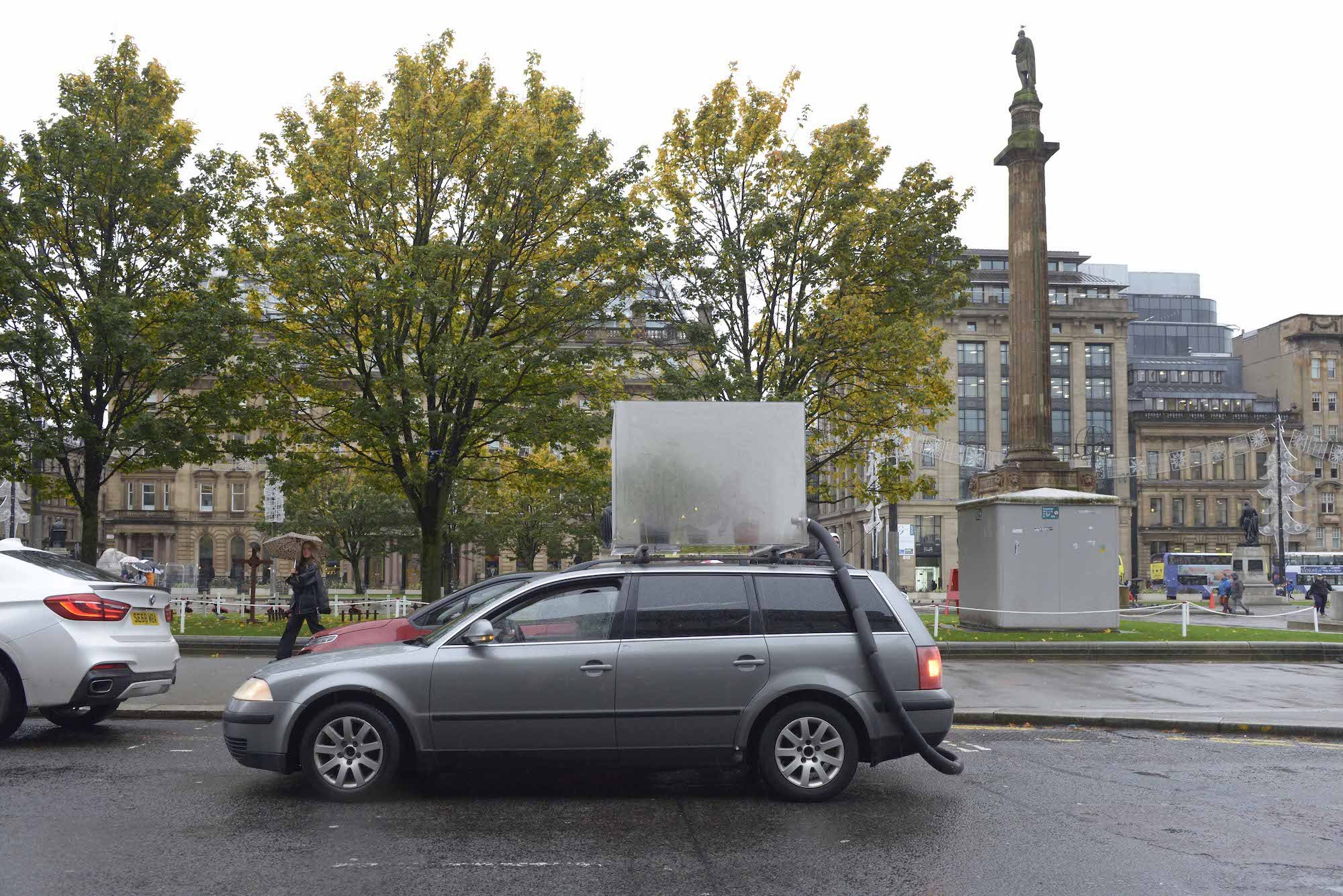
Gustav Metzger – 'Mobbile'
Gustav Metzger, ‘Mobbile’ (1970/2021). Courtesy the Gustav Metzger Foundation. Photo: Alan Dimmick.
As the United Nations Climate Change Conference (COP26) takes place in Glasgow, The Common Guild re-presents Gustav Metzger’s sculpture, ‘Mobbile’, a modified car that collects and stores its own carbon emissions, originally made in 1970 to demonstrate the destructive and harmful effects of manmade pollutants on the natural world.
Gustav Metzger, ‘Mobbile’ (1970/2021). Courtesy the Gustav Metzger Foundation. Photo: Alan Dimmick.
Realised in conjunction with the Gustav Metzger Foundation, ‘Mobbile’ (1970/2021) will appear around Glasgow, culminating in a discussion event on 3 November in conjunction with the University of Glasgow, looking at Metzger’s work and the relationship between art and climate activism.
Project Details
‘Mobbile’ appeared at various locations around Glasgow.
Related

Sharon Hayes – 'Ricerche'
Sharon Hayes, 'Ricerche: two' (2020) Film still, Pictured: Courtnei “Luckey” Townson.
Courtesy of the artist and Tanya Leighton, Berlin and Los Angeles.
American artist Sharon Hayes’ new project with The Common Guild is a suite of three films, shown together for the first time. It is the continuation of Hayes’ on-going ‘Ricerche’ project, including a new commission. ‘Ricerche’ (meaning ‘research’) is comprised of several video works that use the 1964 film ‘Comizi d’Amore’ (Love Meetings) by Italian director, Pier Paolo Pasolini, as a guidepost and framework for an examination of gender, sexuality and contemporary collective identifications.
‘Ricerche’ constitutes an inquiry into the relations between sex, sexuality, gender and politics in the United States today, with nonetheless striking resonance with contemporary discourse across societies elsewhere. It continues Hayes investigation of the act of public speech, and its intersections with history, politics, activism, queer theory, love and sexuality, through both the collective and the individual voice.
Filmed by Hayes at different times since 2013, including during 2020’s critical election year in the US, the works feature a range of individuals, from students at an all-women’s college in Massachusetts, to children of queer or gender non-conforming parents, and members of two women’s tackle football teams. Each film is presented as ‘ricerche’ or research. The most recent, ‘Ricerche: two’, was filmed in Dallas/Fort Worth, Texas, just before the onset of the pandemic. It was commissioned by The Common Guild. The extended interview asks the players what they like about the sport, whether they feel different on and off the field and how playing football relates to other aspects of their lives. This new work will be presented alongside the two existing works in the series; the single-channel video ‘Ricerche: three’ (2013), and a diptych, ‘Ricerche: one’ (2019).
Sharon Hayes, ‘Ricerche: two’ (2020). Installation view, The Common Guild at the former Adelphi Terrace Public School, Glasgow. Photo: Isobel Lutz-Smith.
‘Ricerche’ is presented in the former Adelphi Terrace Public School, south of the river Clyde, opposite Glasgow Green. Originally opened in 1894 following the Education (Scotland) Act of 1872, which made schooling free and compulsory for five to thirteen year olds, the building was used as a site of education for children and young adults until 2010. With thanks to our venue partner Urban Office.
Sharon Hayes (b. 1970, Baltimore, Maryland, USA) lives and works in Philadelphia, USA.
Hayes is one of the most influential politically and socially committed artists working in the United States. She has been the subject of retrospectives at the Whitney Museum of American Art, New York; Museo Nacional Centro de Arte Reina Sofía, Madrid; and Moderna Museet, Stockholm. Hayes’ work is part of the public collections of Tate, London; Museum of Modern Art, New York; Solomon R. Guggenheim Museum, New York; Whitney Museum of American Art, New York; Dallas Museum of Art; San Francisco Museum of Modern Art; Kunstmuseum St. Gallen; Museum of Modern Art Warsaw, Warsaw; among many others. Hayes’ 5-channel video installation 'In My Little Corner of the World, Anyone Would Love You’ (2016) was co-commissioned by The Common Guild and Studio Voltaire, London.
Sharon Hayes holds the position of Professor of Fine Arts at the University of Pennsylvania.
Further Info
With thanks to Tanya Leighton, Berlin and Los Angeles.
Documents
E-flux Announcement – Sharon Hayes: ‘Ricerche’
Sharon Hayes interviewed by Adam Benmaklouf, The Skinny, October 2021
Related
Sam Durant – 'Iconoclasm'
Sam Durant, 'Caracas, 2004' (2018), graphite on paper, 53.5” x 84”, drawing in collaboration with Sam George, Courtesy of the artist and Blum & Poe, Los Angeles. Photo: Makenzie Goodman.
Across multiple outdoor sites in the city, The Common Guild presents Sam Durant’s ‘Iconoclasm’ – a series of drawings depicting acts of destruction enacted upon public statues and monuments. Based on images gleaned from various historical and contemporary sources, including newspapers and television reports, Durant’s graphite drawings render moments of intense disruption and call on current debates about how we relate to symbols in public space.
Produced here as large-scale billboards and street posters, the 14 original graphite drawings use a fugitive, labour-intensive form to document fleeting yet significant moments of historical change, commemorating the action. Their appearance in various sites around the city draws attention to questions of representation on our streets: who gets to occupy them and why.
Sam Durant, 'Iconoclasm', installation view Garscube Road, Glasgow, 2021. Photograph: Isobel Lutz-Smith.
Scenes depicted include religiously motivated acts of destruction from sixteenth-century European Protestants to contemporary Islamic fundamentalism; politically and culturally motivated acts of image-breaking such as the 1871 toppling of the Column Vendome in Paris, in which the artist Gustav Courbet participated, and against communist statues in Europe and Africa; the cultural revolution in China; removals of colonial statues in the Caribbean, Central and South America; and nationalist uprisings of 1956 in Hungary and Egypt, among others.
First exhibited in Detroit in 2019, Durant’s drawings are a reminder of the notion of a living history, reflecting humanity’s need to celebrate and commemorate, as well as the compulsion to destroy symbols of a past that come to be in conflict with current attitudes, concerns and awareness. The works are all the more resonant today, in light of the recent and on-going debates about public statuary, nowhere more so than here in the UK, where so many of our celebrated monuments commemorate battles fought on foreign soil and the repressive colonial actions of the British Empire. Given the current global rise in political polarisation, religious extremism and nationalism, this work presents a critical opportunity to explore humanity’s relationship with the symbols of the past and how to address them as society changes, as well as ways of reflecting on present-day image-making.
Sam Durant (b. 1961, Seattle, Washington USA) lives and works in Berlin, Germany and Los Angeles, California, USA.
Durant is an interdisciplinary artist whose works engage a variety of social, political, and cultural issues that emphasise democratic ideals, racial equality and social justice. His works make connections with present and ongoing social and cultural issues, often taking up forgotten events from the past.
Durant’s interest in monuments and memorials began with ‘Proposal for Monument’ at Altamont Raceway (1999), continued notably with ‘Proposal for White and Indian Dead Monument Transpositions’ (2005) that recontextualizes memorials to victims of the conquest of North America, and more recently with ‘Proposal for Public Fountain’ (2015), a marble work depicting an anarchist statue being blasted by a police water cannon. He has recently presented major public art projects, ‘Labyrinth’ (2015) in Philadelphia which addressed mass incarceration and ‘The Meeting House’ (2016) in Concord, MA that took up the subject of race in colonial and contemporary New England.
Durant’s latest public sculpture, ‘Untitled (drone)’, (2021) – a monumental fiberglass sculpture in the shape of an abstracted drone ¬– is the second commission for the High Line Plinth, New York City, and is on view from May 2021 until 2022. It raises the issues of drone warfare and surveillance in American society.
His work has been included in numerous international exhibitions including Documenta 13, the Yokohama Triennial, the Venice, Sydney, Busan, Liverpool, Panama, and Whitney Biennials. His work can be found in many public collections including Fonds National d’Art Contemporain, Paris, France, UCLA Hammer Museum, Los Angeles, CA, Museum of Modern Art, New York, NY, The Museum of Contemporary Art, Los Angeles, CA, Project Row Houses, Houston, TX, Stedelijk Museum voor Actuele Kunst, Ghent, Belgium, Tate Modern, London, England.
Durant teaches art at the California Institute of the Arts.
Further Info
Documents
Read the review by John Quin in Art Review
Read the review by Rachel Harris-Huffman in The List
Read the review by Donald Butler in MAP Magazine
Additional Links
Related

Mikhail Karikis – 'Acoustics of Resistance'
Design: Maeve Redmond.
“Listening is not a passive experience. It doesn't just happen to us. Listening is an action. When I listen, I choose to direct my attention to an other. So, when I listen, the ‘I’ becomes a ‘we’. And I don't only mean listening with my ears, but my entire body receiving, sensing the other. I mean listening as a way of thinking, as an attitude and a way of being.”
‘Acoustics of Resistance’ brings together a range of sound recordings made by Mikhail Karikis made at different times and in varied locations over recent years. These are woven together with compositional fragments and a text written and spoken by the artist that reflects on the climate crisis and proposing listening as a form of solidarity, care and activism.
Karikis’ monologue, recorded in Lisbon, described a youth protest against climate change that the artist joined in 2019. Swept up by the crowd and enfolded in rushing waves of noise, Karikis tunes in to the sonic activity of socio-political change – the chants, shouts, drums and whistles – and the transformative power of communal voice.
Protest chants merge with choral recordings performed by primary school children and the Liverpool Socialist Singers whose collective whispers, hisses and gasps for breath fluctuate between a sense of crowded human presence, existential urgency and the sonics of a tumultuous and foreboding weather system.
Mikhail Karikis, 'No Ordinary Protest' (2018). Production still. Courtesy of the artist.
Mikhail Karikis is a Greek-British artist, working and exhibiting internationally. His work in sound, moving image and performance develops site-specifically through collaborations mostly with communities located outside the context of contemporary art and, in recent years, with children, teenagers, young adults and people with disabilities. He employs listening, communal sound-making and video to question the power dynamics between the visible and the unheard and as forms of care and activism. His projects highlight alternative modes of human action and solidarity, while nurturing critical attention, dignity and tenderness.
Karikis has exhibited in leading museums and biennials worldwide. Solo exhibitions include ‘Ferocious Love’, Tate Liverpool (2020); ‘For Many Voices’, MIMA, Middlesbrough; ‘Children of Unquiet’, Tate St Ives; ‘I Hear You’, De la Warr Pavilion, Bexhill-on-Sea; MAM Screen, MORI Art Museum, Tokyo (all 2019-20); ‘Children of Unquiet’, Fondazione Sandretto Re Rebaudengo, Torino (2019); ‘No Ordinary Protest’, Whitechapel Gallery, London (2018-19); ‘The Chalk Factory’, Aarhus 2017 European Capital of Culture (2017). He has shown at 54th Venice Biennale, (2011), IT; Manifesta 9, Genk (2012); 19th Sydney Biennale, (2014); 2nd Kochi-Muziris Biennale (2016) and MediaCity Seoul (2015). He is professor at MIMA School of Art & Design.
Project Details
‘In the open’ was available for a limited time during 2021 to listen to on Bandcamp and Podcast platforms. Each work was mastered for listening on headphones whilst walking and spending time outdoors.
Mastering by Stephan Mathieu /
Schwebung Mastering.
Credits
Voice by Mikhail Karikis, Lisbon, April 2021.
Dawn chorus fields recording, London, April 2020.
Liverpool Socialist Singers, Liverpool, March 2020. Extract of a recording appearing in "Ferocious Love”, 2020, by M. Karikis, commissioned by Tate Liverpool and Birmingham City University.
Climate protest, Luxembourg City, March 2019
Year 3, Mayflower Primary School, London, May 2018, extract of a recording appearing in “No Ordinary Protest”, 2018, by M. Karikis commissioned by Whitechapel Gallery.
References
LaBelle, B., Sonic Agency: Sound and Emergent Forms of Resistance, (Goldsmiths Press: London) 2018.
Safran Foer, J., We Are The Weather: Saving the Planet Begins at Breakfast, (Hamish Hamilton: UK, USA, Canada, Australia, India, New Zealand, South Africa), 2019.
Bernard Lynch, Easter email message, 2021.
Further Info
Part of ‘In the open’ series II
Related
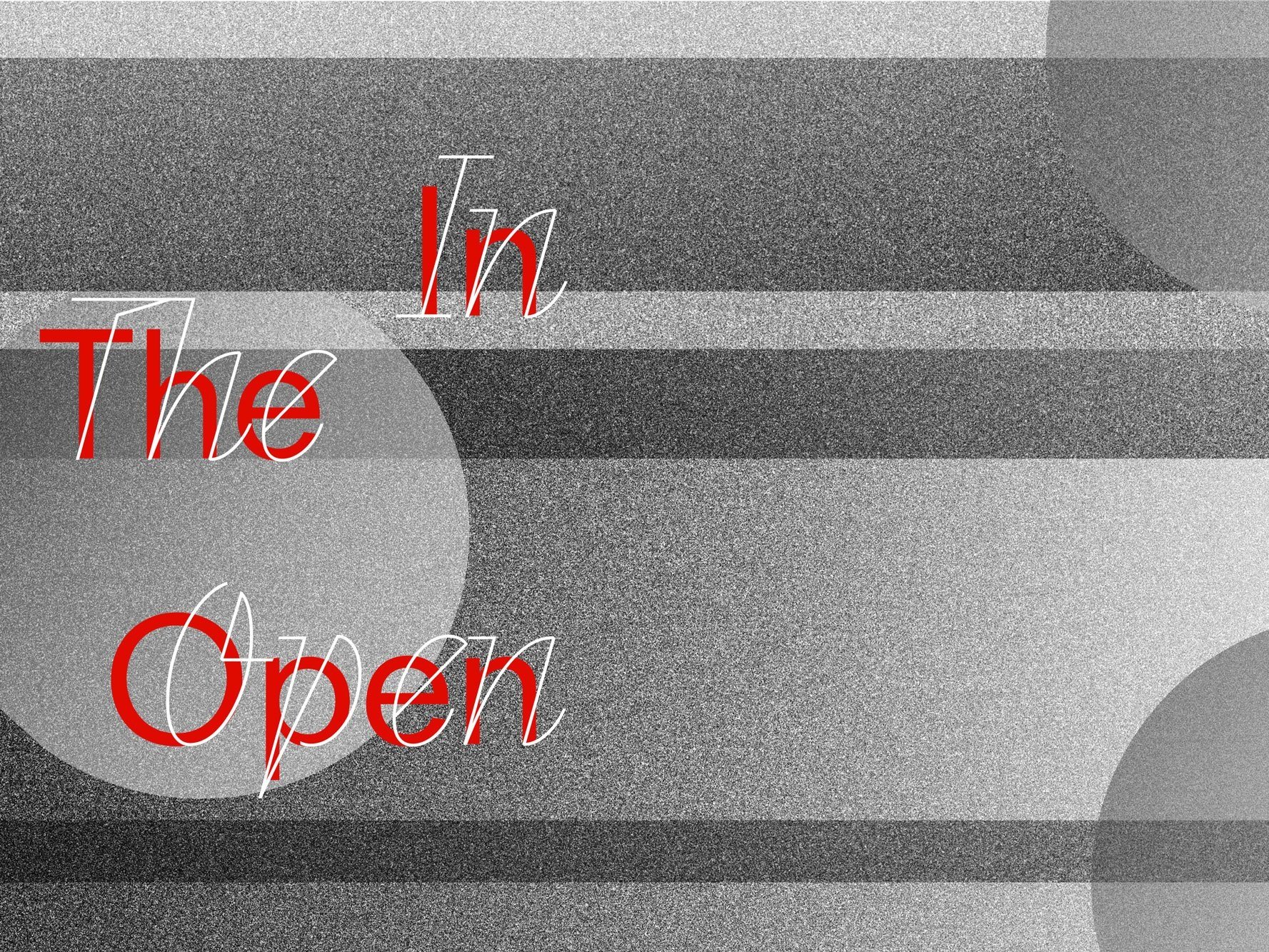
Rosa Barba – 'Faring with Faraway'
Design: Maeve Redmond.
Rosa Barba’s artistic practice typically engages film as both a narrative and a sculptural medium. In ‘Faring with Faraway’ she visualises with sound, using cinematic language, and various elements like a series of images. Together, they produce a hybrid, layered experience in which notions of time are both stretched and compressed.
‘Faring with Faraway’ includes fragments of archival interviews with certain figures whose lives have captivated Barba, selected from the spoken word recordings and oral history archives kept by the British Library. Voices, predominantly of women, recount life stories, with memories of childhood, family and working life. The speakers include the socialist educator Hilda Brown; Katharine Ramsay, Duchess of Atholl, the first Scottish woman elected to the House of Commons; and Mary Chamberlain, an early proponent of oral studies and women’s history. All of the speakers were activists and campaigners for the welfare of women, and the rights of children and refugees. Within their personal stories are certain hints towards the pervasive context of British Imperialism in the first half of the 20th century, testament to a socio-political heritage that continues to reverberate in the present.
Voices intermingling with environmental sounds, musical abstracts, birdsong and animals. A field recording of a cargo train captured by the artist as it passes through the town of Marfa, Texas provides a rhythmic leitmotif, carrying the sequence along. Here the women’s voices function more like instruments in dialogue, overlapping, blending, harmonising and chattering together, allowing the listener to transcend the archival material itself and appreciate its tonal nature as part of a larger musical composition.
Rosa Barba engages within the medium of film through a sculptural approach. In her works, Barba creates installations and site-specific interventions to analyse the ways film articulates space, placing the work and the viewer in a new relationship. Questions of composition, physicality of form and plasticity play an important role for the artist as Barba examines the industry of cinema and its staging vis-à-vis gesture, genre, information and documents. Her film works are situated between experimental documentary and fictional narrative. They often focus on natural landscapes and human-made interventions into the environment and explore the relationship of historical records, personal anecdotes, and filmic representation, creating spaces of memory and uncertainty.
She has had solo exhibitions at prestigious institutions worldwide (including Wäinö Aaltonen Museum of Art, Turku (2020); CCA, Kitakyushu (2019); Museo Nacional Centro de Arte Reina Sofia, Madrid; Pirelli HangarBicocca, Milan; Malmö Konsthall (all 2017); Schirn Kunsthalle, Frankfurt (2016); MIT List Visual Arts Center, Cambridge MA (2015); MAXXI, Rome(2014); Tate Modern, London (2010); and has participated in numerous group exhibitions and biennials, including the 32nd Bienal de São Paulo, Brazil (2016) and the 53rd and 56th Venice Biennale (2009 & 2015). Her work is part of important collections and has been widely published. In 2020, Barba was awarded the Calder Prize by The Calder Foundation.
Further Info
Part of ‘In the open’ series II
Project Details
‘In the open’ was available for a limited time during 2021 to listen to on Bandcamp and Podcast platforms. Each work was mastered for listening on headphones whilst walking and spending time outdoors.
Mastering by Stephan Mathieu /
Schwebung Mastering.
Design by Maeve Redmond.
Credits
‘Faring with Faraway’ contains extracts of recordings held by the British Library Sound Archive.
References
‘Life story interview with the late educationist, Hilda Brown (1909-1996)’, reference C468/011 (1991).
‘Life story interview with Mary Chamberlain, oral historian,’ reference C1149/27 (2012-14).
‘Life story interview with the late Kathleen Halpin (1903-1999) who was an active member of the London and National Society for Women's Service (now the Fawcett Society) until her death,’ reference C468/002 (1991).
‘Life story interview with the late British Labour politician, Norah Phillips, Baroness Phillips (1910-1992)’, reference C468/014 (1992).
Patrick Sellar interviewed by Mark Peter Wright, ‘The wildlife recordist discusses his personal history and the formation of organisations and archives he helped to establish,’ reference C1672/2 (2013).
All five interviews © British Library.
[Patrick Sellar’s interview is part of the Wildlife Sounds collection]
Items held in the collections of the British Library Sound Archive
Katharine Ramsay, Duchess of Atholl, ‘The New Outlook for Women’ (1929). Original issue number: Columbia 5340.
Constance Ripman, ‘Breakfast Time’ (1939). Speakers: Sally Latimer, Henry Oscar, Pamela Ripman. Issued as part of the Linguaphone 'Let's Talk English' series, published by Dents, October 1946. Original issue number: Linguaphone English 2E1.
With thanks to Mary Stewart, Oral History/National Life Stories British Library, Chloe Reith and Stephan Mathieu.
Related
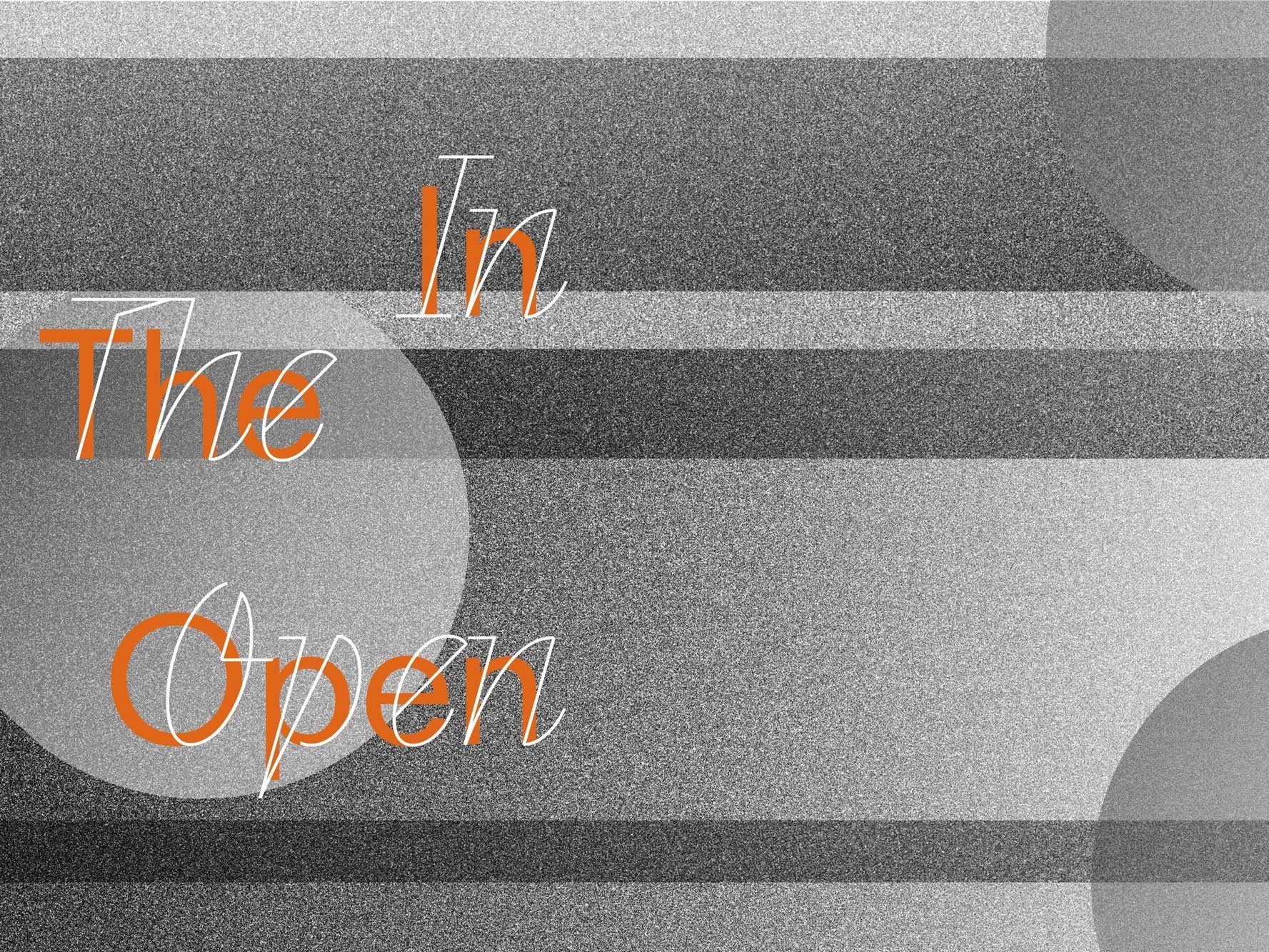
Lawrence Lek – 'Rift EP'
Design: Maeve Redmond.
Artist and musician Lawrence Lek composes expansive atmospheric soundtracks to accompany the virtual reality worlds of his computer-generated film-works. In these hybrid, simulated universes, music plays a central role in world-building, creating a powerful sense of place. The sonic expression in Lek’s fictional realities fill spatial experience, driving the narrative through texture and emotional tone.
Like Lek’s film soundtracks, the ‘Rift EP’s instrumental synth melodies play on the musical language of video games, cinema and science fiction scores, evoking other worlds, different times and imagined places. They also embody a progressive, journeying quality. Presented as one continuous track, the ‘Rift EP’ has four distinct sections – 'Portal', 'League', 'Cyber' and 'Fantasy' – each with slightly different sonic characteristics and parallels to the developing levels of gameplay.
The experience of listening to the ‘Rift EP’ is akin to that of navigating the impossible architectures and vast, para-fictional CGI cityscapes of Lek’s films. As a soundtrack to walking outdoors, ‘Rift’ offers a transportive lens turning our surroundings into a film set, augmenting our perception of everyday reality and expanding the imagination beyond the here and now. A transcendent otherworldly space emerges through the alternating patterns and momentum of the music which holds within it a future-oriented flow.
Lawrence Lek, 'Rift EP' (2021). Courtesy of the artist.
Lawrence Lek is a London-based artist, filmmaker, and musician working in the fields of virtual reality and simulation. Drawing from a background in architecture and electronic music, he creates fictional versions of real places that speculate on alternate geopolitical movements and future technological conflicts. This cinematic universe features characters caught between human and machine worlds: digital nomads, AI satellites, and online superstars, all searching for autonomy under alien conditions of existence.
His works include the virtual world 'Unreal Estate (The Royal Academy is Yours)’ (2015), the dystopian Brexit simulator ‘Europa, Mon Amour’ (2016), the video essay 'Sinofuturism (1839-2046 AD)' (2016), the AI-coming of-age story 'Geomancer’ (2017), the video game '2065' (2018), and the VR simulation 'Nøtel' (2019, in collaboration with Kode9). His CGI feature film 'AIDOL' (2019) was presented at the Moscow International Experimental Film Festival, the International Film Festival Rotterdam, and transmediale 2020, Berlin. Recent solo exhibitions include 'Ghostwriter', CCA Prague (2019); 'Farsight Freeport', HeK, Basel (2019); Nøtel, Urbane Künste Ruhr, Essen (2019); 'AIDOL', Sadie Coles HQ, London (2019); and '2065', K11, Hong Kong (2018). Lek composes soundtracks and conducts audio-visual mixes of his films, often incorporating live playthroughs of his open-world video games. Soundtrack releases include 'AIDOL OST' (Hyperdub, 2020) and 'Temple OST' (The Vinyl Factory, 2020).
Project Details
‘In the open’ was available for a limited time during 2021 to listen to on Bandcamp and Podcast platforms. Each work was mastered for listening on headphones whilst walking and spending time outdoors.
Credits
Mastering by Stephan Mathieu /
Schwebung Mastering.
Design by Maeve Redmond.
Further Info
Part of ‘In the open’ series II
Related

Tarik Kiswanson – 'Surging'
Design: Maeve Redmond.
Tarik Kiswanson’s composition ‘Surging’ occupies a weightless space in which a disorienting collage of sounds hangs suspended in a formless silence, shifting in and out of focus. Sounds crash and objects collide, breaking together; glass shatters, perhaps a window; and sirens ring out, immediately recognisable. No sooner do they arise than the sounds are abruptly interrupted before their auditory arc is complete; swallowed up and refracted elsewhere. This aural debris – a combination of recorded, collected and repurposed sound – appears to have its own agency, trajectory and dynamic rhythm.
Occasionally a child’s voice speaks through the silence, posing questions that refuse resolution and articulating phrases from an unknown narrative that guides the listener deeper still into an uncertain, deconstructed world. The voice is Kiswanson’s preadolescent collaborator Vadim, a Romanian-French boy living in Paris. The figure of the preadolescent child is significant to Kiswanson, symbolising a moment in a child’s growth and development when they first become aware of their own sense of self, who they are in relation to others, and their place in society.
Vadim’s words, extracts from the artist’s writing, are spoken directly to the ear of the listener, as if tuning in to an inner voice. As he speaks, the hybridity of a voice that holds multiple linguistic and cultural associations becomes clear, his words layered with different contexts, conditions and geographies.
Through syncopated repetition, ‘Surging’ gradually builds a disordered looping pattern that refuses to settle. The work exists in a buoyant, levitating state of tension and instability where things connect, collide, disintegrate and reform endlessly; a reoriented space of existence and possibility.
Tarik Kiswanson, 'Respite' (2020). Courtesy of the artist. Photo: Vinciane Lebrun.
Tarik Kiswanson’s work encompasses sculpture, writing, performance, drawing, sound and video works. His fundamental question is ontological: it is inscribed in philosophical research into Being as being. Notions of rootlessness, regeneration, and renewal are recurring themes in his oeuvre. Born in Halmstad, Sweden in 1986 where his family exiled from Palestine, his artistic practice evinces an engagement with the poetics of métissage: a means of writing and surviving between multiple conditions and contexts. His various bodies of work can be understood as a cosmology of related conceptual families, each exploring variations on themes like refraction, multiplication, disintegration, levitation, hybridity, and polyphony through their own distinct language.
Kiswanson has most recently presented his work at Centre Pompidou, Paris (2019), Ural Biennial, Ekaterinburg (2019), Performa Biennial, New York (2019) Lafayette Anticipations, Paris (2018), Fondation Ricard, Paris (2018) and the Gwangju Biennial (2018). His retrospective exhibition ‘Mirrorbody’ is currently at Carré d’Art – Musée d’Art Contemporain accompanied by a forthcoming monograph published by Distanz. His upcoming solo exhibitions include MMAG Foundation, Amman (2021), M HKA, Museum of Contemporary Art, Antwerp and Bonniers Konsthall, Stockholm (both 2022).
Project Details
‘In the open’ was available for a limited time during 2021 to listen to on Bandcamp and Podcast platforms. Each work was mastered for listening on headphones whilst walking and spending time outdoors.
Credits
Mastering by Stephan Mathieu /
Schwebung Mastering.
Further Info
Part of ‘In the open’ series II
Related

Cally Spooner – 'DEAD TIME: Narrator’s Script’
Design by Maeve Redmond.
Opening with silence, or more accurately with the absence of action, Cally Spooner’s ‘DEAD TIME: Narrator’s Script’ (2019-2021) introduces the listener to an altered sense of time in which no major event nor narrative development takes place. The script is one element drawn from Spooner’s 63-page performance score ‘DEAD TIME’ (2018) which she has been incrementally translating through live performance and installation since composing it in Autumn 2018.
The ‘DEAD TIME’ score is set in “a surveillance-capitalist crime scene” where an absurdist ecosystem of living and non-living characters co-exist in a resistant, pervading present-tense atmosphere; waiting, rehearsing, repeating, yet never quite converging.
The Narrator is both a single male voice and solo piano. Ruminating on faltering immune systems, unstable financial markets, corporate feminism and #MeToo, the Narrator’s composite of pirated language and attenuated silences is met with a regimented bleep-beat and the timed swell of piano repeating the theme tune from a Netflix TV show.
Through this loosely improvisational structure, the reading, like the ‘DEAD TIME’ score as a whole, seeks to hold a space that remains resistant to ‘chrononormativity’ – the imperial, masculinist standardisation of time that orders labour, performance, and digital technologies into a progressive future-orientated linearity.
This particular reading was recorded with a live audience at Camden Arts Centre, London, on the 11th March 2020. In a convergence of events, this took place on the day social distancing was introduced in the UK, setting in motion a collective state of pause.
In her sound edit for The Common Guild, Spooner pivots the listener’s focus towards a very uncomfortable captive audience on the cusp of dramatic societal shift and a year of intermittent captivity. The soundtrack of the room and the audible tension of bodies gathered together brings a palpable clarity to the reading; both staging and activating a state of dead time, testing this as a potential to reset neoliberal temporalities of productivity and liveliness.
Listeners should experience ‘ DEAD TIME’: Narrator’s Script’ whilst walking, working or engaging in other activity. We recommend listening with headphones.
Cally Spooner 'DEAD TIME' (2018) (detail), incomplete partition wall, score of 63 elements (inkjet prints, marker and pen on paper, pencil and ink on technical paper, plastic wallets), 1 x Bose 5 second-generation Virtually Invisible® single cube speaker, audio of non-professional, hastily assembled choir, amplifier, open windows, road outside. 15 metres, 4'33" loop.
Courtesy of the artist and ZERO…, Milan.
Photo: Art Institute of Chicago.
Cally Spooner (1983) lives and works in Turin, Italy. Rooted firmly in her training in philosophy, her practice is generated through writing, unfolds as performance, then lands as film, sound, sculpture, drawings or scores. Her performances incorporate duration and rehearsal as acts of resistance to corporate-digital and performative climates in which it is hard to tell the difference between what is alive and what is dead.
Spooner has a forthcoming solo show at the Fondazione Morra Greco, Naples (2021) and commissions at the Walker Art Centre, Minneapolis and MOCA, Cleveland (both 2021). Her solo shows include 'DEAD TIME', The Art Institute of Chicago (2019); 'SWEAT SHAME ETC.', Swiss Institute New York (2018); 'Everything Might Spill', Castello Di Rivoli, Rivoli (2018); 'DRAG DRAG SOLO', Contemporary Art Centre Geneva (2018); 'Soundtrack For A Troubled Time', Whitechapel Art Gallery (2017); 'On False Tears and Outsourcing', New Museum, New York (2016). ‘On False Tears’, her monograph, was published by Hatje Cantz and Edizione Madre in 2020. Her book 'Scripts' (2016) is published by Slimvolume, and her novel 'Collapsing in Parts' (2012) is published by Mousse Publishing.
Cally Spooner 'DEAD TIME' (2018) (detail), incomplete partition wall, score of 63 elements (inkjet prints, marker and pen on paper, pencil and ink on technical paper, plastic wallets), 1 x Bose 5 second-generation Virtually Invisible® single cube speaker, audio of non-professional, hastily assembled choir, amplifier, open windows, road outside. 15 metres, 4'33" loop.
Courtesy of the artist and ZERO…, Milan.
Photo: Art Institute of Chicago.
Project Details
‘In the open’ was available for a limited time during 2021 to listen to on Bandcamp and Podcast platforms. Each work was mastered for listening on headphones whilst walking and spending time outdoors.
Credits
Sound Mix by Tom Sedgwick.
Mastering by Stephan Mathieu /
Schwebung Mastering.
The original recording at Camden Art Centre was organised and commissioned by Lynton Talbot as part of Spooner’s project at Parrhesiades, London.
The piano is played by Neil Luck.
The voice is Jesper List Thomsen.
Further Info
Part of ‘In the open’ series II
Related

Ayo Akingbade – 'Love Letters to E9'
Design: Maeve Redmond.
Recorded in the winter of 2020, ‘Love Letters to E9’ continues Ayo Akingbade’s poetic meditation on urbanism and the ways in which the built environment shapes and influences individual character. “The geography and architecture of Hackney are reflections of my sense of identity,” says Akingbade, whose work looks back on community histories and personal legacies deeply connected to the metropolis, specifically inner London.
‘Love Letters to E9’ accompanies childhood friends - Akingbade and Lané Frederick - sitting at Well Street Common. They reminisce on the defining years of their early childhood, recalling the positivity of school days; feelings of freedom, happiness and optimism for what the future might hold. Their conversation addresses their youthful dreams and desires, recalling early 2000s pop music, friendships and minor local landmarks the playground, a primary school pond that has since disappeared – small reveries of collective significance that they struggle to piece together through fragments of shared memory.
Their talk is occasionally offset by the everyday sounds of present-day Hackney; a fuzzy contemporary soundtrack that underscores the difference and distance between their mental landscape and the urban space that now surrounds them. “I don’t want to talk about gentrification” says Akingbade, but it is the relentless transformation and constant erasure enacted by this practice that resonates just beneath the surface of their exchange, articulated through a sense of (dis)locatedness and uncertainty for the future, both for themselves and the local community.
‘Love Letters to E9’ contemplates coming of age in a city that is constantly regenerating and remaking itself, reflecting on the passing of time with a quiet, undramatic poignancy.
Ayo Akingbade, ‘Love Letters to E9’ (2021). Courtesy of the artist.
Ayo Akingbade is an artist, director and writer from London. She works predominantly with moving image, addressing notions of urbanism, power and stance.
She has exhibited and screened widely, including presentations at Berwick Film & Media Arts Festival (2020); ‘This is England’, Somerset House Studios, London (2019); ‘Building Space’, South London Gallery (2019); ‘In formation’, Institute of Contemporary Arts, London, (2018); and ‘Imagination Is Power: Be Realistic, Ask the Impossible’, Walker Art Center, Minneapolis, (2018); as well as Birkbeck University (2020), and Instituto Tomie Ohtake, São Paulo (2020) amongst others.
Akingbade graduated with a BA in Film Practice from London College of Communication and is due to graduate with a postgraduate diploma in Fine Art from Royal Academy Schools in 2021.
Forthcoming projects include ‘A Glittering City’, Whitechapel Gallery (2021) and ‘No News Today’, Coventry Biennial (2021).
Further Info
‘In the open’ – series II
Project Details
‘In the open’ was available for a limited time during 2021 to listen to on Bandcamp and Podcast platforms. Each work was mastered for listening on headphones whilst walking and spending time outdoors.
Credits
Original music by Oliver Palfreyman.
Sound recording by Kim Bradfield.
Sound Mix by Oliver Palfreyman.
Mastering by Stephan Mathieu /
Schwebung Mastering.
Design by Maeve Redmond.
With thanks to Lané Frederick, Oliver Palfreyman, and Kim Bradfield.
Well Street Common
South Hackney
London E9 5DY
Related

'In the open' – Series II – Ayo Akingbade, Rosa Barba, Mikhail Karikis, Tarik Kiswanson, Lawrence Lek, Cally Spooner
Design: Maeve Redmond.
'In the open' - series II continues our programme of artist audio commissions. Where the first series featured artists based here in Glasgow, this time the programme extends to international locations, with all six artists based elsewhere in the UK and Europe.
This second series presents new works by Ayo Akingbade (London), Rosa Barba (Berlin), Mikhail Karikis (Lisbon), Tarik Kiswanson (Paris), Lawrence Lek (London), and Cally Spooner (Turin), who each provide a distinctive perspective on their particular situation. As before, the audio works have been designed to accompany daily walks and time spent outdoors, while we continue to live under the restrictions brought about by the Covid-19 pandemic.
‘In the open’ offers a way of connecting with others at a time when we remain separated due to the global impact of the pandemic; a separation perhaps felt all the more keenly in light of Britain’s departure from the European Union. The project was first conceived during the UK national lockdown of March 2020, and now, when our movement to other places continues to be restricted, these new audio works allow us to travel across borders, linking us to others and to divergent networks of history, culture, knowledge and belonging.
The new audio works, which will be released between January – April 2021, take the form of field recordings, found and manipulated sound, scripted performance, dialogue, and musical composition. The artists offer different listening experiences: transportive acoustic soundscapes, relational spaces, intimate exchanges, shared moments of pause, and, importantly, the opportunity to step away from our screens. Each work acts as a portal, granting entry to sonic territories and environments beyond our own; offering glimpses into social, geographic and psychological worlds temporarily out of reach.
Whilst we are still unable to share physical projects and join together with audiences, ‘In the open’ presents an opportunity for immediacy and closeness with artworks unmediated by the screen – an experience that is currently unavailable as so many museums and galleries are again closed. The project allows us to continue our commitment to supporting artists and developing new works for audiences.
Designed for listening on headphones while outdoors, the works can nonetheless be listened to anywhere. Each audio work will be released on The Common Guild website, Bandcamp, and podcast platforms including Apple Podcasts, Spotify and Google Play.
Artist Biographies
Ayo Akingbade is an artist, director and writer from London. She works predominantly with moving image, addressing notions of urbanism, power and stance.
She has exhibited and screened widely, including presentations at Berwick Film & Media Arts Festival (2020); ‘This is England’, Somerset House Studios, London (2019); ‘Building Space’, South London Gallery (2019); ‘In formation’, Institute of Contemporary Arts, London, (2018); and ‘Imagination Is Power: Be Realistic, Ask the Impossible’, Walker Art Center, Minneapolis, (2018); as well as Birkbeck University (2020), and Instituto Tomie Ohtake, São Paulo (2020) amongst others.
Akingbade graduated with a BA in Film Practice from London College of Communication and is due to graduate with a postgraduate diploma in Fine Art from Royal Academy Schools in 2021.
Forthcoming projects include ‘A Glittering City’, Whitechapel Gallery (2021) and ‘No News Today’, Coventry Biennial (2021).
Rosa Barba engages within the medium of film through a sculptural approach. In her works, Barba creates installations and site-specific interventions to analyse the ways film articulates space, placing the work and the viewer in a new relationship. Questions of composition, physicality of form and plasticity play an important role for the artist as Barba examines the industry of cinema and its staging vis-à-vis gesture, genre, information and documents. Her film works are situated between experimental documentary and fictional narrative. They often focus on natural landscapes and human-made interventions into the environment and explore the relationship of historical records, personal anecdotes, and filmic representation, creating spaces of memory and uncertainty.
She has had solo exhibitions at prestigious institutions worldwide (including Wäinö Aaltonen Museum of Art, Turku (2020); CCA, Kitakyushu (2019); Museo Nacional Centro de Arte Reina Sofia, Madrid; Pirelli HangarBicocca, Milan; Malmö Konsthall (all 2017); Schirn Kunsthalle, Frankfurt (2016); MIT List Visual Arts Center, Cambridge MA (2015); MAXXI, Rome(2014); Tate Modern, London (2010); and has participated in numerous group exhibitions and biennials, including the 32nd Bienal de São Paulo, Brazil (2016) and the 53rd and 56th Venice Biennale (2009 & 2015). Her work is part of important collections and has been widely published. In 2020, Barba was awarded the Calder Prize by The Calder Foundation.
Mikhail Karikis is a Greek-British artist, working and exhibiting internationally. His work in sound, moving image and performance develops site-specifically through collaborations mostly with communities located outside the context of contemporary art and, in recent years, with children, teenagers, young adults and people with disabilities. He employs listening, communal sound-making and video to question the power dynamics between the visible and the unheard and as forms of care and activism. His projects highlight alternative modes of human action and solidarity, while nurturing critical attention, dignity and tenderness.
Karikis has exhibited in leading museums and biennials worldwide. Solo exhibitions include ‘Ferocious Love’, Tate Liverpool (2020); ‘For Many Voices’, MIMA, Middlesbrough; ‘Children of Unquiet’, Tate St Ives; ‘I Hear You’, De la Warr Pavilion, Bexhill-on-Sea; MAM Screen, MORI Art Museum, Tokyo (all 2019-20); ‘Children of Unquiet’, Fondazione Sandretto Re Rebaudengo, Torino (2019); ‘No Ordinary Protest’, Whitechapel Gallery, London (2018-19); ‘The Chalk Factory’, Aarhus 2017 European Capital of Culture (2017). He has shown at 54th Venice Biennale, (2011), IT; Manifesta 9, Genk (2012); 19th Sydney Biennale, (2014); 2nd Kochi-Muziris Biennale (2016) and MediaCity Seoul (2015). He is professor at MIMA School of Art & Design.
Tarik Kiswanson’s work encompasses sculpture, writing, performance, drawing, sound and video works. His fundamental question is ontological: it is inscribed in philosophical research into Being as being. Notions of rootlessness, regeneration, and renewal are recurring themes in his oeuvre. Born in Halmstad, Sweden in 1986 where his family exiled from Palestine, his artistic practice evinces an engagement with the poetics of métissage: a means of writing and surviving between multiple conditions and contexts. His various bodies of work can be understood as a cosmology of related conceptual families, each exploring variations on themes like refraction, multiplication, disintegration, levitation, hybridity, and polyphony through their own distinct language.
Kiswanson has most recently presented his work at Centre Pompidou, Paris (2019), Ural Biennial, Ekaterinburg (2019), Performa Biennial, New York (2019) Lafayette Anticipations, Paris (2018), Fondation Ricard, Paris (2018) and the Gwangju Biennial (2018). His retrospective exhibition ‘Mirrorbody’ is currently at Carré d’Art – Musée d’Art Contemporain accompanied by a forthcoming monograph published by Distanz. His upcoming solo exhibitions include Bonniers Konsthall, Stockholm and MMAG Foundation, Amman (both 2021).
Lawrence Lek is a London-based artist, filmmaker, and musician working in the fields of virtual reality and simulation. Drawing from a background in architecture and electronic music, he creates fictional versions of real places that speculate on alternate geopolitical movements and future technological conflicts. This cinematic universe features characters caught between human and machine worlds: digital nomads, AI satellites, and online superstars, all searching for autonomy under alien conditions of existence.
His works include the virtual world 'Unreal Estate (The Royal Academy is Yours)’ (2015), the dystopian Brexit simulator ‘Europa, Mon Amour’ (2016), the video essay 'Sinofuturism (1839-2046 AD)' (2016), the AI-coming of-age story 'Geomancer’ (2017), the video game '2065' (2018), and the VR simulation 'Nøtel' (2019, in collaboration with Kode9). His CGI feature film 'AIDOL' (2019) was presented at the Moscow International Experimental Film Festival, the International Film Festival Rotterdam, and transmediale 2020, Berlin. Recent solo exhibitions include 'Ghostwriter', CCA Prague (2019); 'Farsight Freeport', HeK, Basel (2019); Nøtel, Urbane Künste Ruhr, Essen (2019); 'AIDOL', Sadie Coles HQ, London (2019); and '2065', K11, Hong Kong (2018). Lek composes soundtracks and conducts audio-visual mixes of his films, often incorporating live playthroughs of his open-world video games. Soundtrack releases include 'AIDOL OST' (Hyperdub, 2020) and 'Temple OST' (The Vinyl Factory, 2020).
Cally Spooner (1983) lives and works in Turin, Italy. Rooted firmly in her training in philosophy, her practice is generated through writing, unfolds as performance, then lands as film, sound, sculpture, drawings or scores. Her performances incorporate duration and rehearsal as acts of resistance to corporate-digital and performative climates in which it is hard to tell the difference between what is alive and what is dead.
Spooner has a forthcoming solo show at the Fondazione Morra Greco, Naples (2021) and commissions at the Walker Art Centre, Minneapolis and MOCA, Cleveland (both 2021). Her solo shows include 'DEAD TIME', The Art Institute of Chicago (2019); 'SWEAT SHAME ETC.', Swiss Institute New York (2018); 'Everything Might Spill', Castello Di Rivoli, Rivoli (2018); 'DRAG DRAG SOLO', Contemporary Art Centre Geneva (2018); 'Soundtrack For A Troubled Time', Whitechapel Art Gallery (2017); 'On False Tears and Outsourcing', New Museum, New York (2016). ‘On False Tears’, her monograph, was published by Hatje Cantz and Edizione Madre in 2020. Her book 'Scripts' (2016) is published by Slimvolume, and her novel 'Collapsing in Parts' (2012) is published by Mousse Publishing.
Further Information
Project supported by:
Sigrid and Stephen Kirk
Programme supported by:
Emma and Fred Goltz and others
Related

Lauren Gault – 'Méduse'
Design: Maeve Redmond
‘Méduse’ (2020) explores geological time, myth and geographical space with reference to the Fossil Grove, an ancient petrified forest preserved in Glasgow’s Victoria Park.
Weaving together experimental sound and spoken journey, ‘Méduse’ witnesses these trees’ slow evolution from the swampy tropical forests of the Carboniferous period to their present geographical position and material form. Through sibilant sounds and hissing clay, the imperceptible activity and micromovements of dissolution and decay is made apparent. ‘Méduse’ observes natural cycles of reformation and reanimation across millions of years as the trees collapse, hollow out and are compacted into the earth to remain petrified underground as the land slowly drifts north, away from the equator, taking in a world history as they go.
Lauren Gault, 'Méduse' (2020). Courtesy of the artist.
Eleven fossilised stumps of extinct lycopod trees were discovered during the expansion of Victoria Park in 1887, preserved in the place where they grew 325 million years ago; forms orphaned from their own time to become concurrent with ours. Carboniferous trees are better known in the present for their use-value as fossil fuels, but the material shapeshifting performed by the trees of Fossil Grove has allowed them to gain the status of protected objects to be maintained in a covered enclosure within the park.
The dormant, apparently lifeless state of the Fossil Grove tree stumps is reconsidered through the articulation of deep geological timescales as the petrified trees are reanimated as slow actors in the present time – a reminder that the past exists concurrently with the present and that stasis can be a source of agency and protection.
Gault narrates an associative and visceral journey that roams in multiple directions delving into facets of time and connecting places and ideas like root systems underground. From the digestive systems of mammals, to a petrified wood gas station in Colorado, Gault’s rhythmical musings construct phantom shapes from what is less visible, creating a new world myth of petrification.
'Méduse' features field recordings of the environment around Fossil Grove, amongst an abundance of aural images, watery noises and warped vocals as well as the harmonious sound of 'ringing rocks’; stones that resonate at different frequencies when struck, thought to have be used as prehistoric instruments.
Project Details
‘In the open’ was available for a limited time during 2020 to listen to on Bandcamp and Podcast platforms. Each work was mastered for listening on headphones whilst walking and spending time outdoors.
Credits
Sound Editing by Richy Carey.
Mastering by Stephan Mathieu /
Schwebung Mastering.
With thanks to Victoria Park and Fossil Grove, Richy Carey, Hayley Gault and Joe Morton.
Fossil Grove and Victoria Park
51 Victoria Park Drive South
Glasgow G14 9QR
Related

Margaret Salmon – 'Clouded'
Design: Maeve Redmond.
Birthed in sadness, a teardrop falls from a feeling eye into The River Kelvin, descending to its littered riverbed.
Hitting the bottom, the teardrop is transformed into fresh water. It lingers atop a murky soil for a time, then follows a current up through the Kelvin’s aquatic soup to its surface. There, warmed by sun and summer heat, our teardrop evaporates. It ascends in a hot thermal push up through the air and joins a cumulus cloud.
Margaret Salmon’s ‘Clouded’ (2020) is a listener's meditation on watery feeling, air flow, horizons, moisture and the sky; a cyclic journey that begins at the Kelvin Bridge in Glasgow’s West End and follows the river to the Clyde Estuary and skywards.
Using field recordings, spoken word, musical sounds and based upon scientific and aural intuitions Margaret Salmon presents a listener's companion to cumulus clouds, tears, rivers and more. In this imaginative rumination on interdependency and restorative release she traces the path of water from our terrestrial bodies into the sky, then back to earth.
Margaret Salmon, 'Clouded' (2020)
Courtesy of the artist
Clouds migrate, moving freely above the earth. Border-free and nationless, they are anti-commodities that redeem and destroy, without recourse to human narratives or preoccupations. Clouds are badass. Learning about clouds can be enlightening, but the eye and the mind can appreciate their nebulous configurations without any prior instruction. This audio guide is intended to encourage and support the wonder of cloud gazing – one of the simplest and most enduring forms of human observation – and to share thoughts about water and transformation in nature.
Salmon's audio meditation can be listened to outdoors, indoors, up in the air, underground.
Project Details
‘In the open’ was available for a limited time during 2020 to listen to on Bandcamp and Podcast platforms. Each work was mastered for listening on headphones whilst walking and spending time outdoors.
Credits
Written, performed and edited by Margaret Salmon.
Sound Recordist: Pete Smith
Additional Sound: Margaret Salmon
Mastering by Stephan Mathieu /
Schwebung Mastering
With thanks to:
Katrina Brown, Chloe Reith, Ulysses, Eglantine and Philomena Salmon Wiand, The River Kelvin and Glaswegian skies.
The River Kelvin at the Kelvin Walkway
Off Kelvin Drive
Glasgow G20 8QG
Related

Duncan Marquiss – 'Contact Call'
Design: Maeve Redmond.
Duncan Marquiss’ ‘Contact Call’ (2020) is a series of improvised instrumentals played on electric guitar; the result of the artist’s close study of birdcalls heard during spring and summer 2020 when Scotland was experiencing lockdown.
Birds’ vocalisations can transmit over long distances and cut through loud urban environments, but the lack of activity and traffic noise over this period allowed their interactions to be picked out more readily by the human ear. Contact calls, as distinct from birdsong, are short phrases that birds share back and forth as a way of maintaining contact whilst foraging for food. These avian dialogues, where a near call is answered by another bird at a distance, create patterns of call-and-response which are emulated here by guitar sounds and rhythms.
Duncan Marquiss, 'Contact Call' (2020). Courtesy of the artist.
Marquiss’ recordings mimic specific bird calls with the guitar, imitating phrases, high pitches or percussive sounds, and offering pauses, as birds do, that leave room for the listener’s immediate surroundings to accompany the sounds played. Some sections are clearly bird-like whilst other parts are more random musical meanders that emerged from playing around. ‘Contact Call’ is an edited selection from these experimental recordings.
Many bird calls are impossible to simulate, but this process was a starting point for improvisation and for finding a new approach to a familiar musical instrument. As a filmmaker, Marquiss often creates soundtracks with the guitar for his own moving image work and in a similar way ‘Contact Call’ can be used as a soundtrack for a walk, generating a particular atmosphere in your head.
The studied birdcalls were heard during frequent walks around Queen’s Park, Linn Park and Pollok Park in Glasgow. This piece reflects on our acoustic ecologies, and the need to share bandwidth with other species.
Project Details
‘In the open’ was available for a limited time during 2020 to listen to on Bandcamp and Podcast platforms. Each work was mastered for listening on headphones whilst walking and spending time outdoors.
Credits
Music written, performed and recorded by Duncan Marquiss.
Mastering by Stephan Mathieu /
Schwebung Mastering.
With thanks to:
Kimberley O'Neill, Mick Marquiss and Anne Marquiss.
Queen’s Park
Langside Road
Glasgow G42 9QL
Linn Park
Glasgow G44 5TA
Pollok Park
2060 Pollokshaws Road
Bellahouston, Glasgow G43 1AT


